German carmaker Audi->ke14 joined the ever-growing SUV->ke145 market in late 2005, when it unveiled the Q7->ke1083 full-size crossover SUV at the Frankfurt Motor Show.->ke235 Audi launched the SUV in North America for the 2007 model year and since then it has received numerous updates and a host of gasoline and diesel powertrains, ranging from 3.0-liter V-6s to massive 6.0-liter V-12s. As we venture into the 2016 model year, nine years since the first-generation Q7 debuted, the Germans are introducing a redesigned version of the SUV.
Boasting brand-new styling, a revamped cabin and updated powertrains, the 2017 Q7 also marks the debut of the nameplate's first ever plug-in hybrid->ke147 version. It took Audi about nine years to turn the concept it showcased in 2005 into a production model, but it seems the Germans finally did it. The Q7 e-tron is that much more important as it's the first plug-in hybrid from Audi with a diesel engine. What's more, it's also the world's first diesel hybrid in the premium SUV segment. Read on for the full details on Germany's new luxury hauler.
Update 06/27/2019: Audi has refreshed the Q7 for the model year. Check out a break down of the changes in our review below.
audi-q7
- Make: Array
- Model: audi-q7
2017 - 2020 Audi Q7
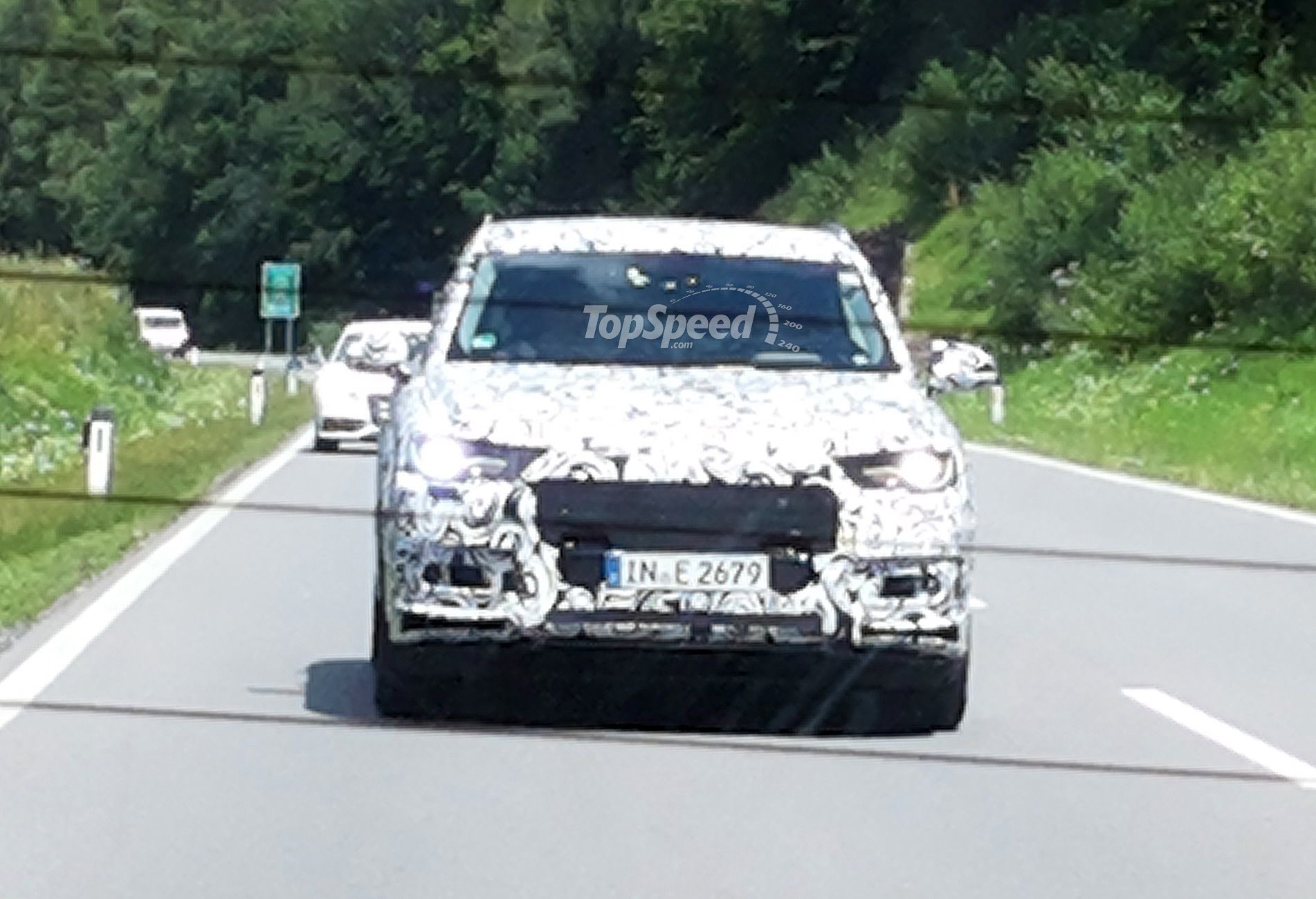

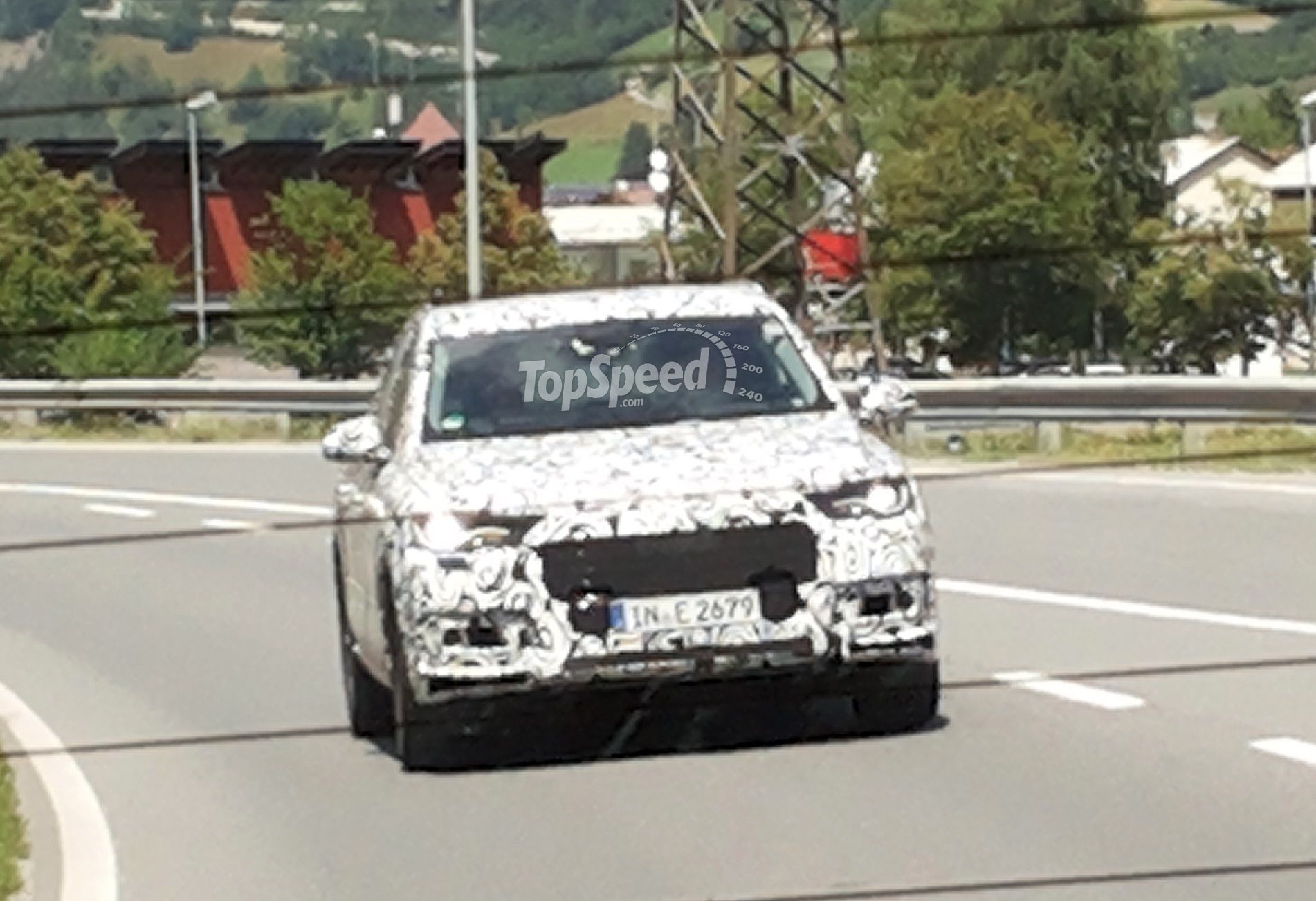
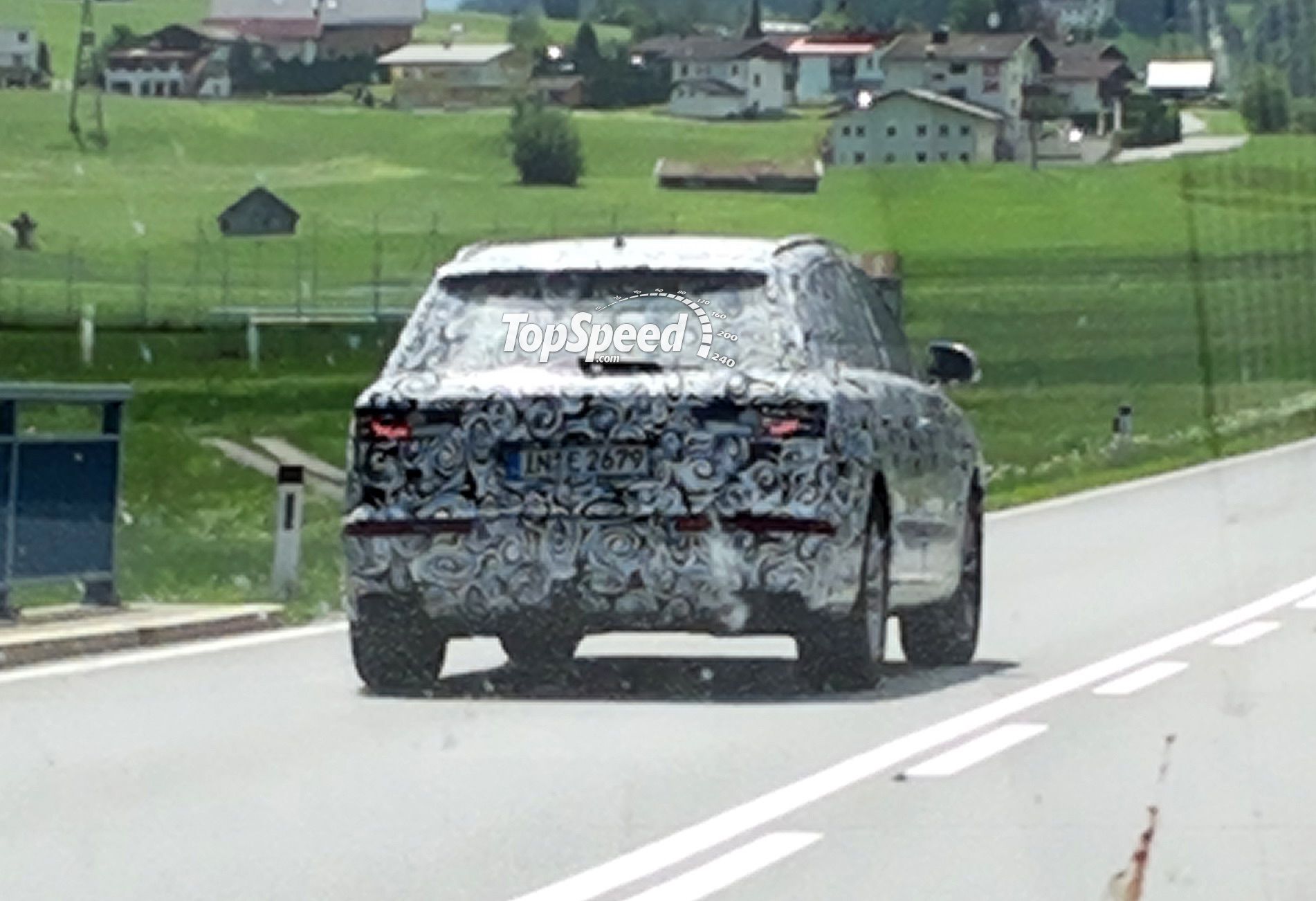
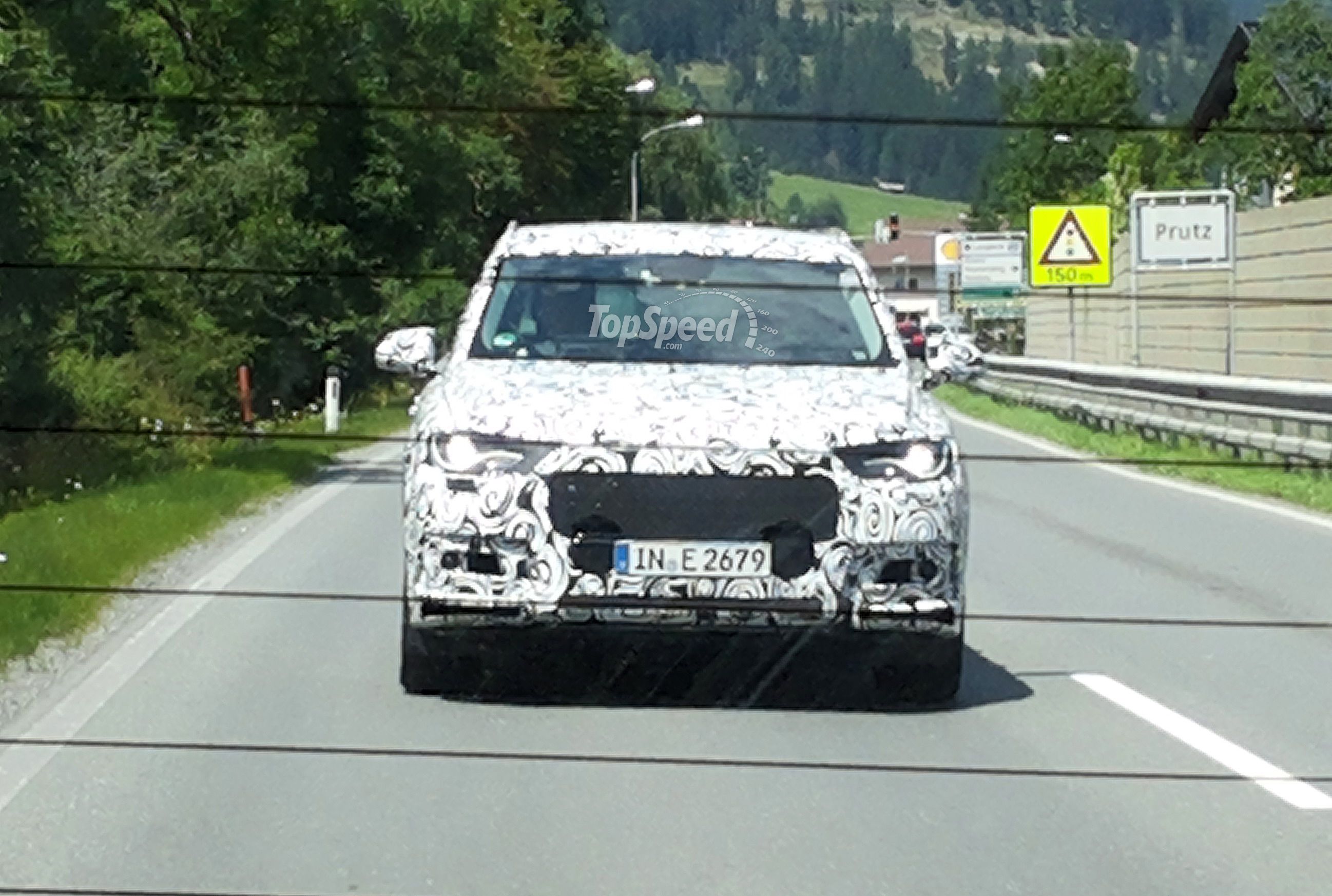
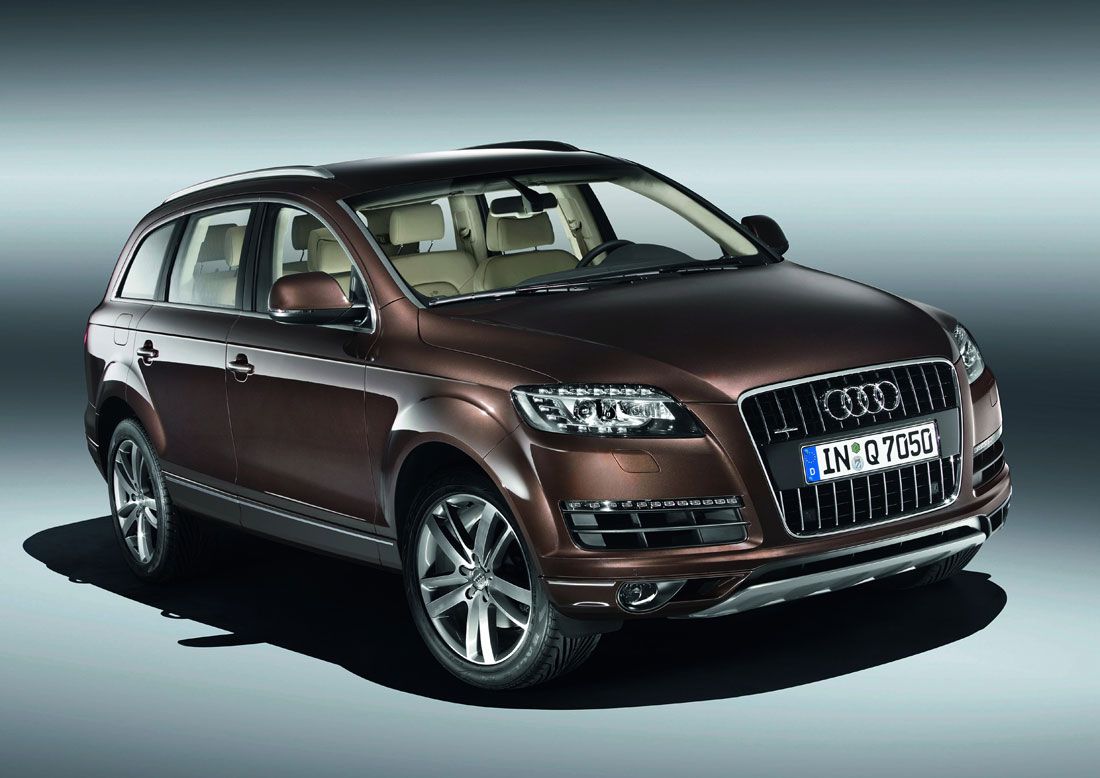

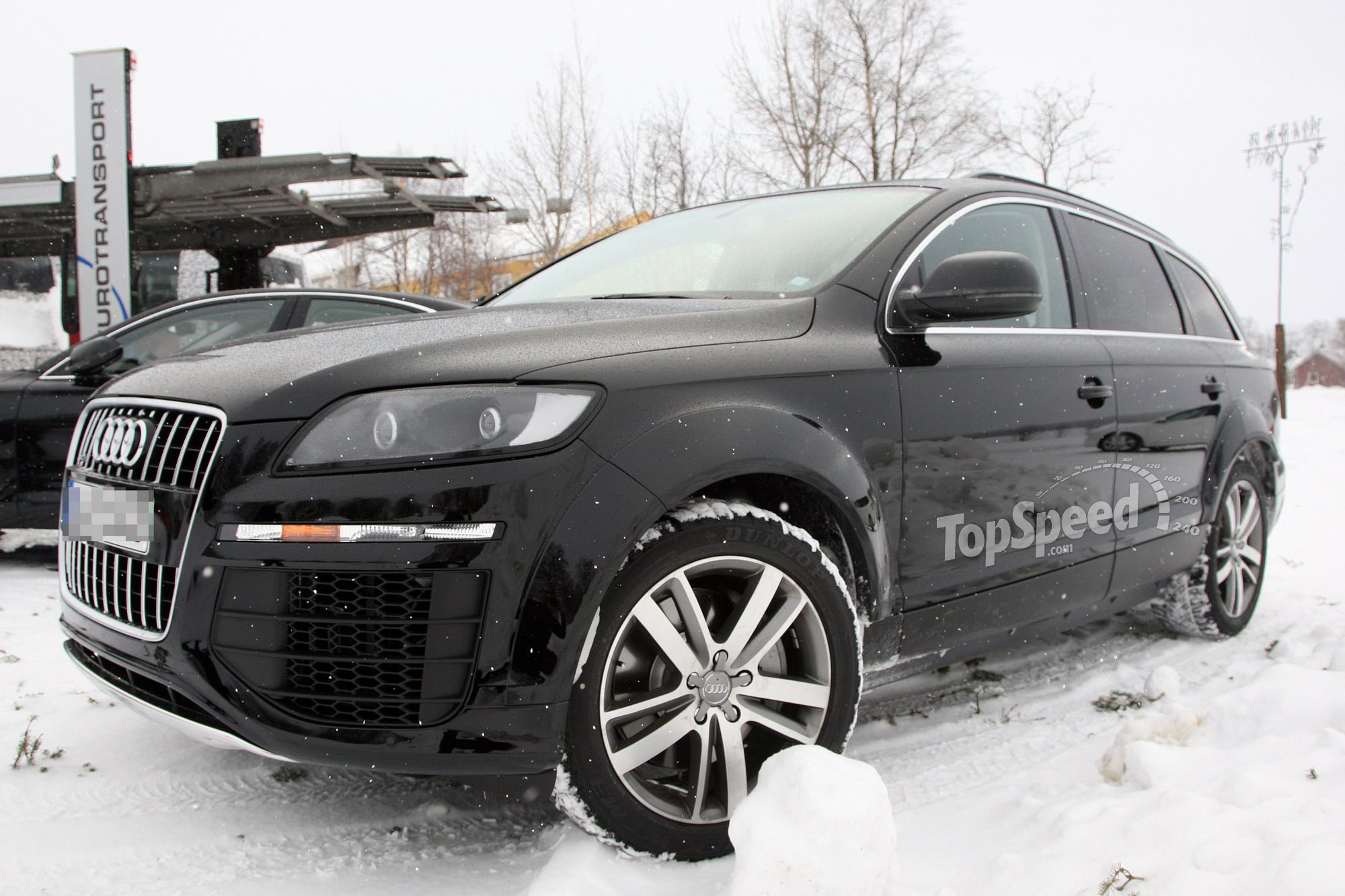
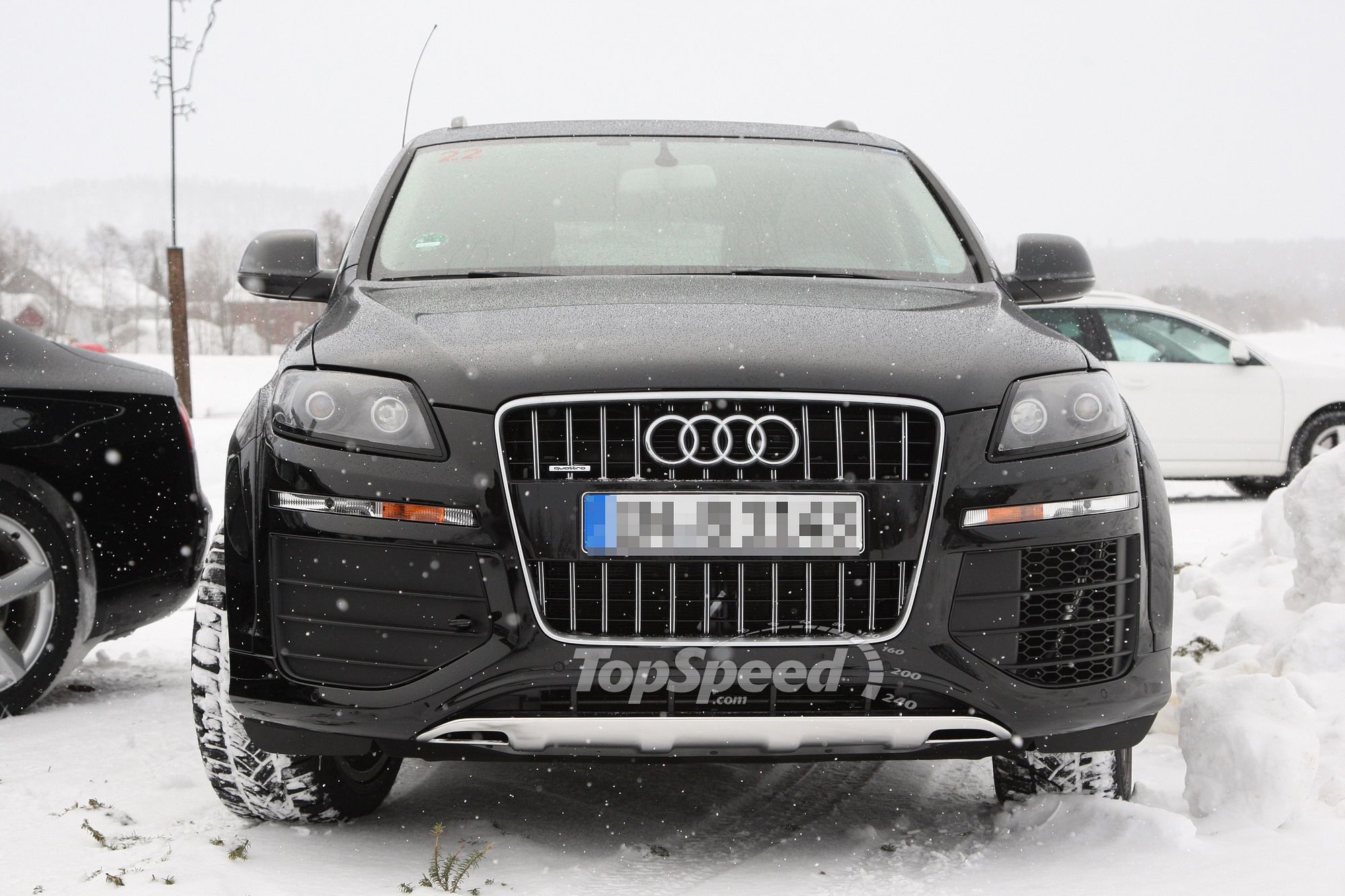
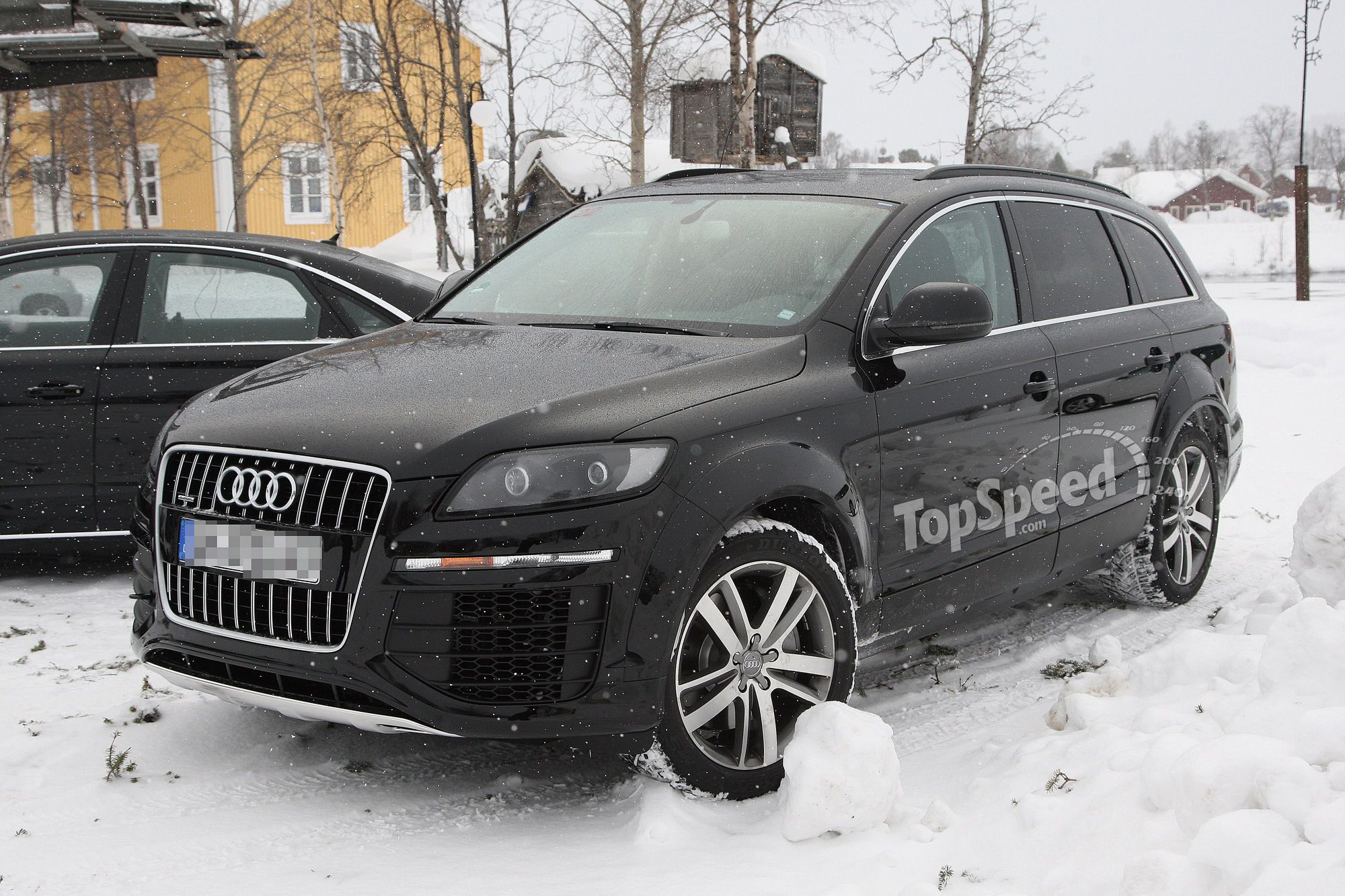
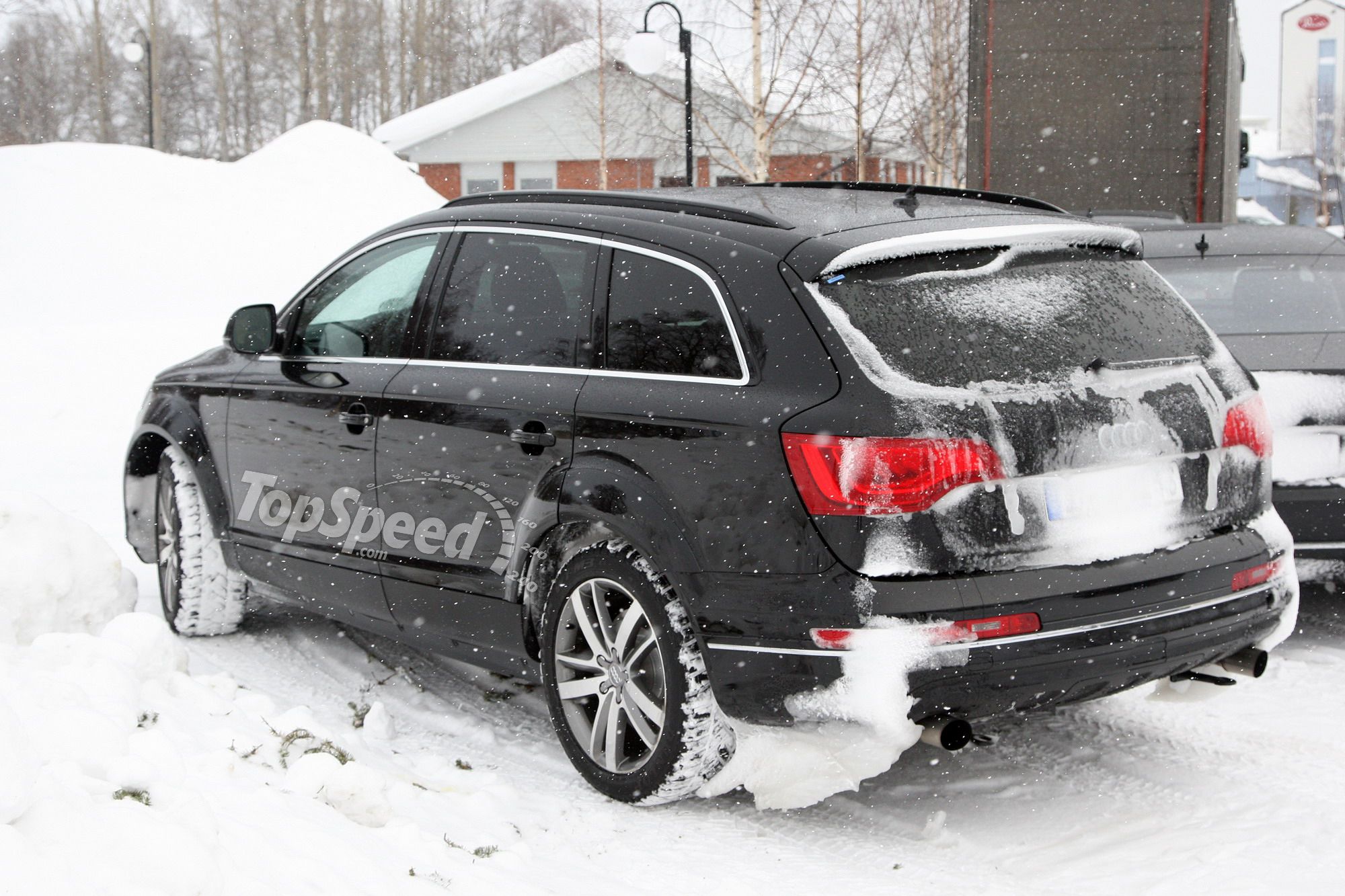
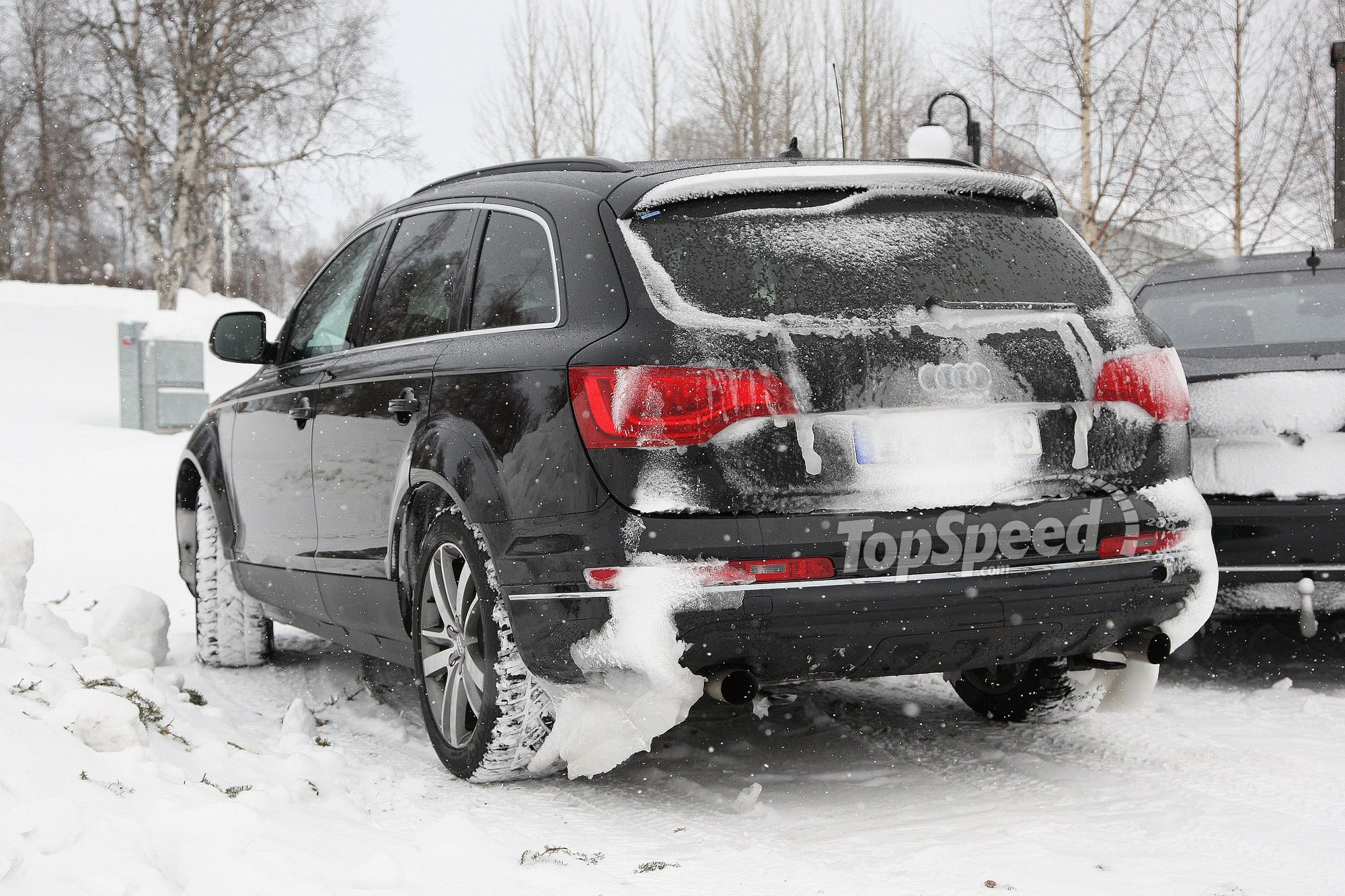
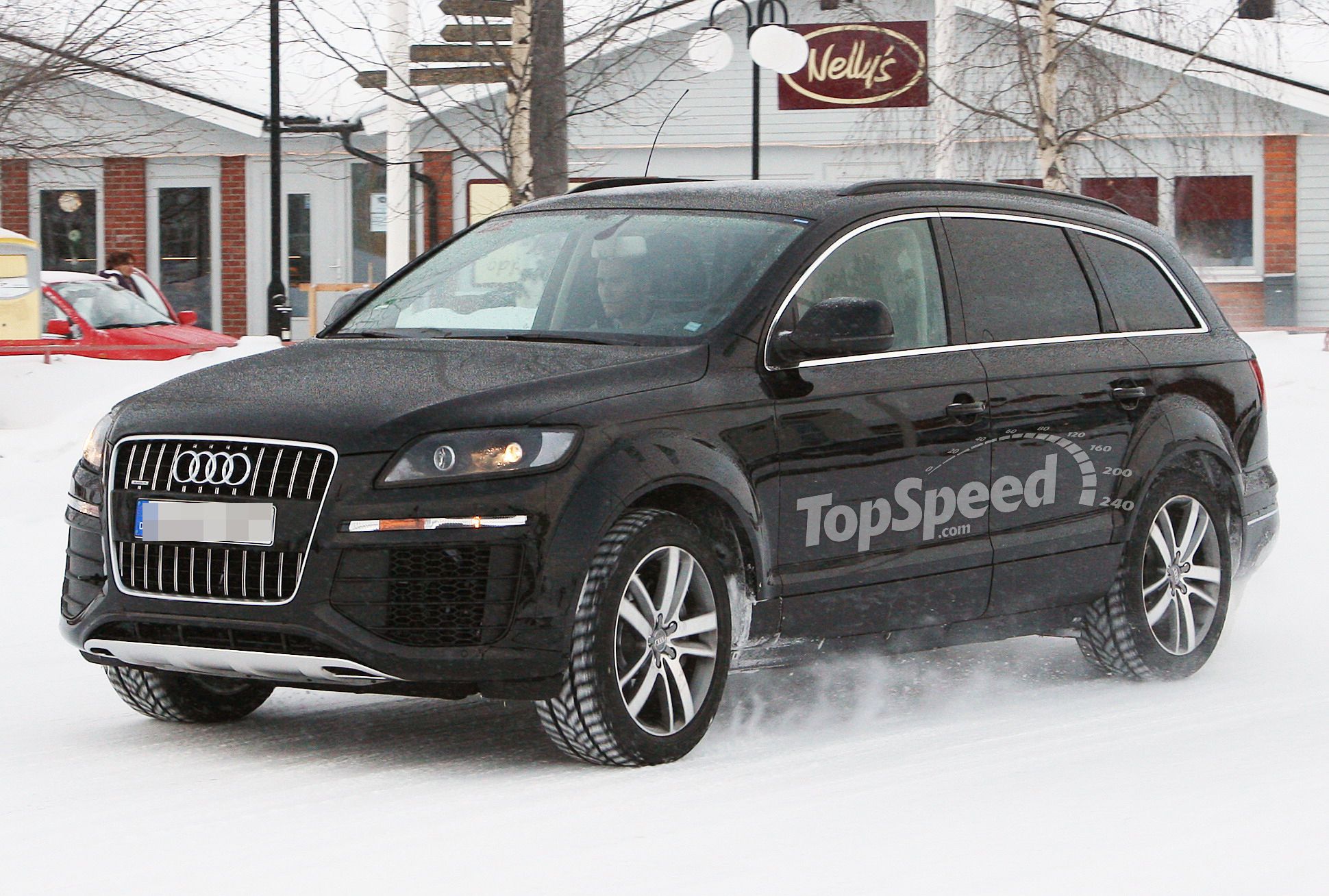
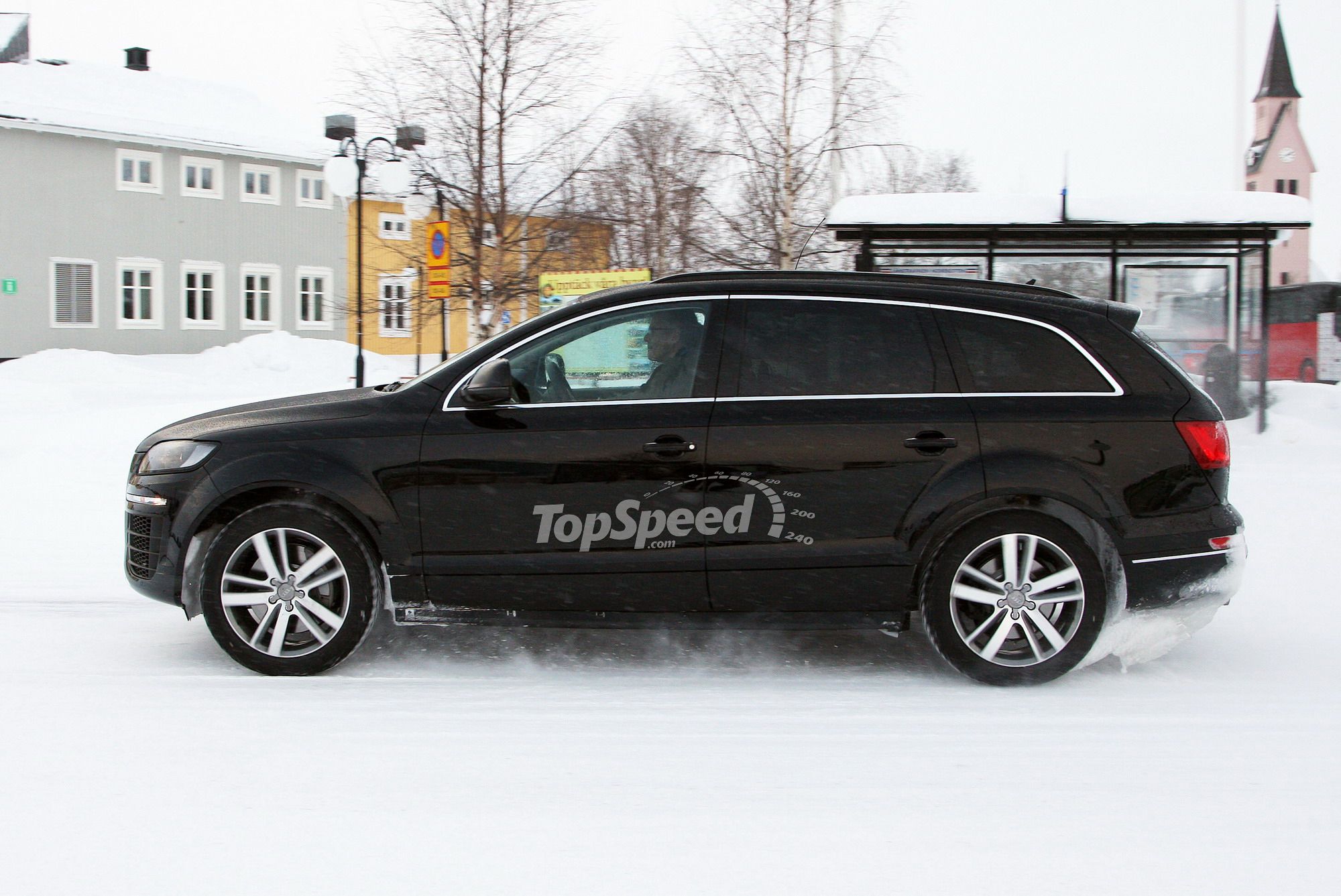
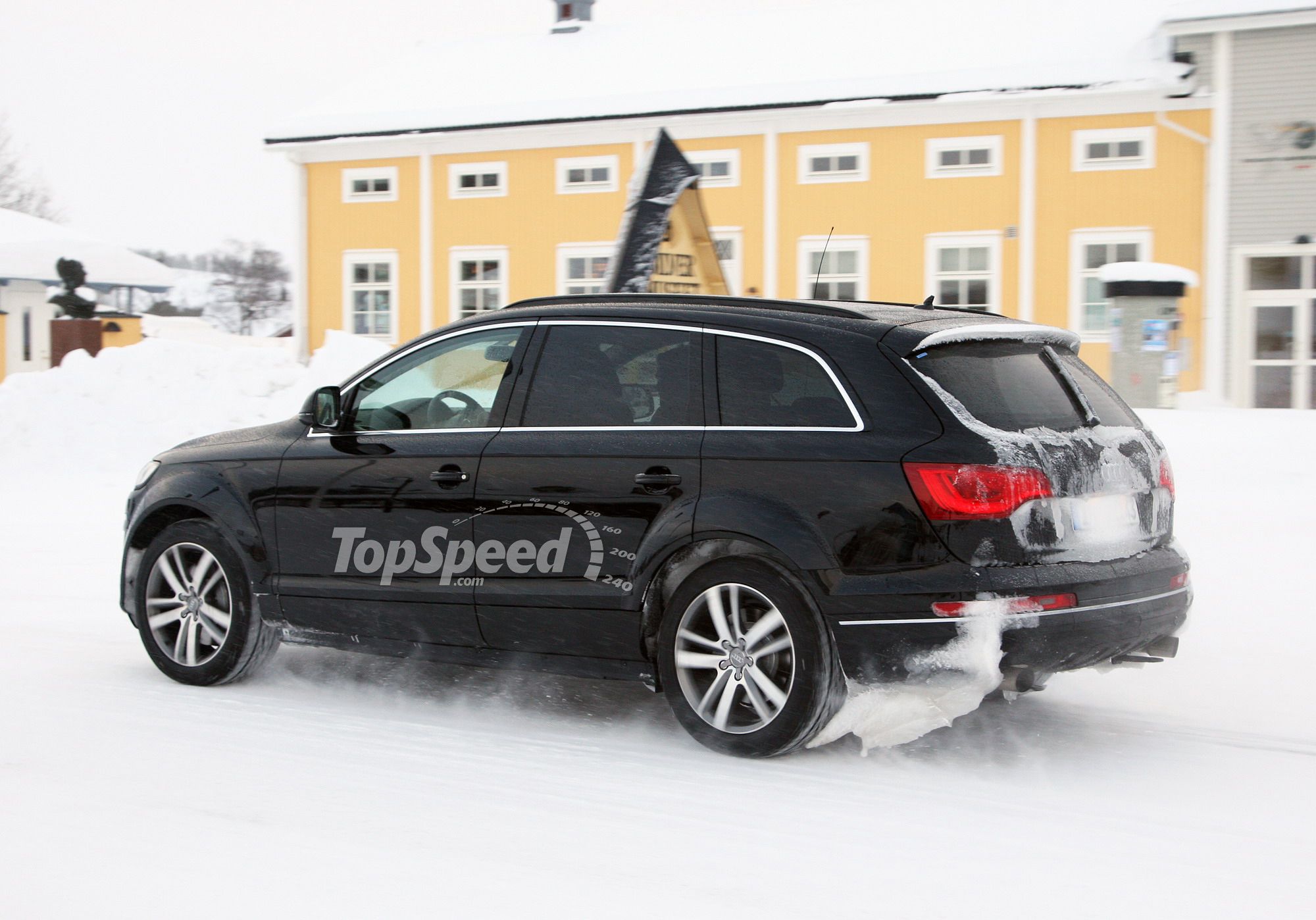




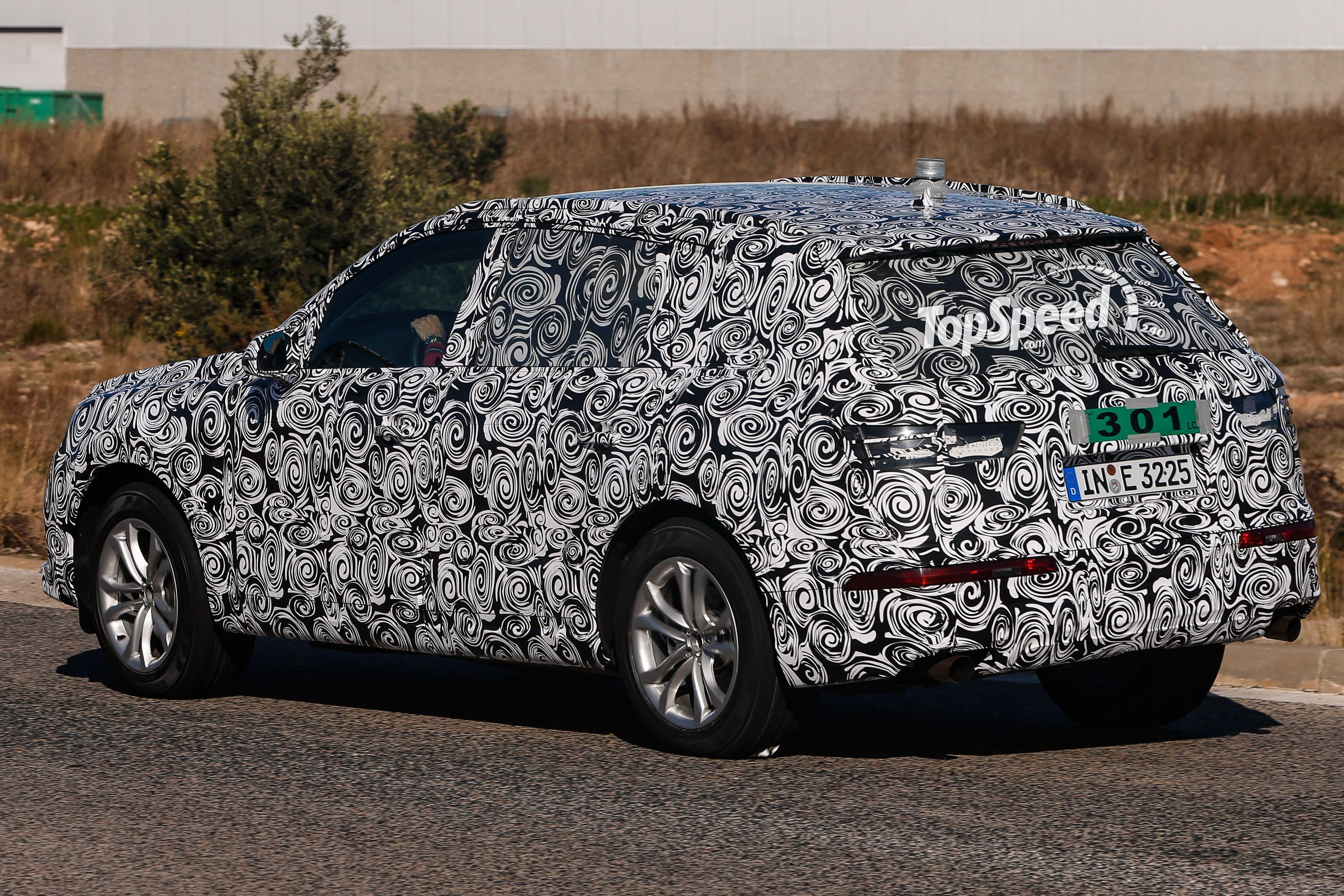





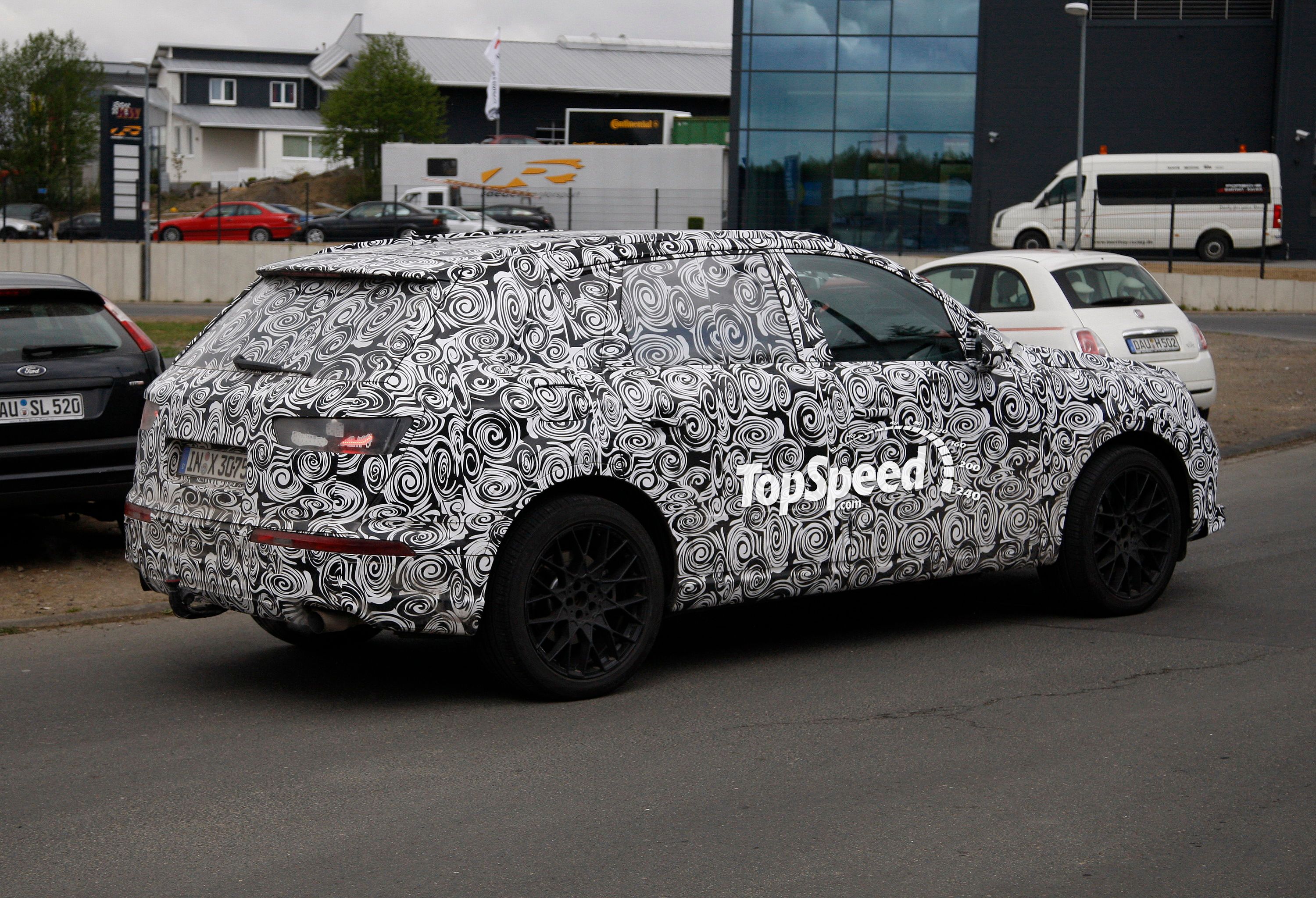
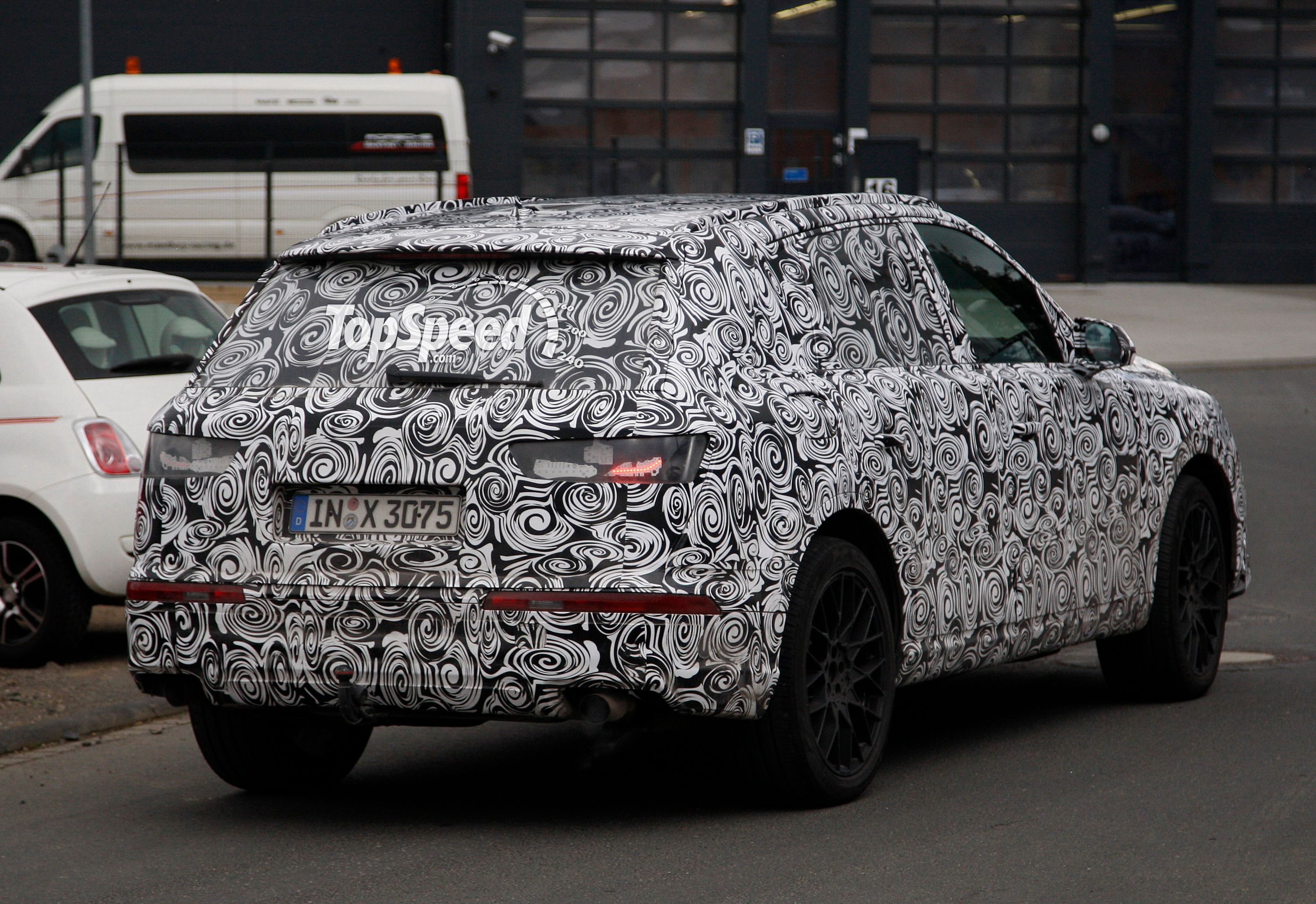
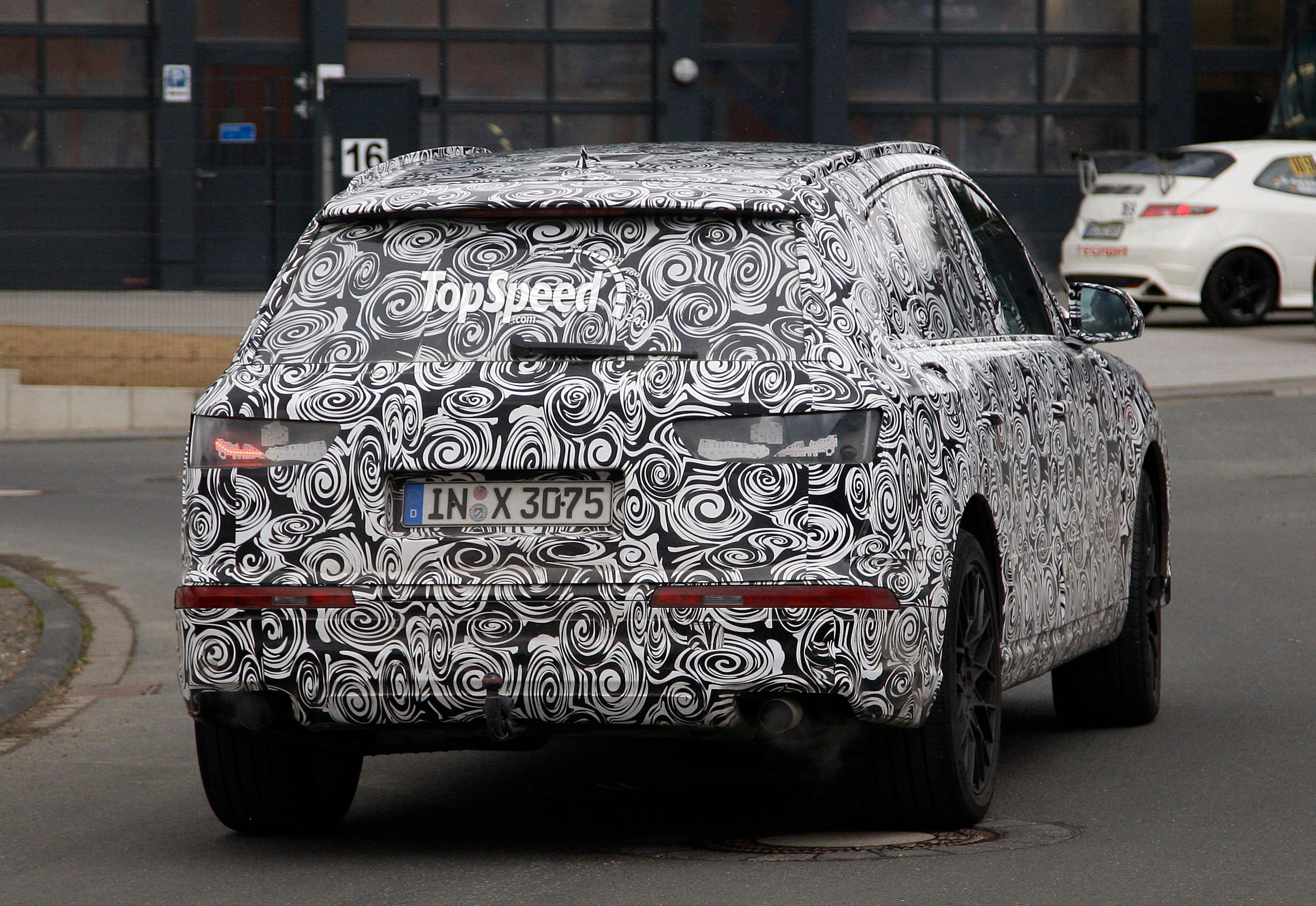








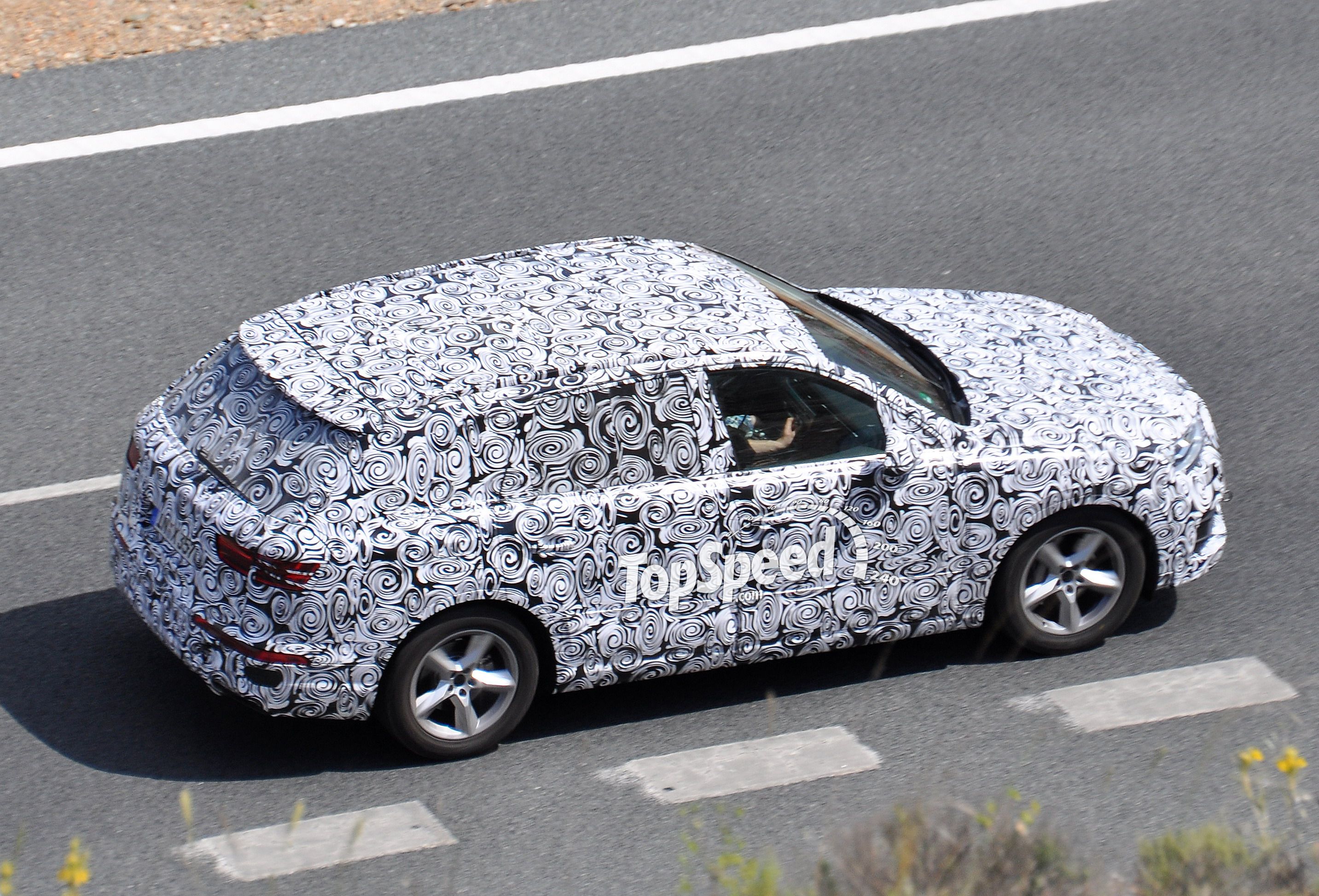

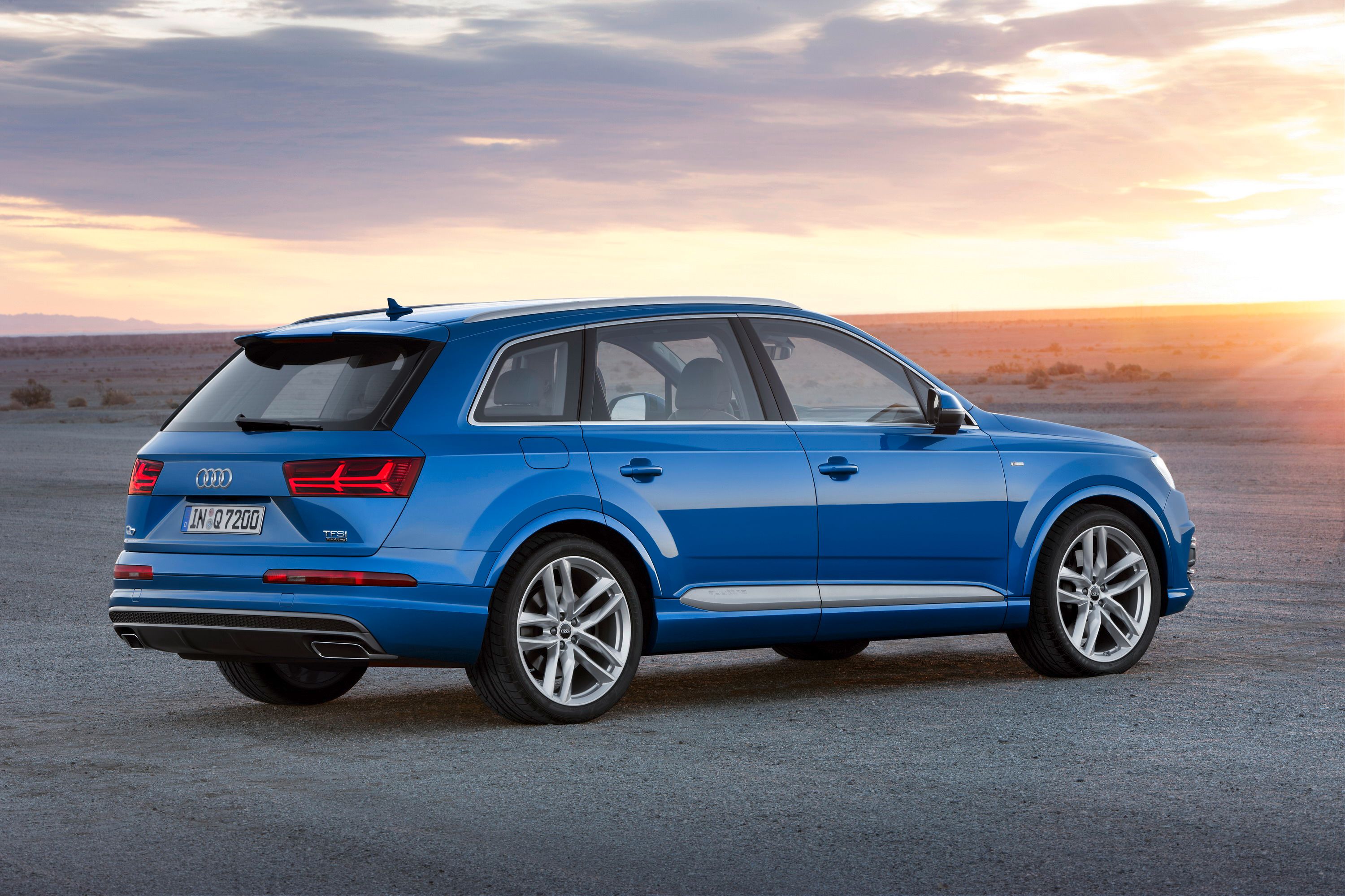
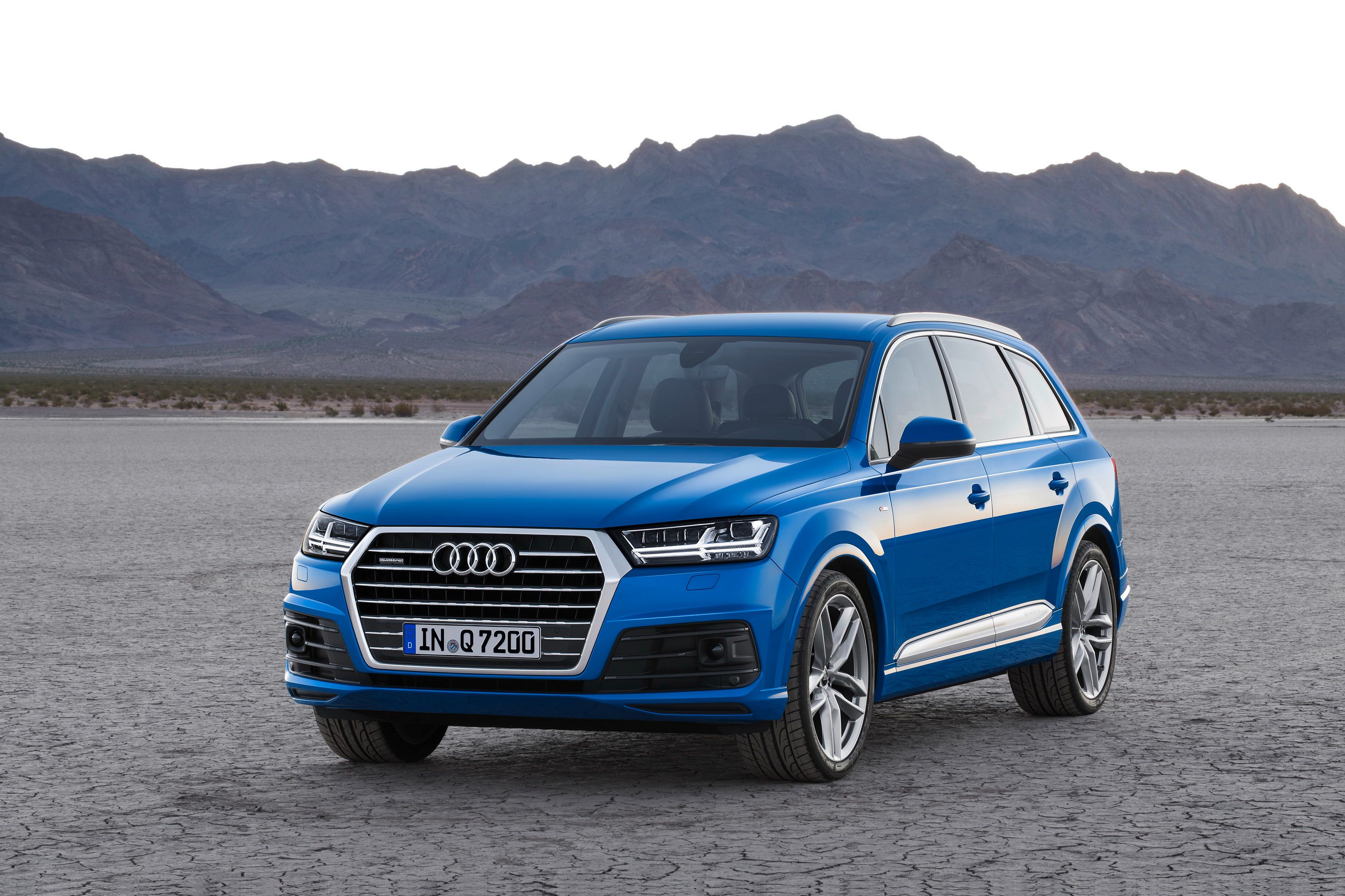
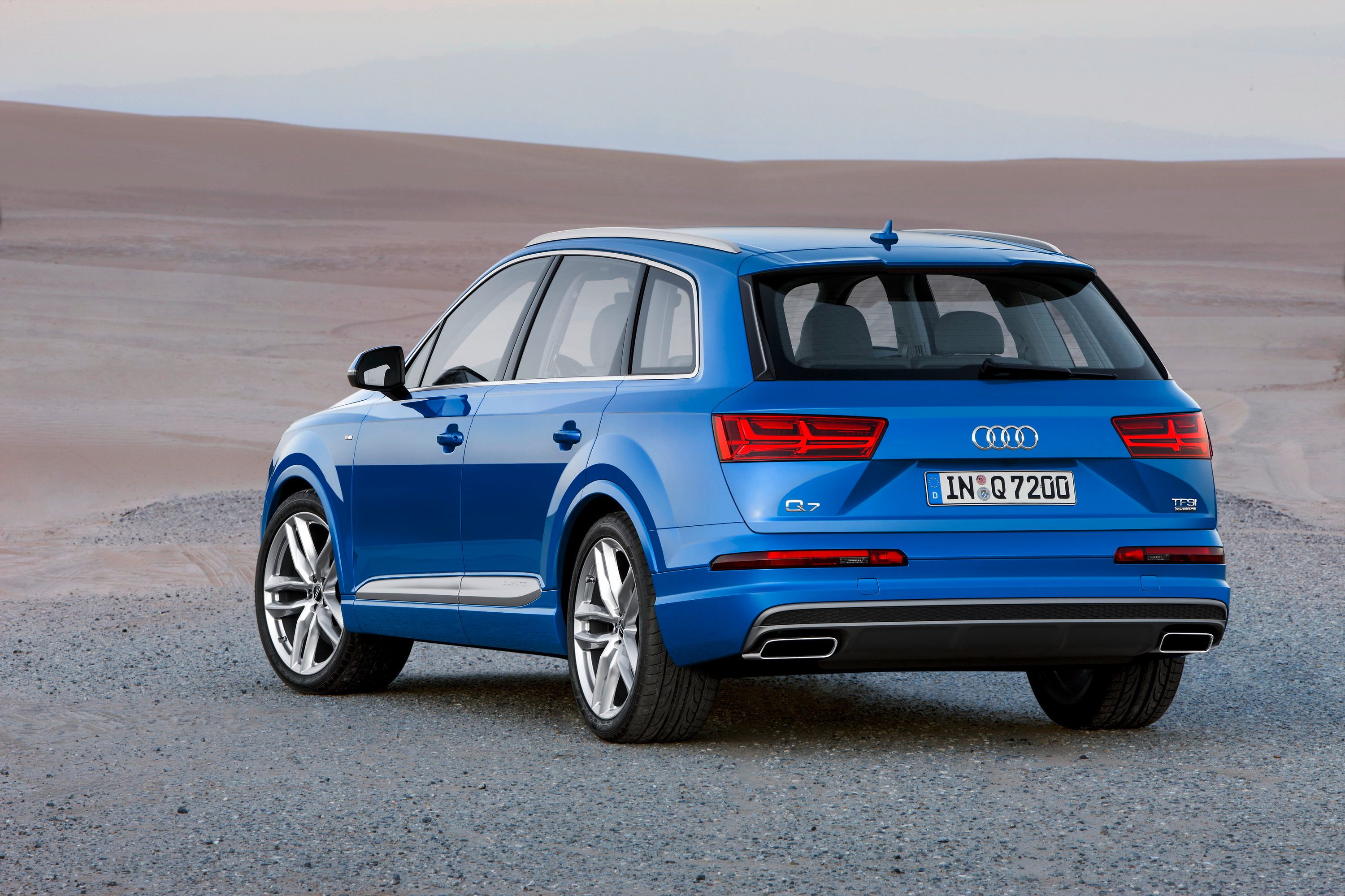
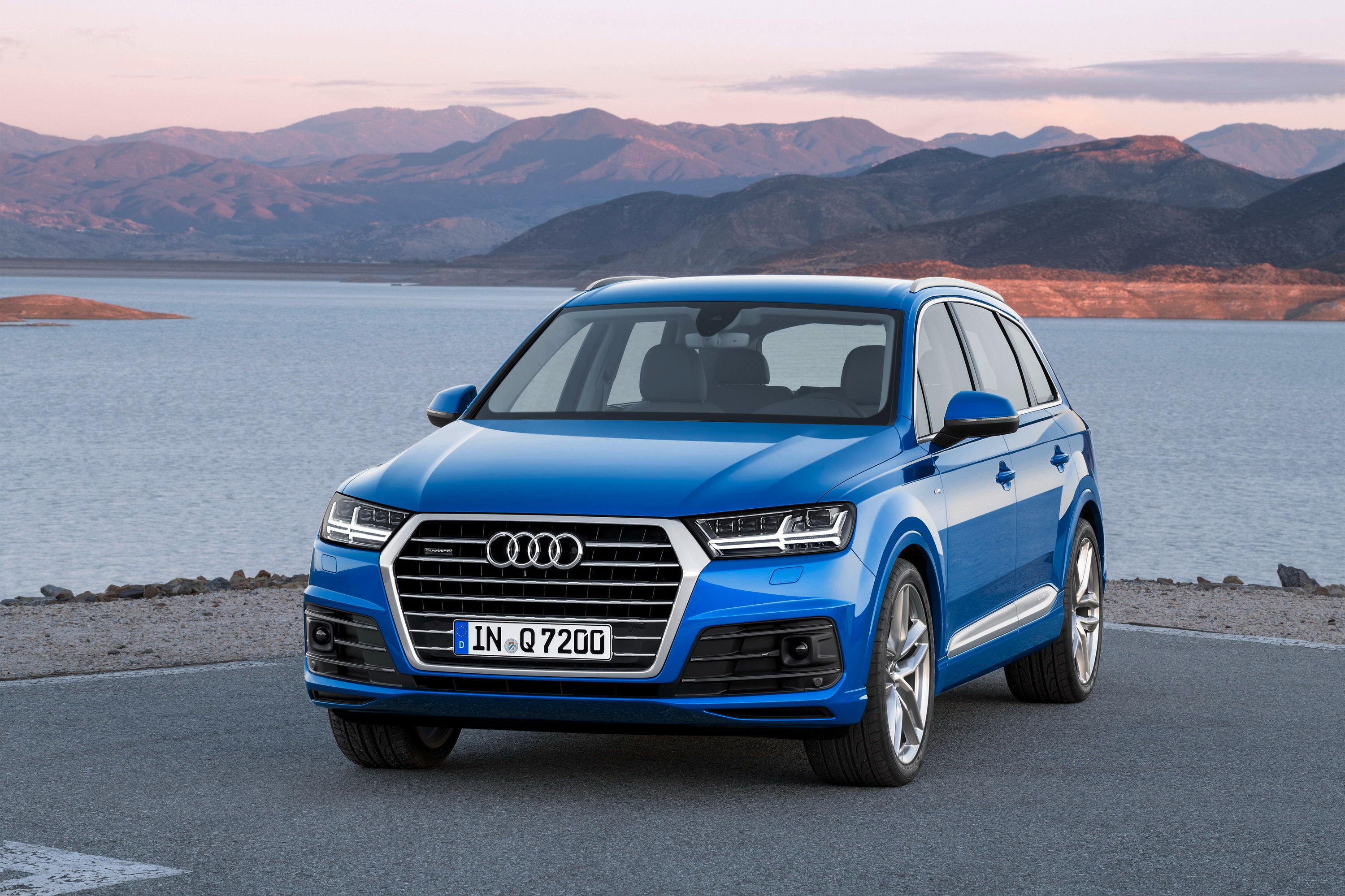
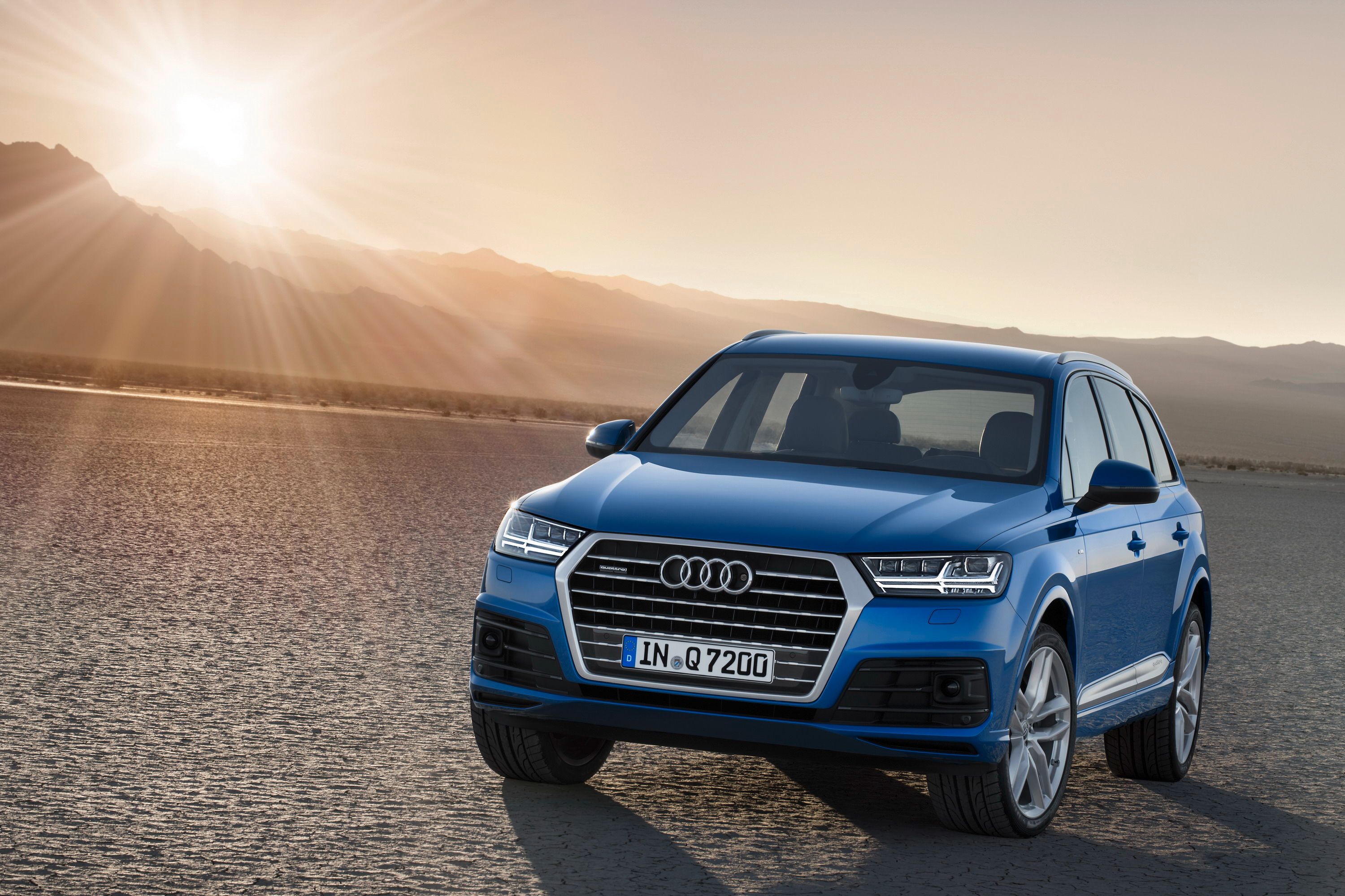
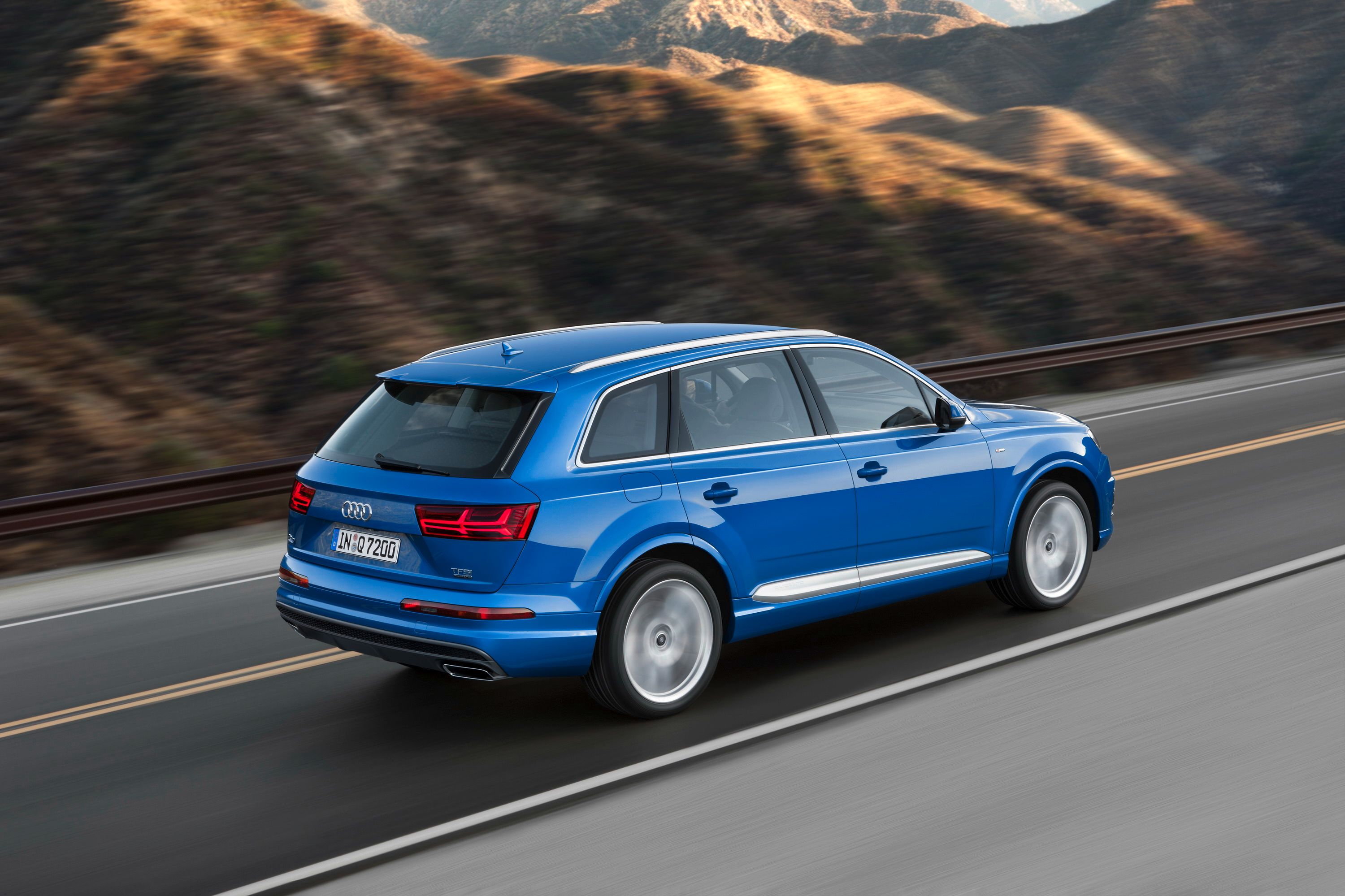
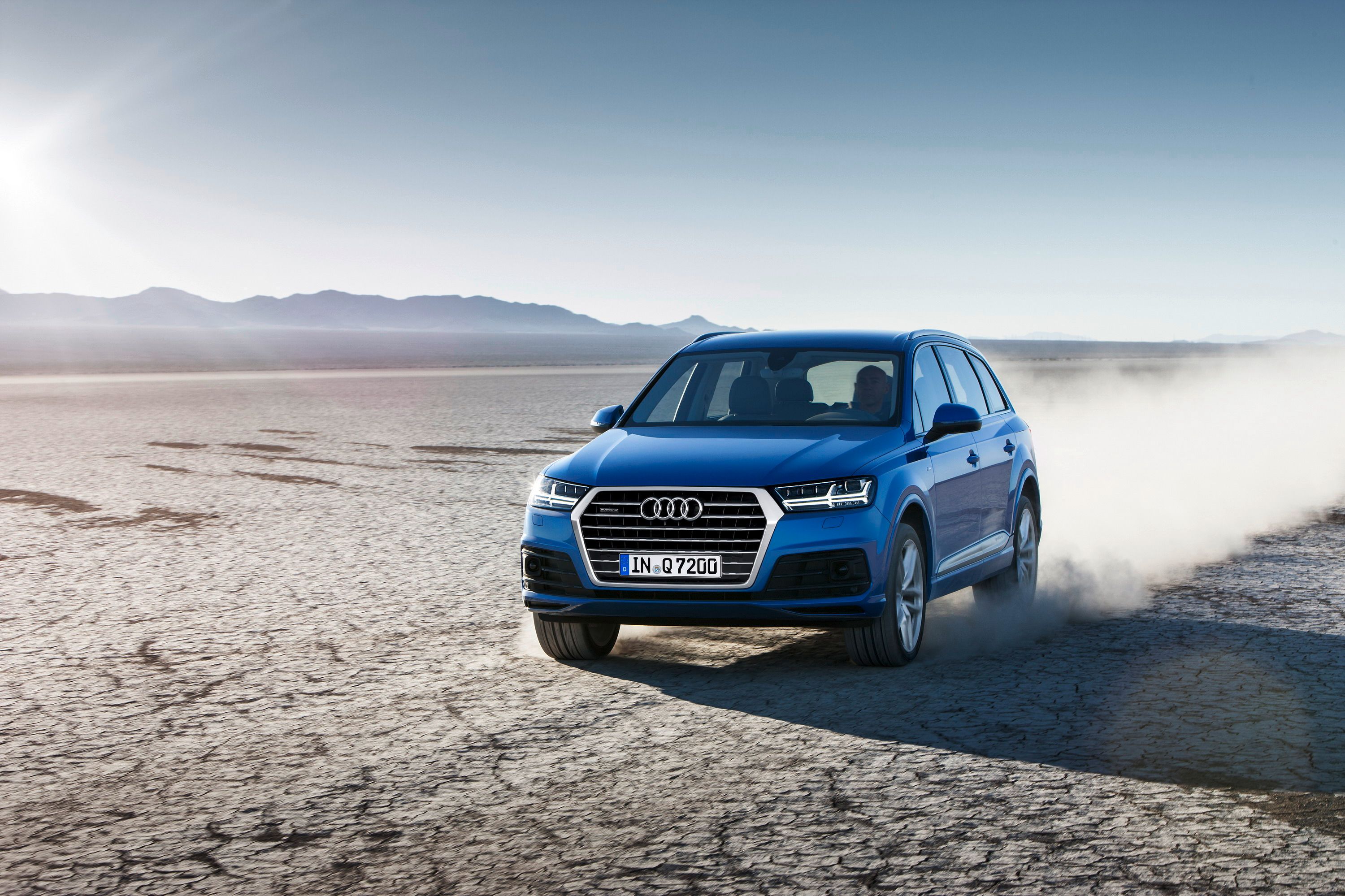
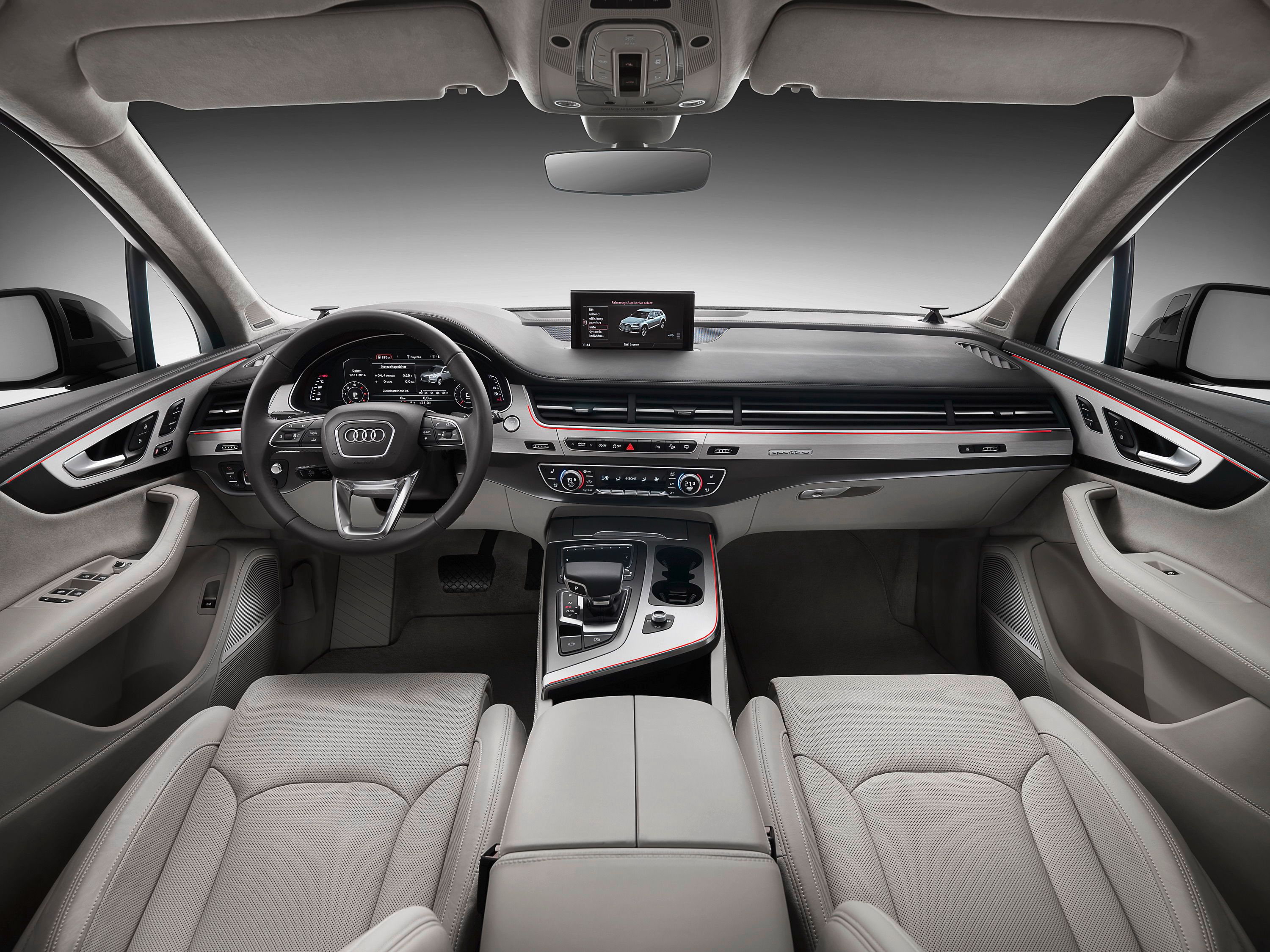
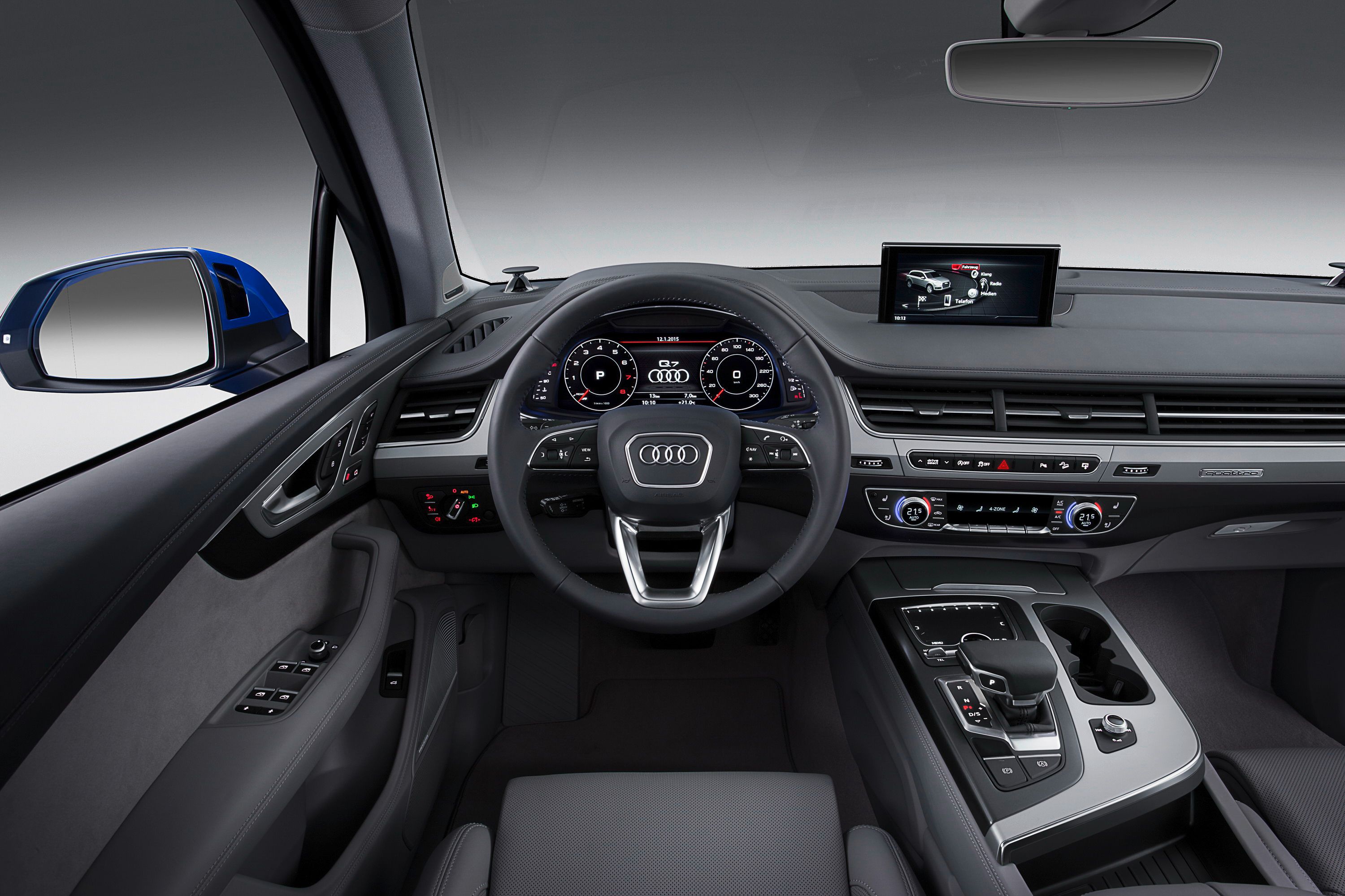
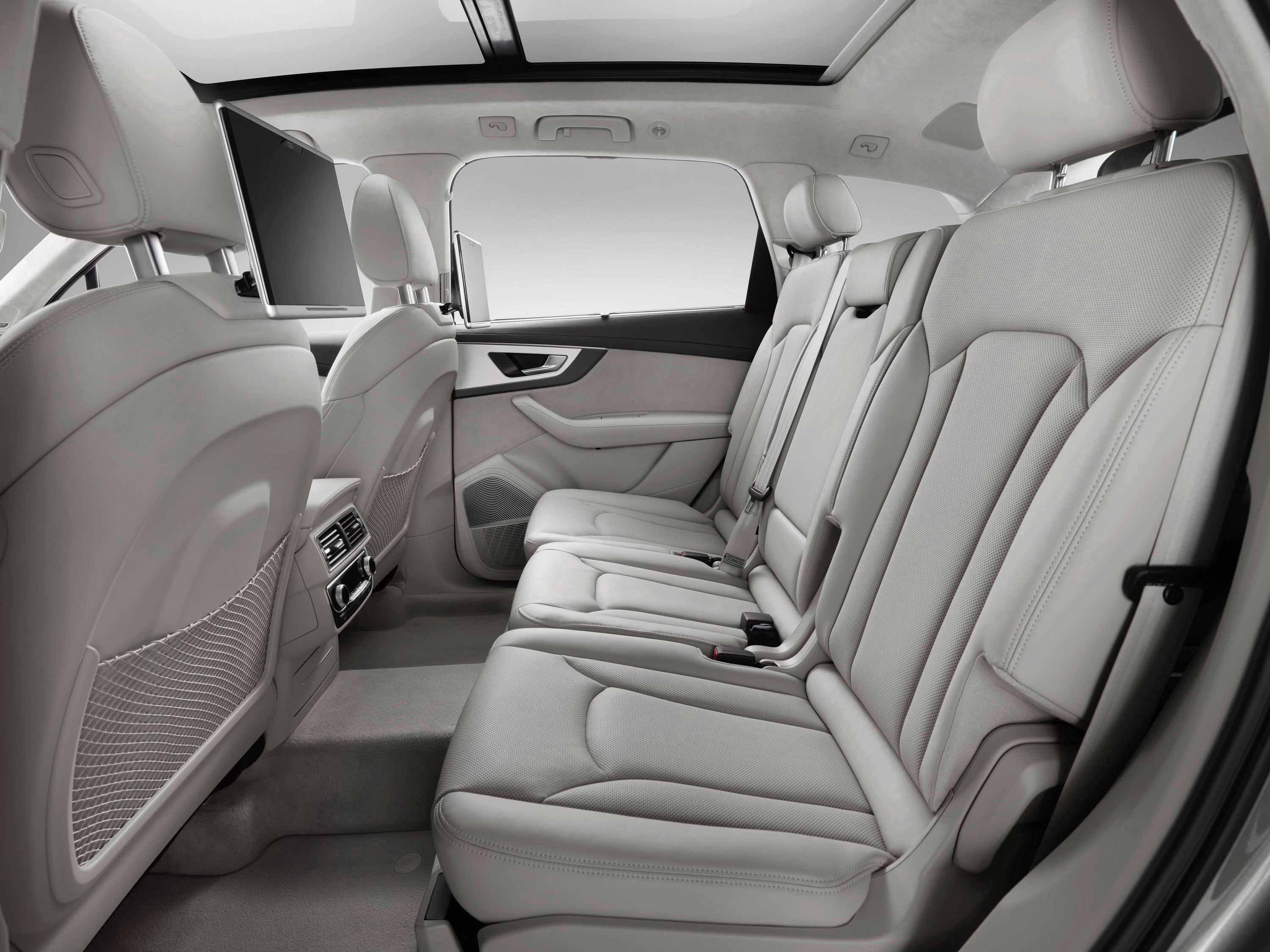
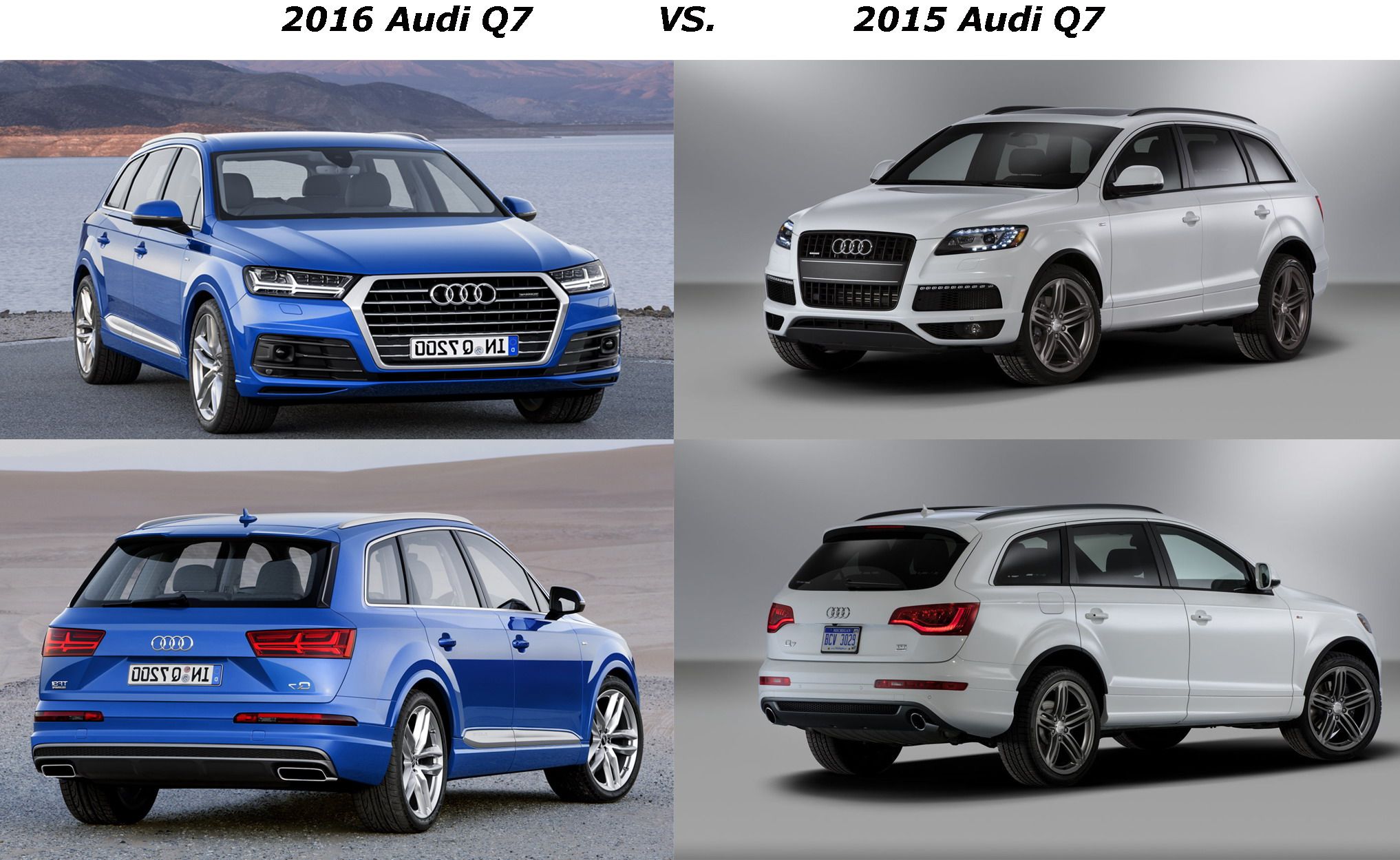
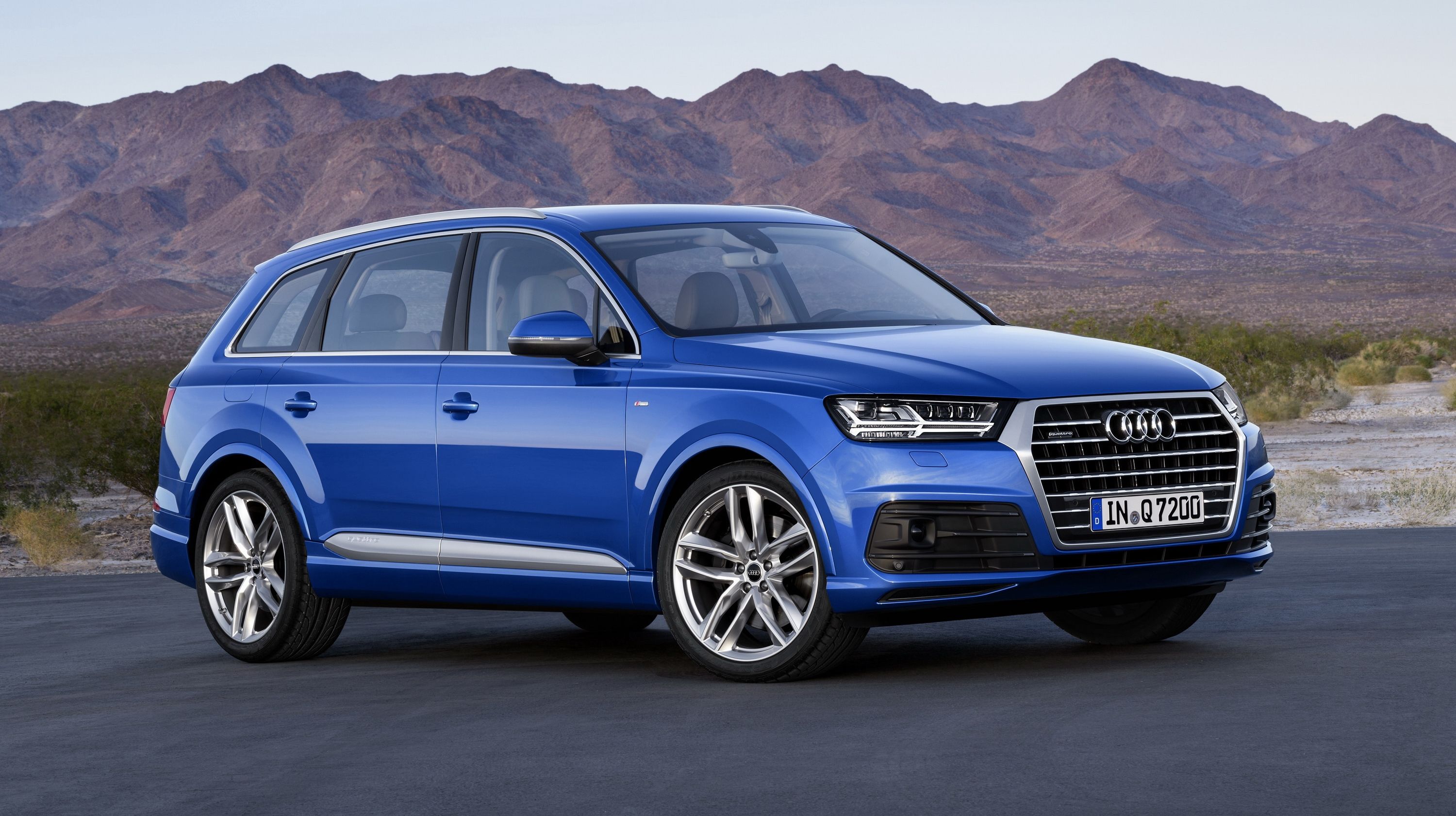
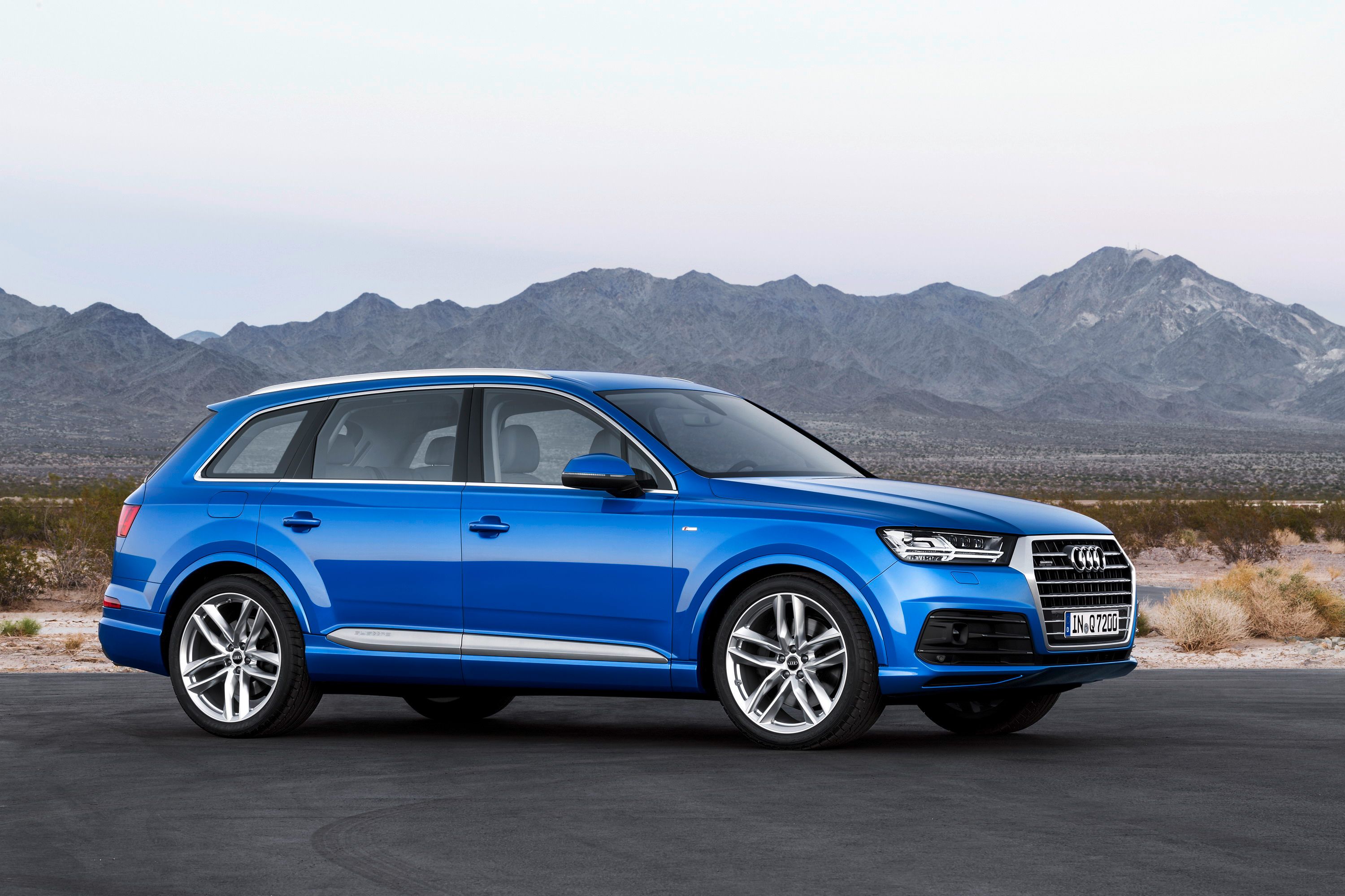
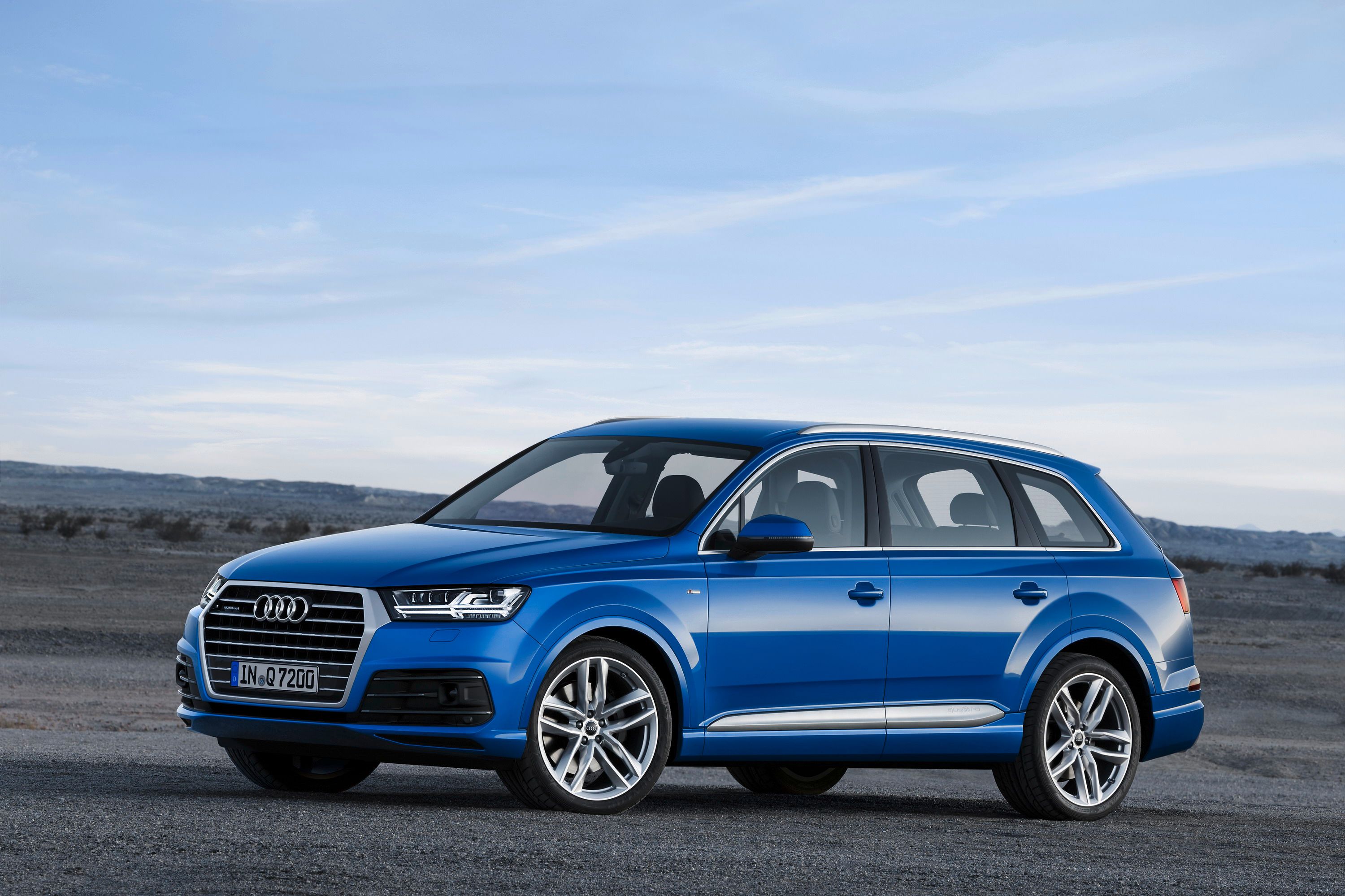
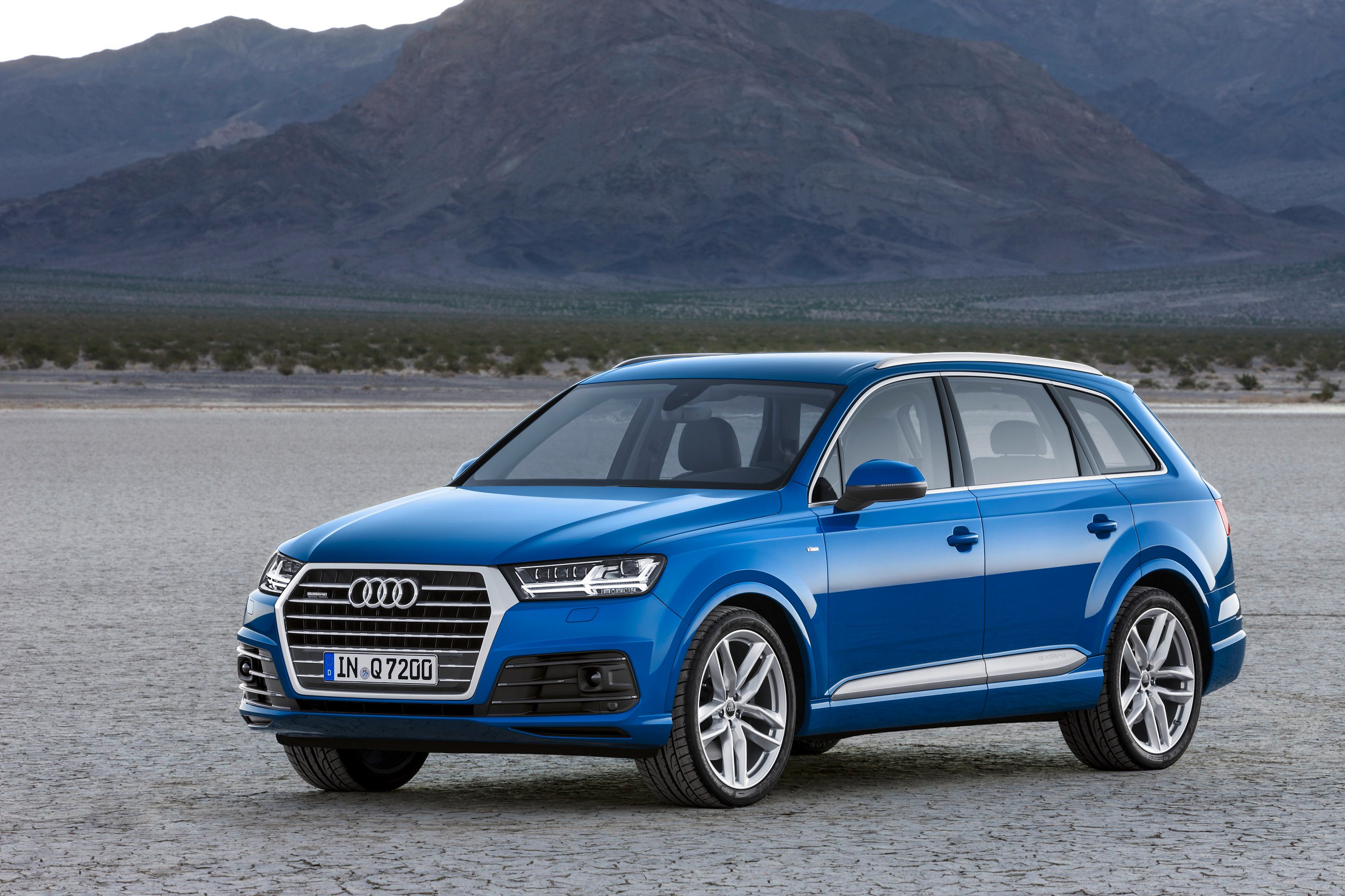
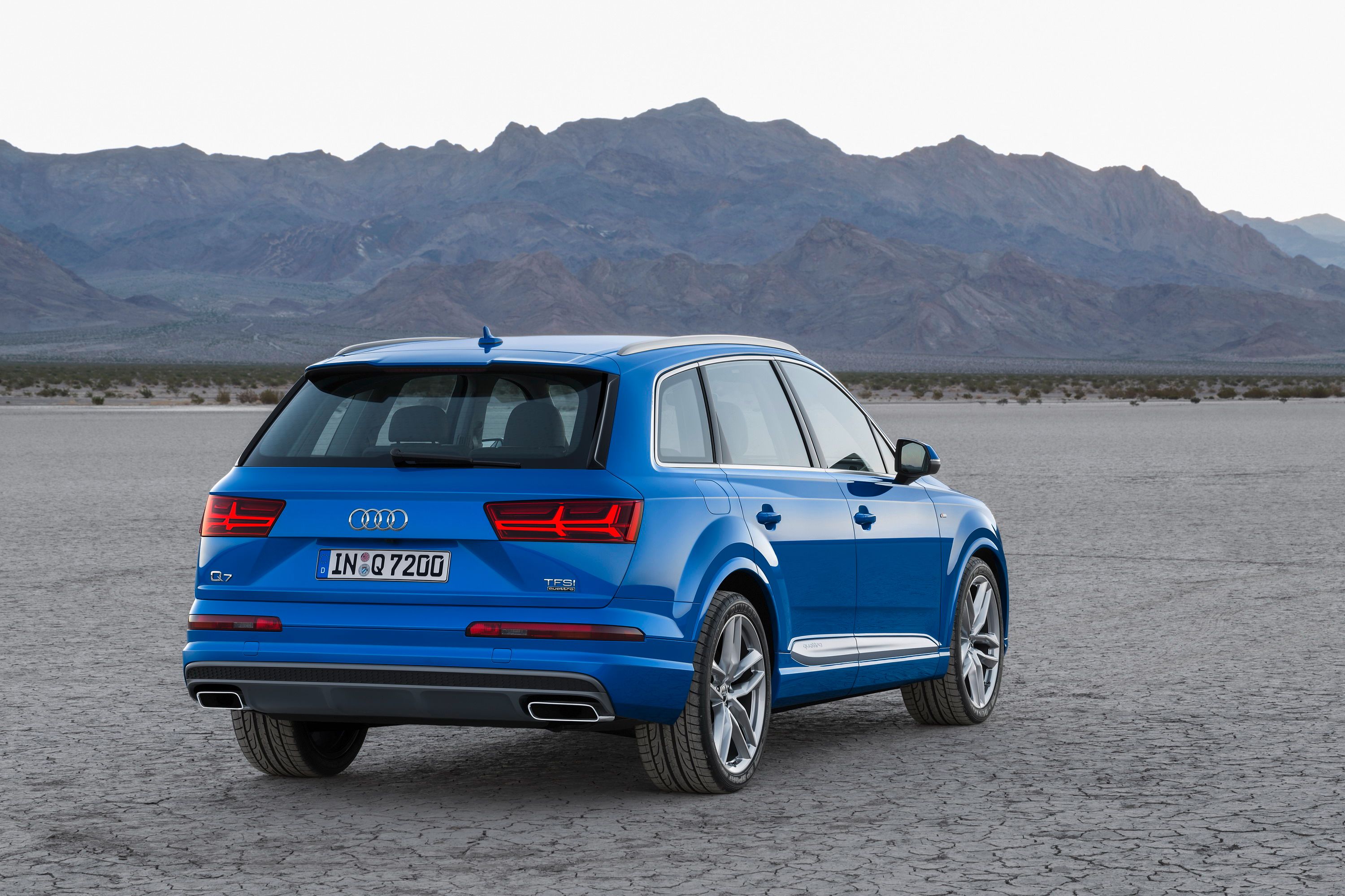
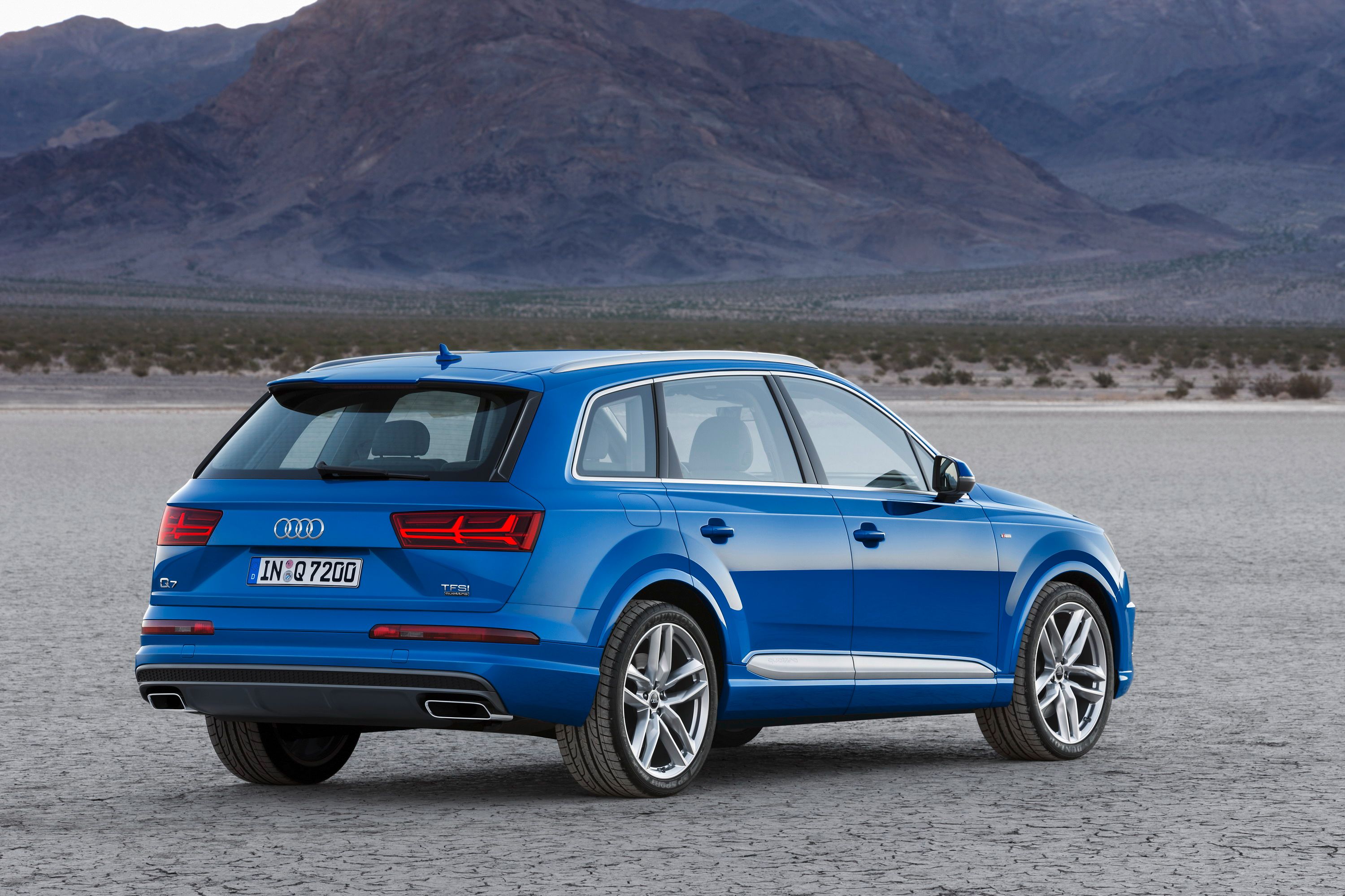
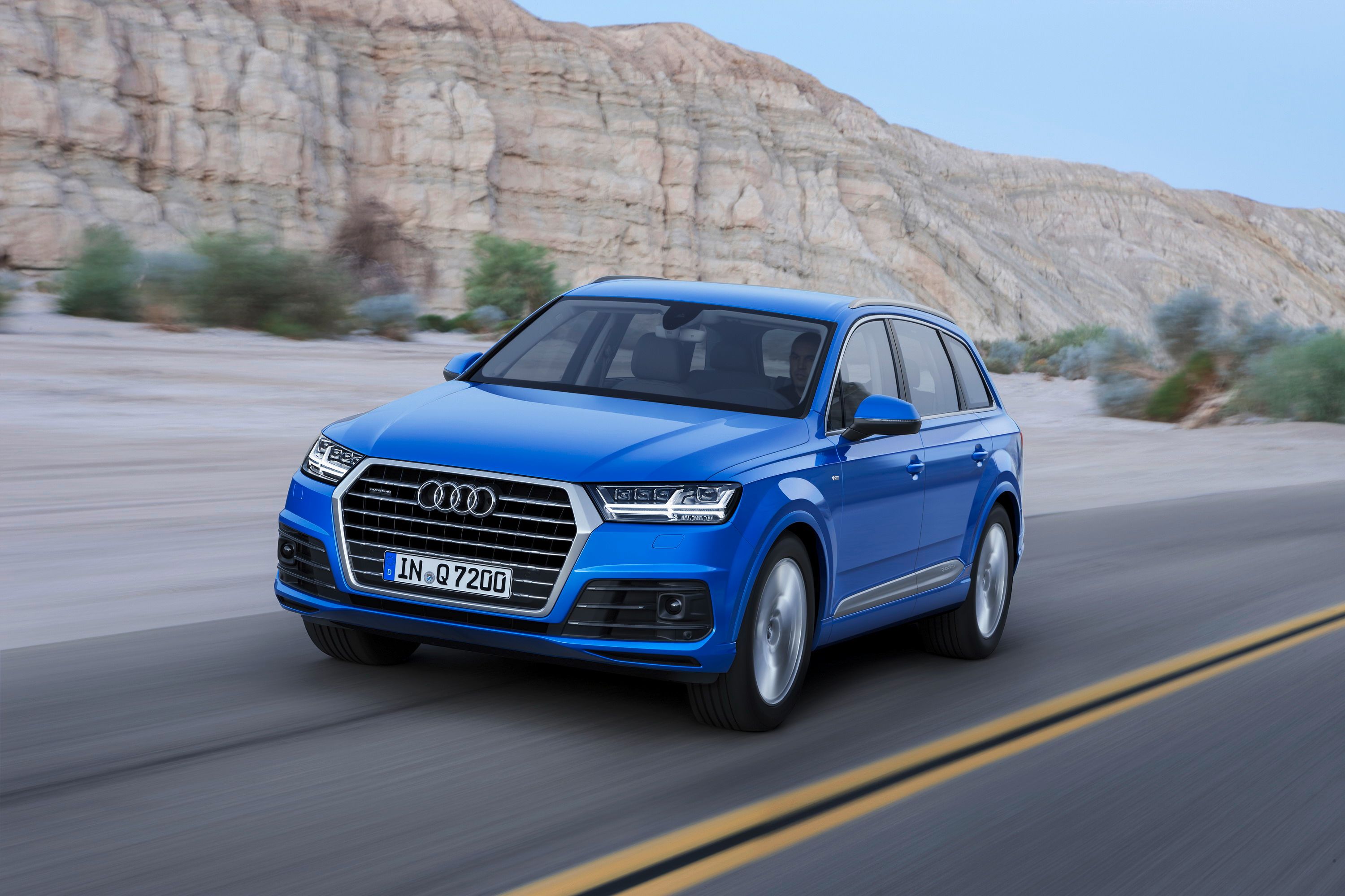
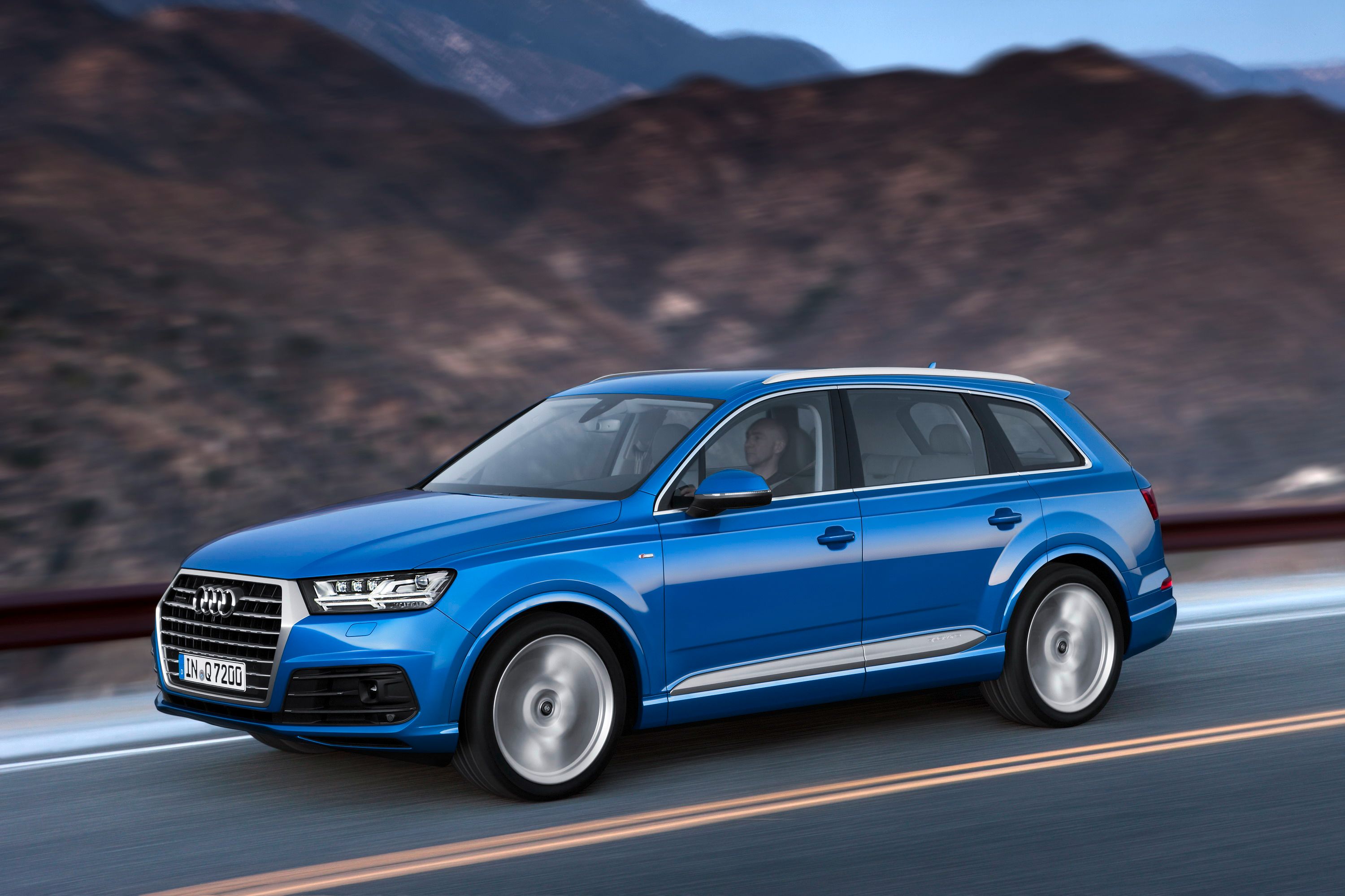
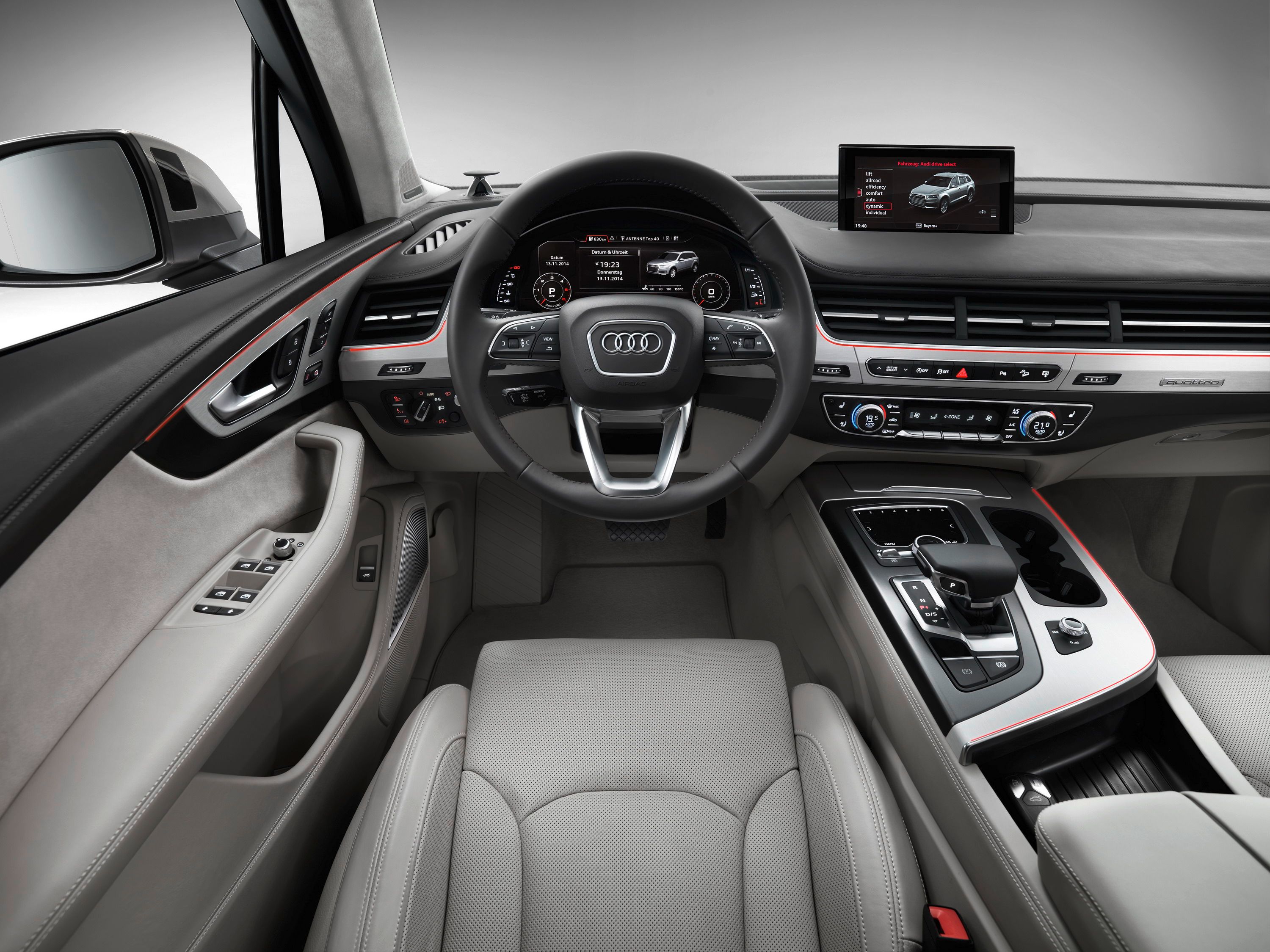
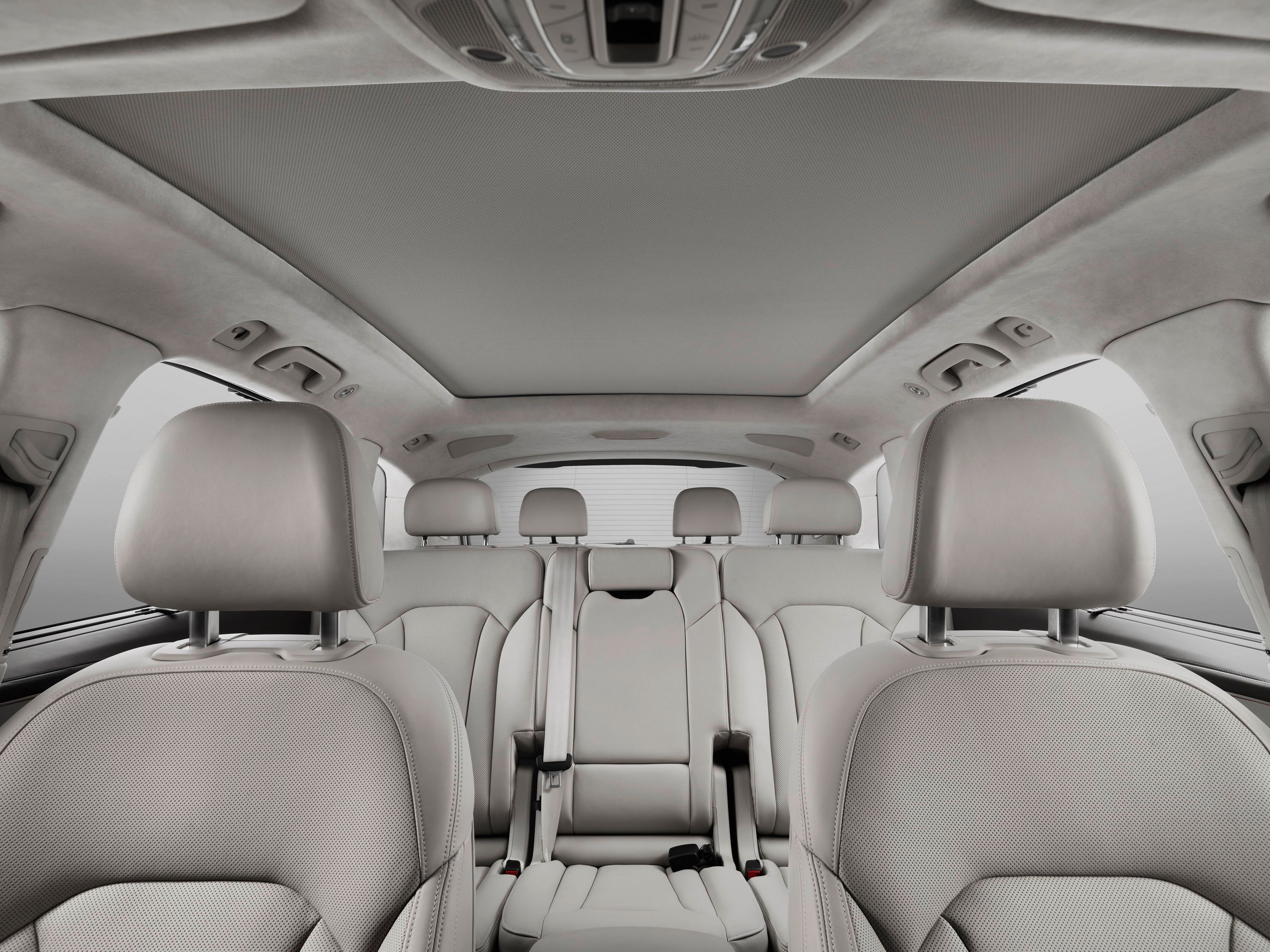
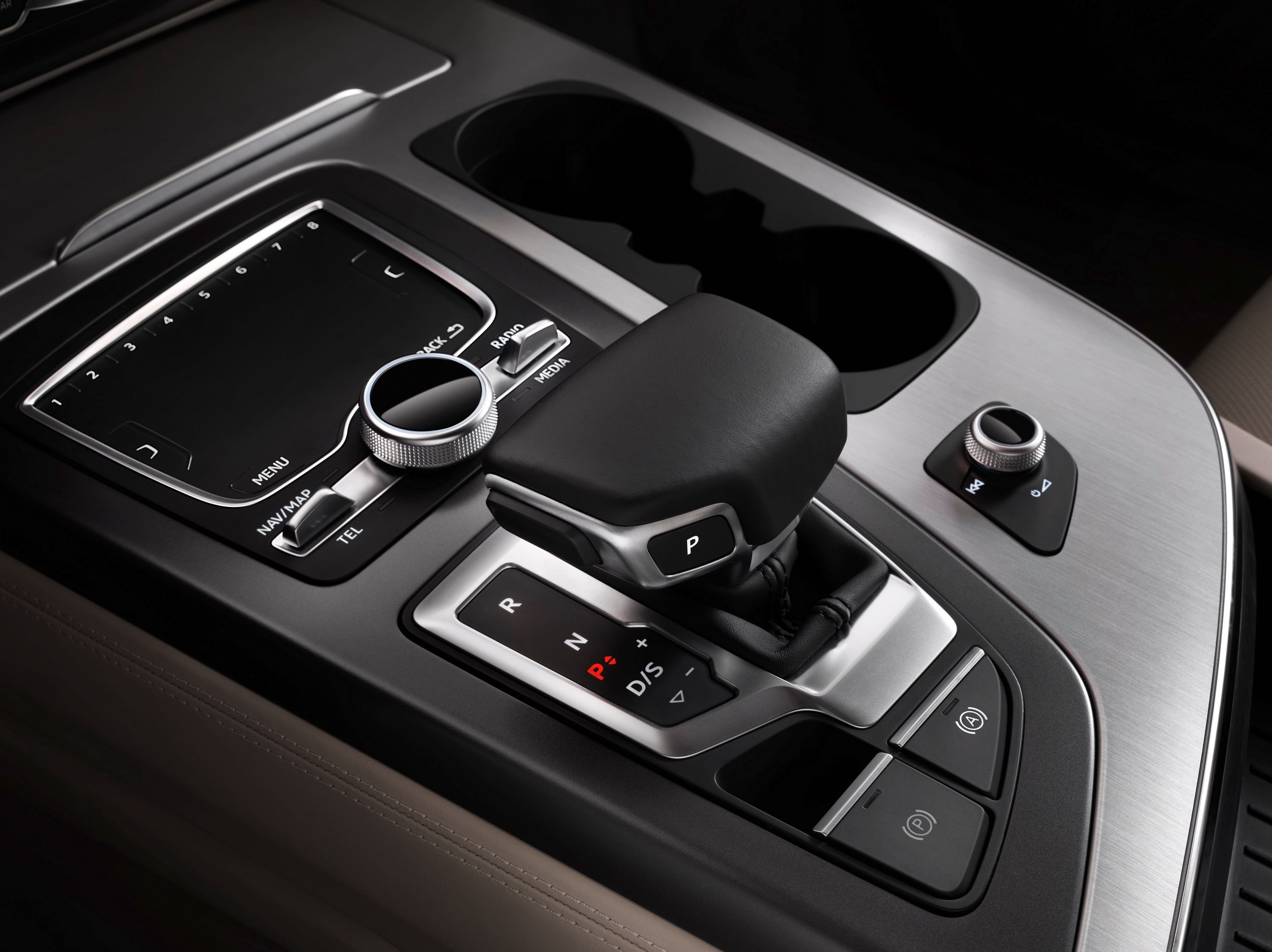























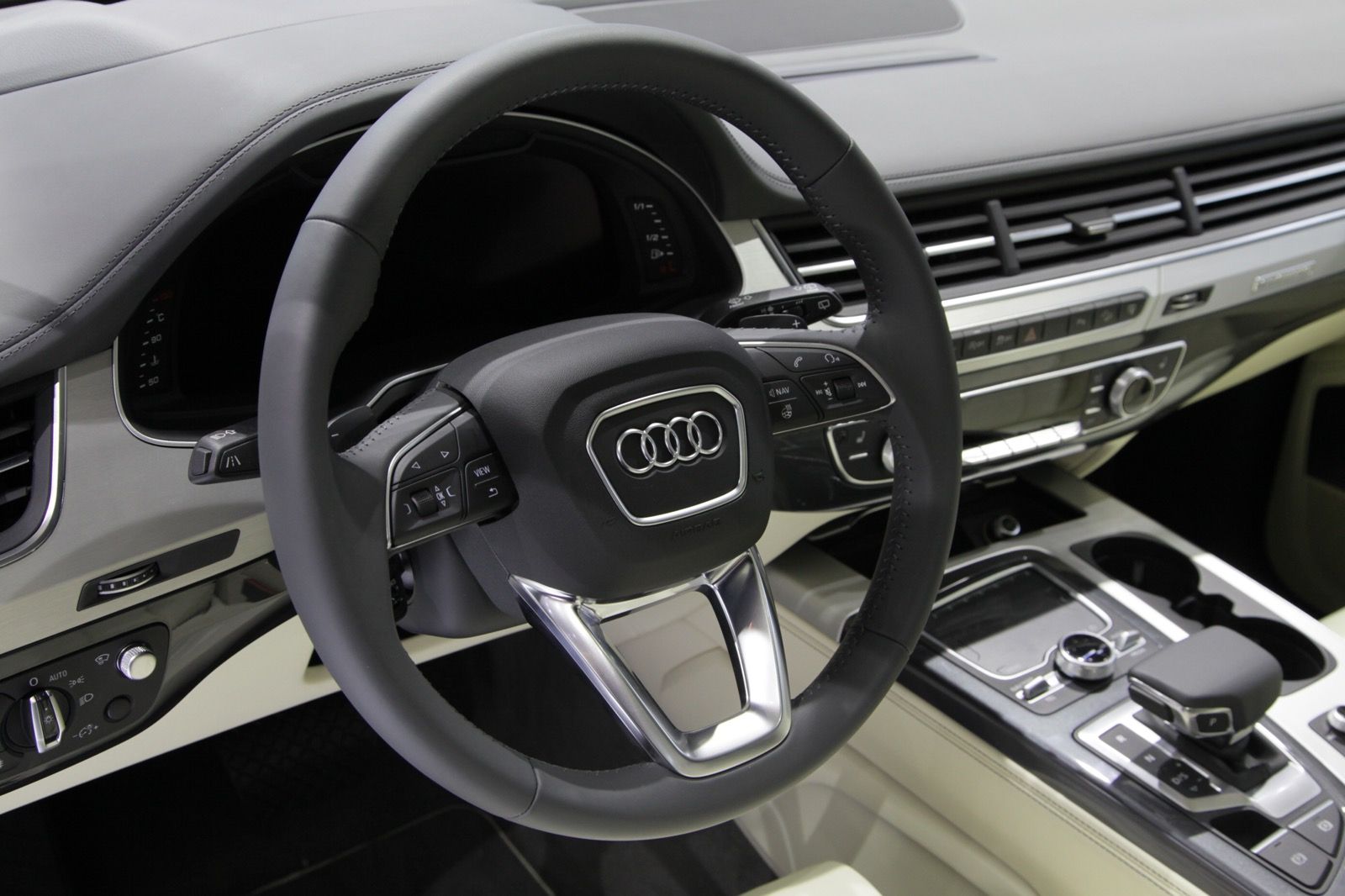
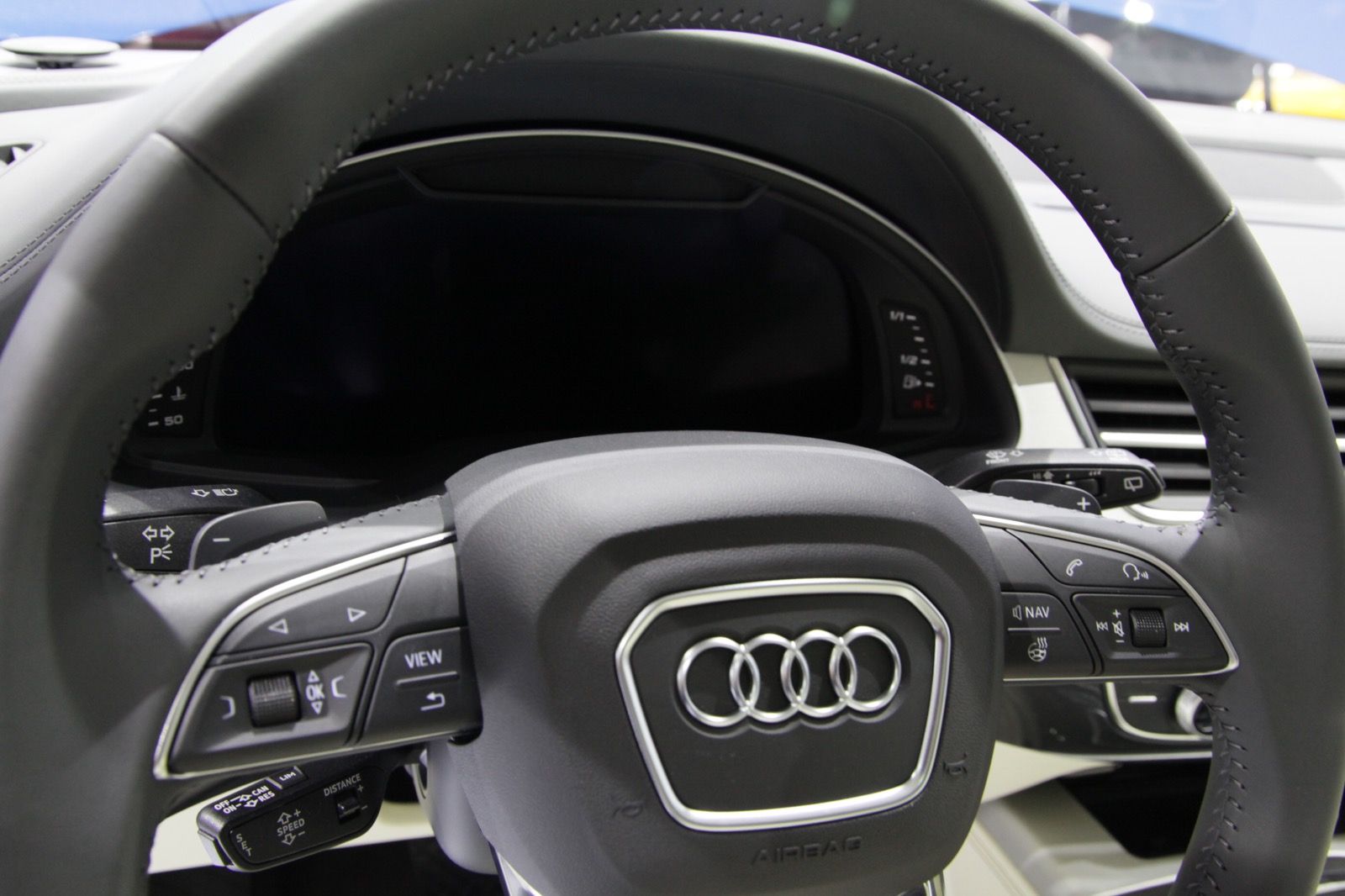
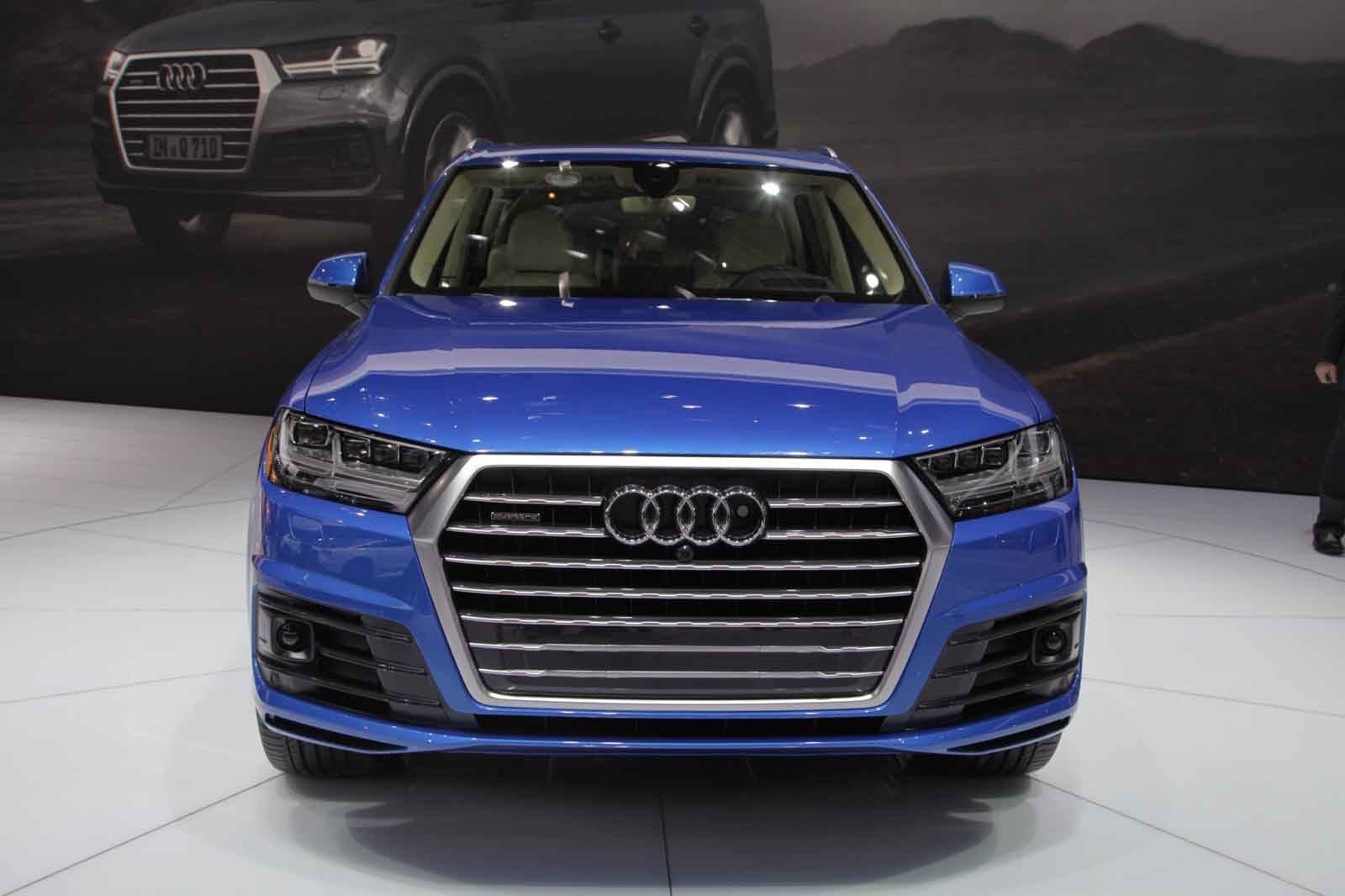
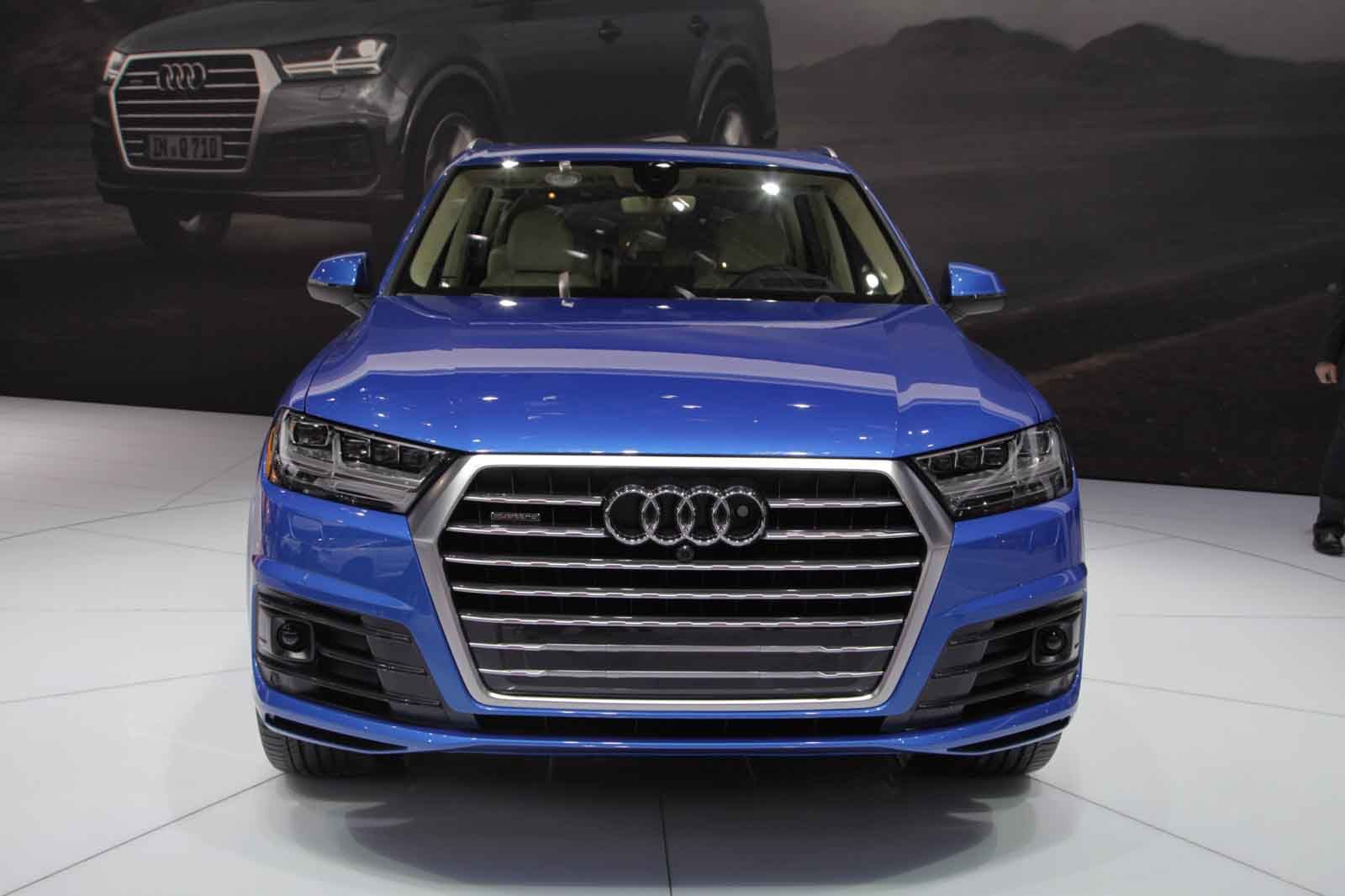
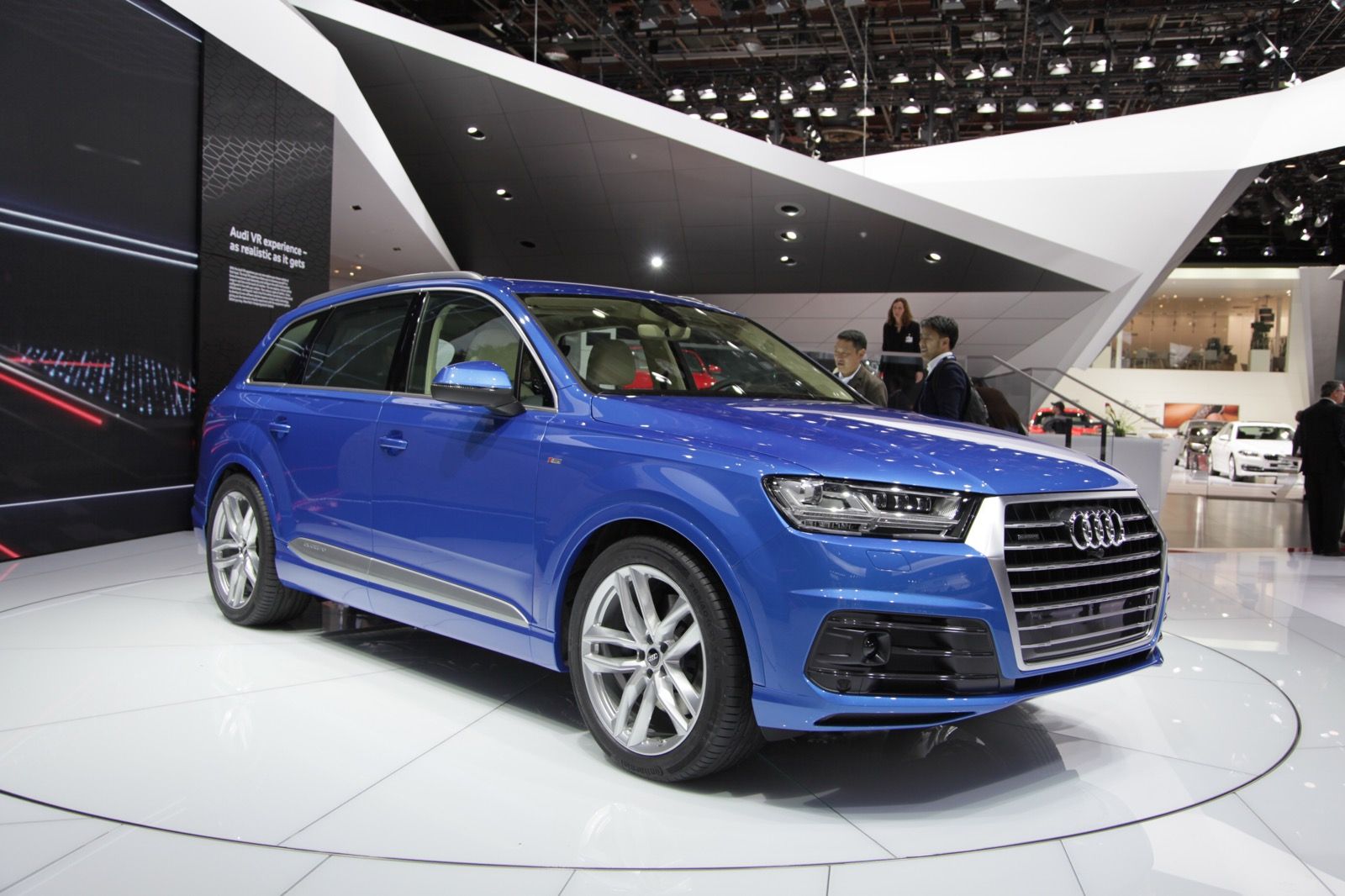
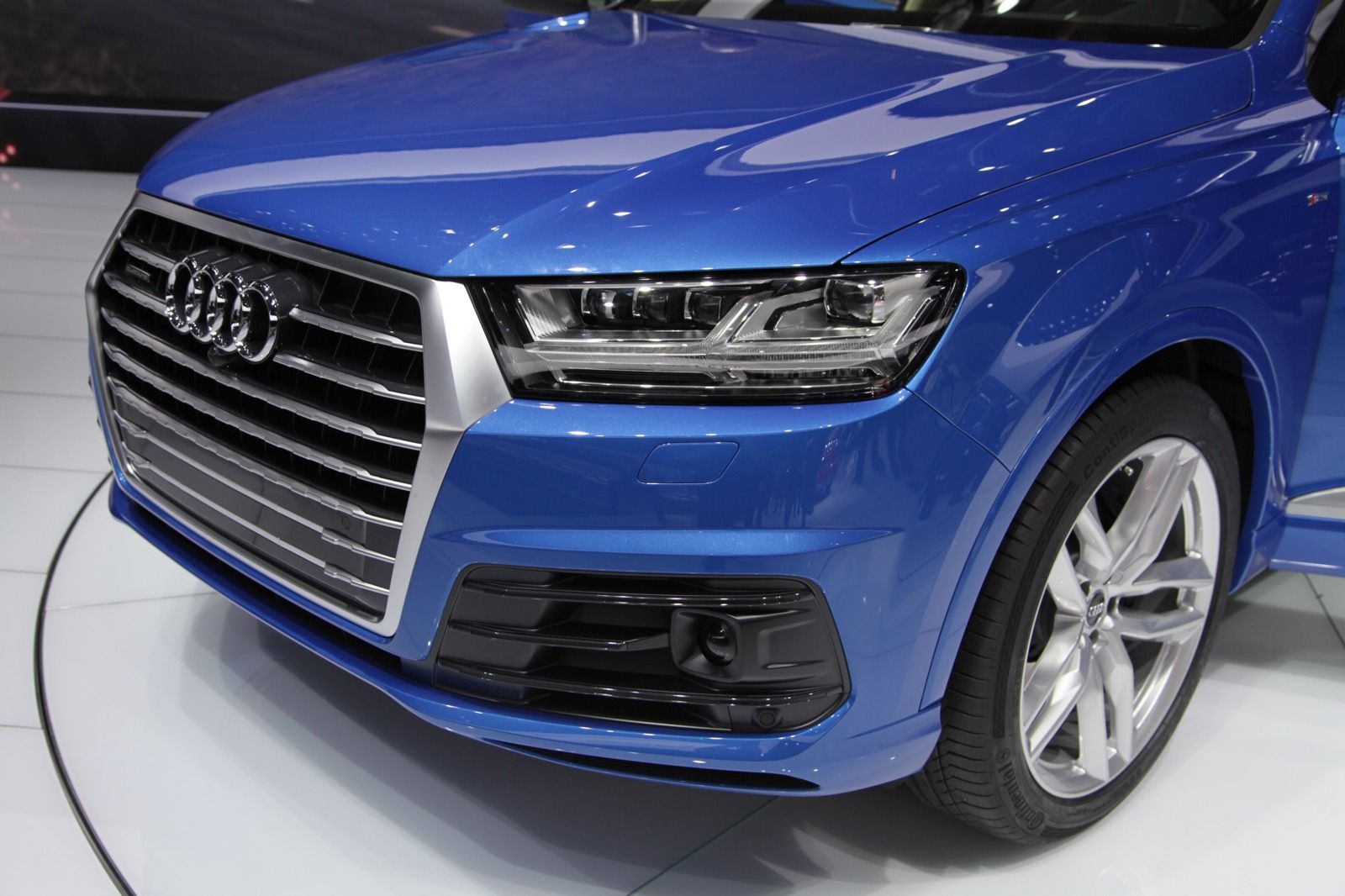
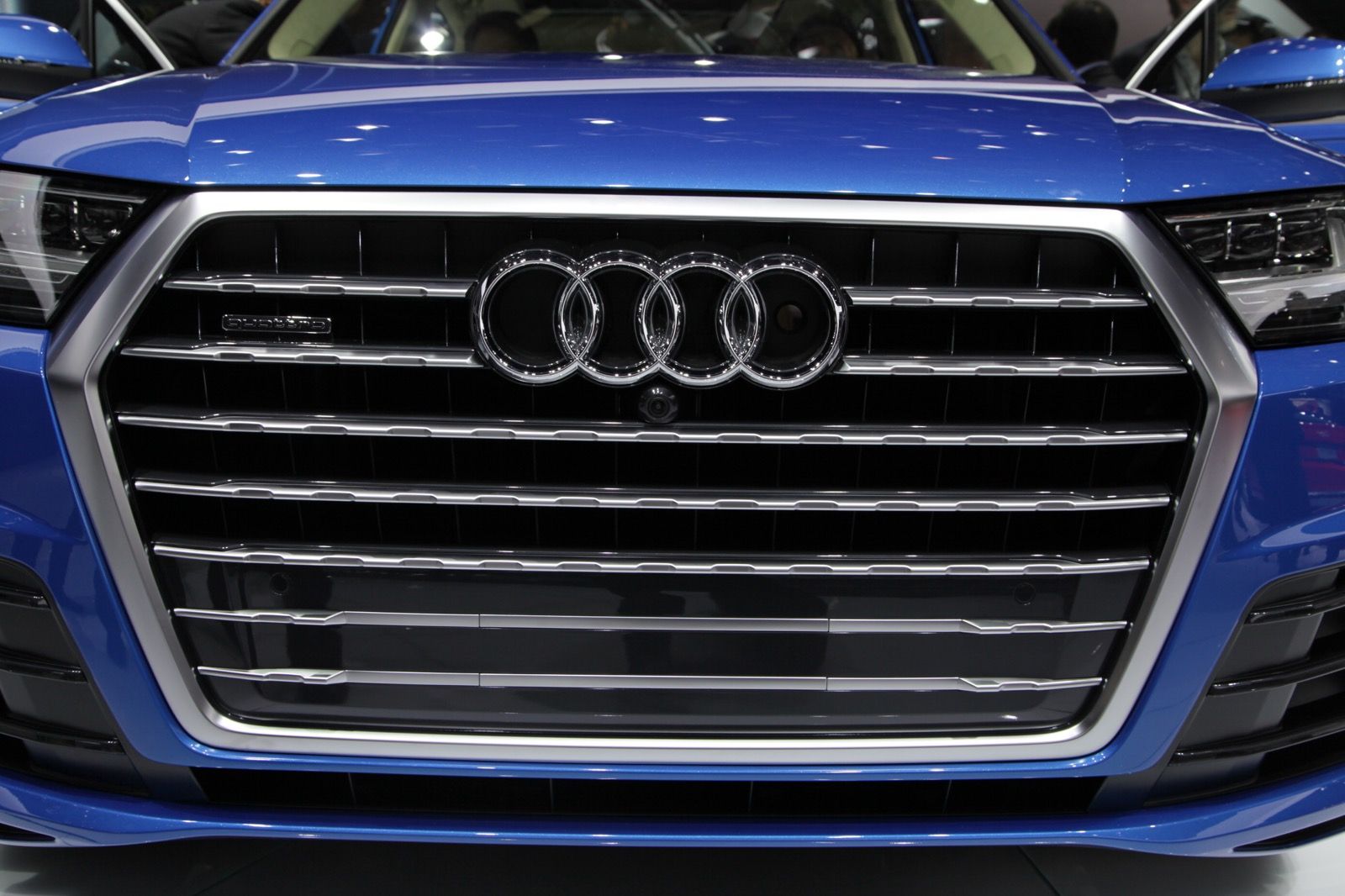
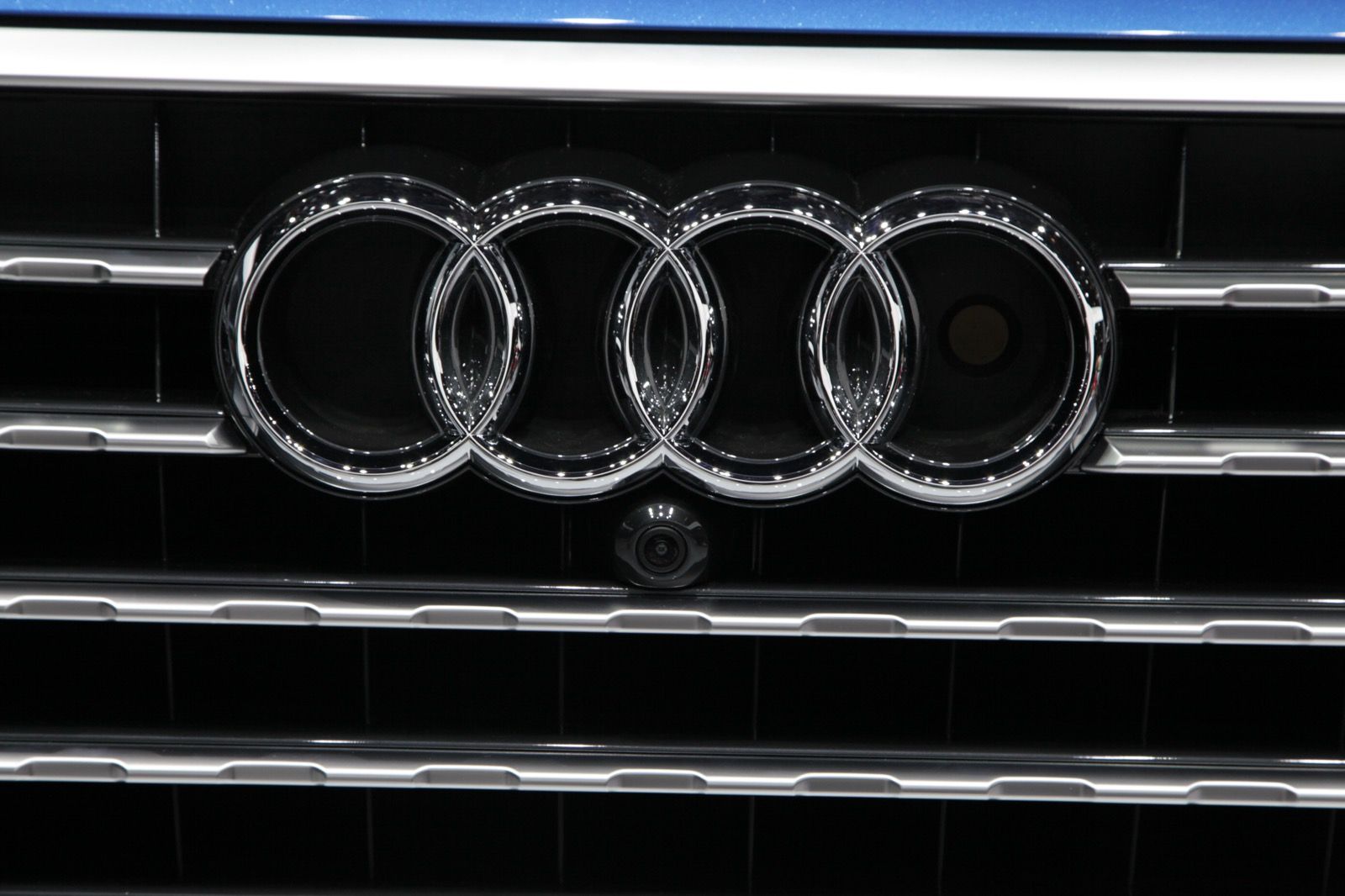
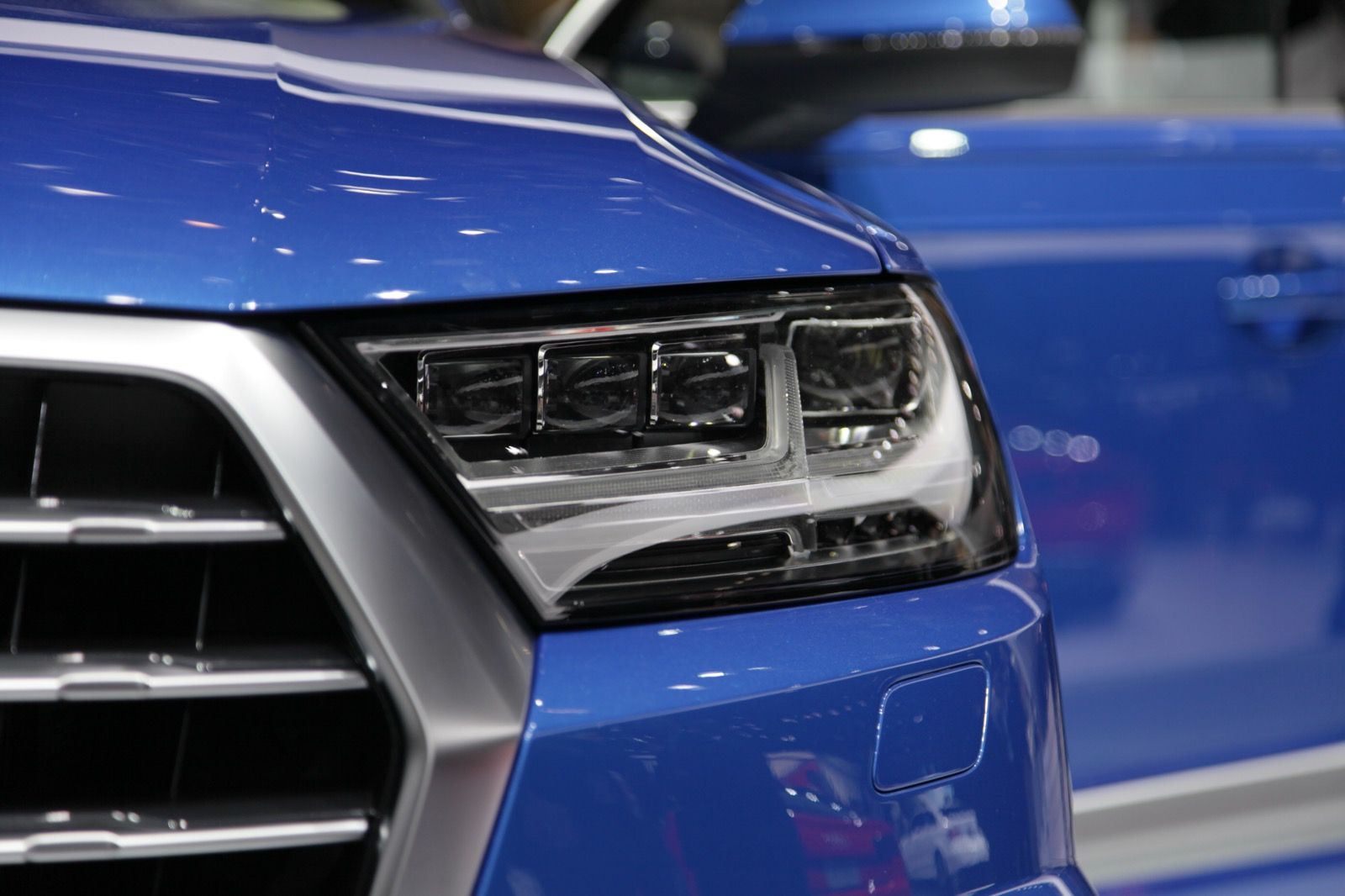
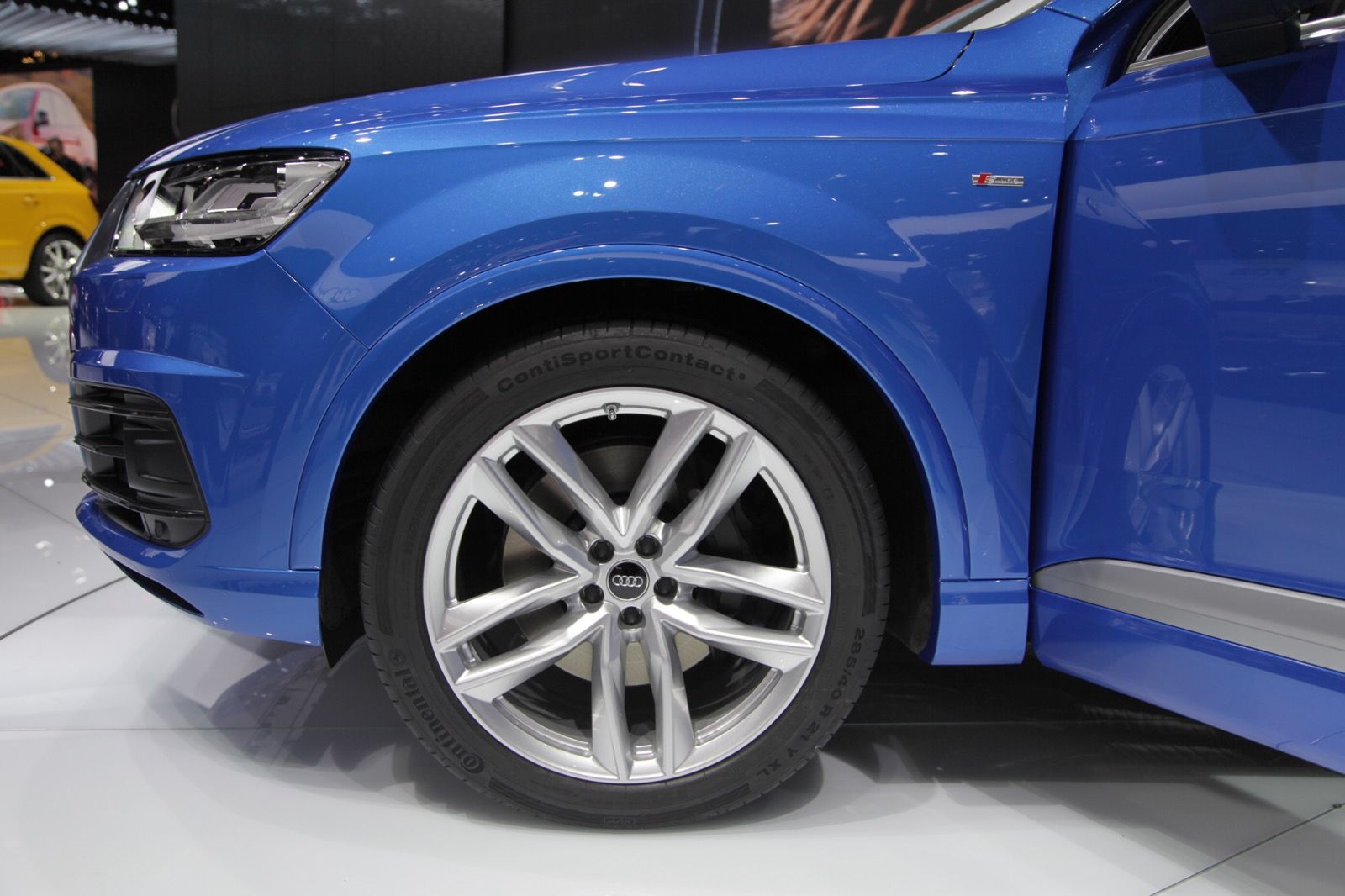
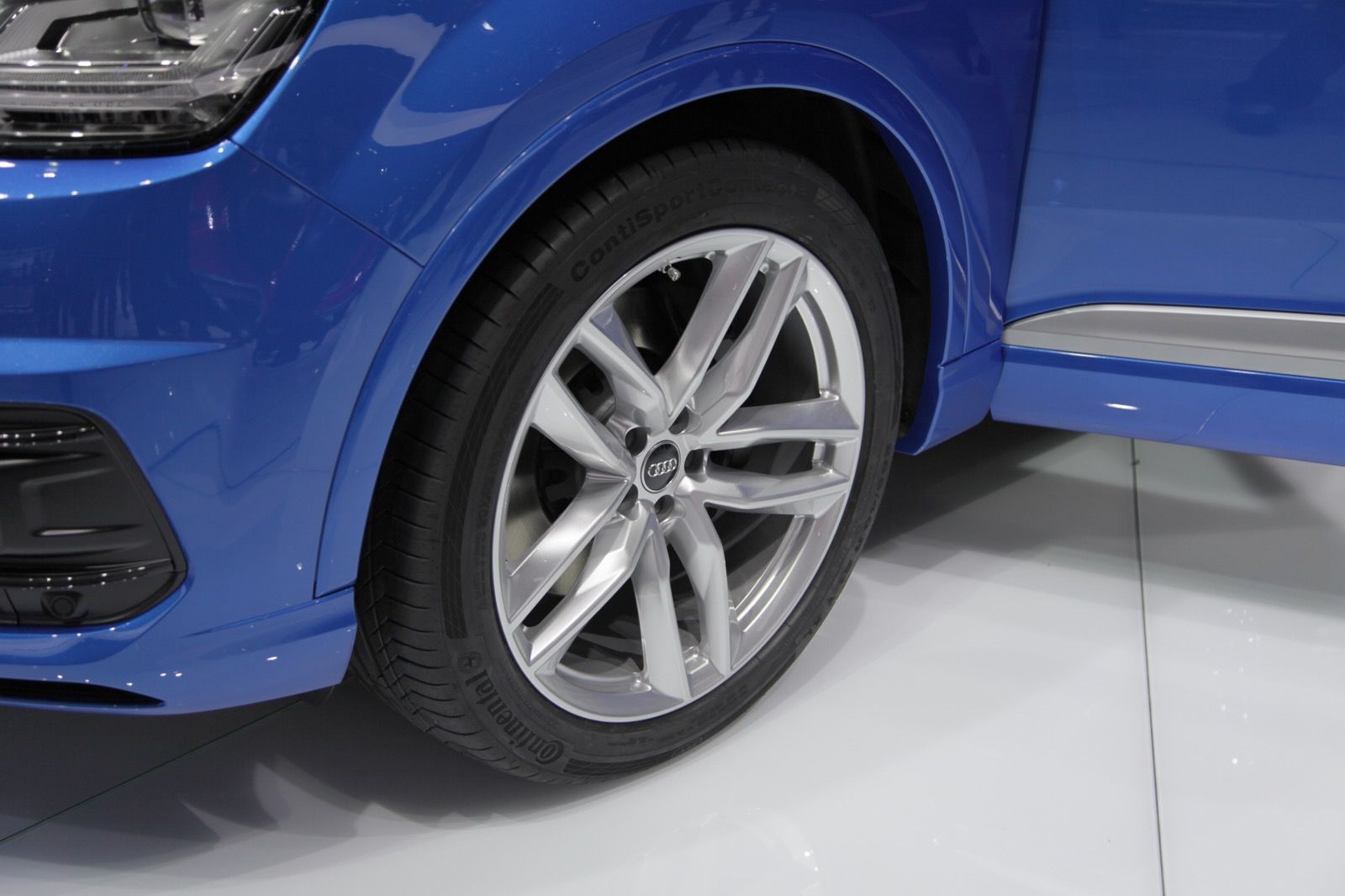
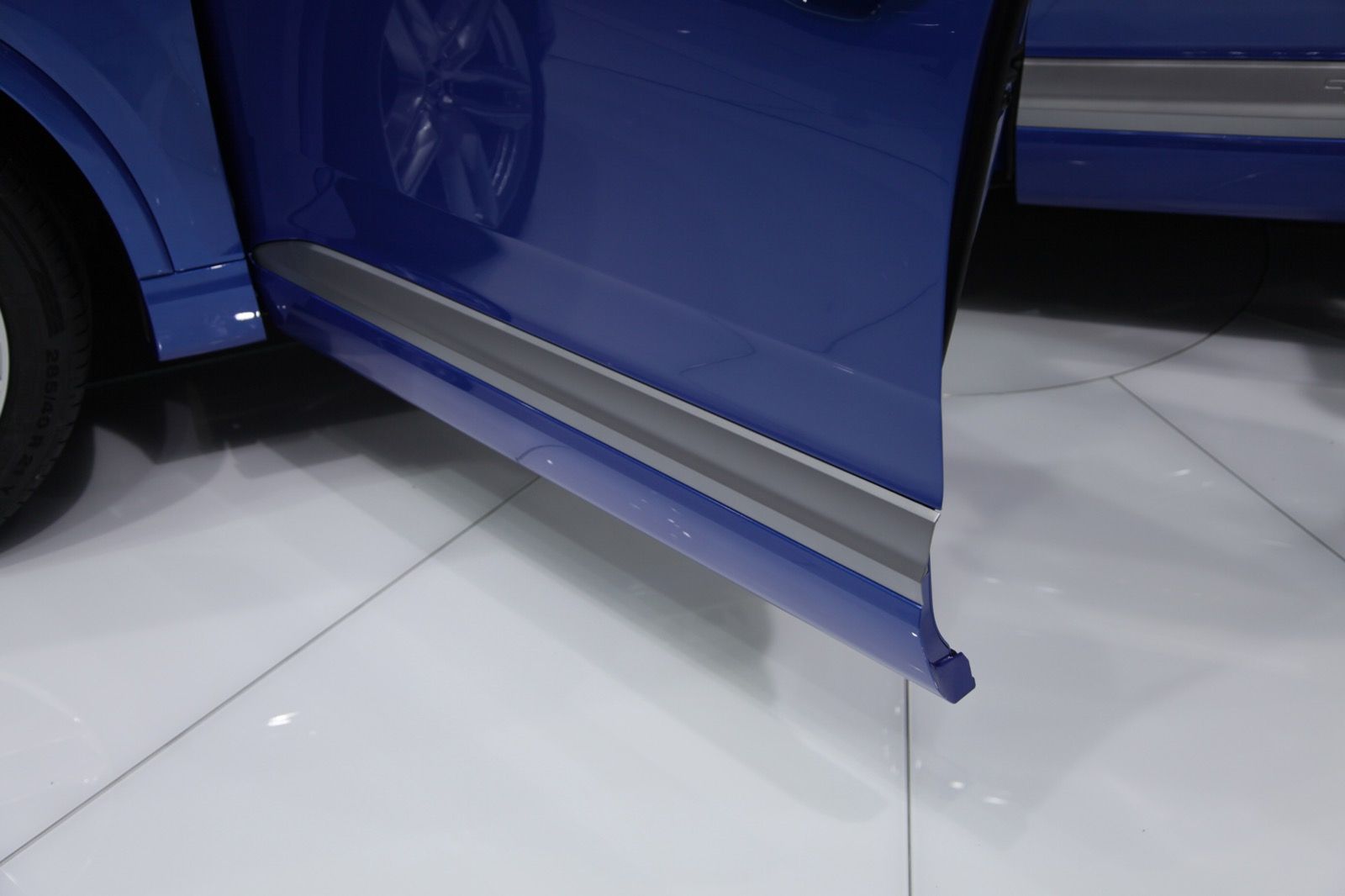
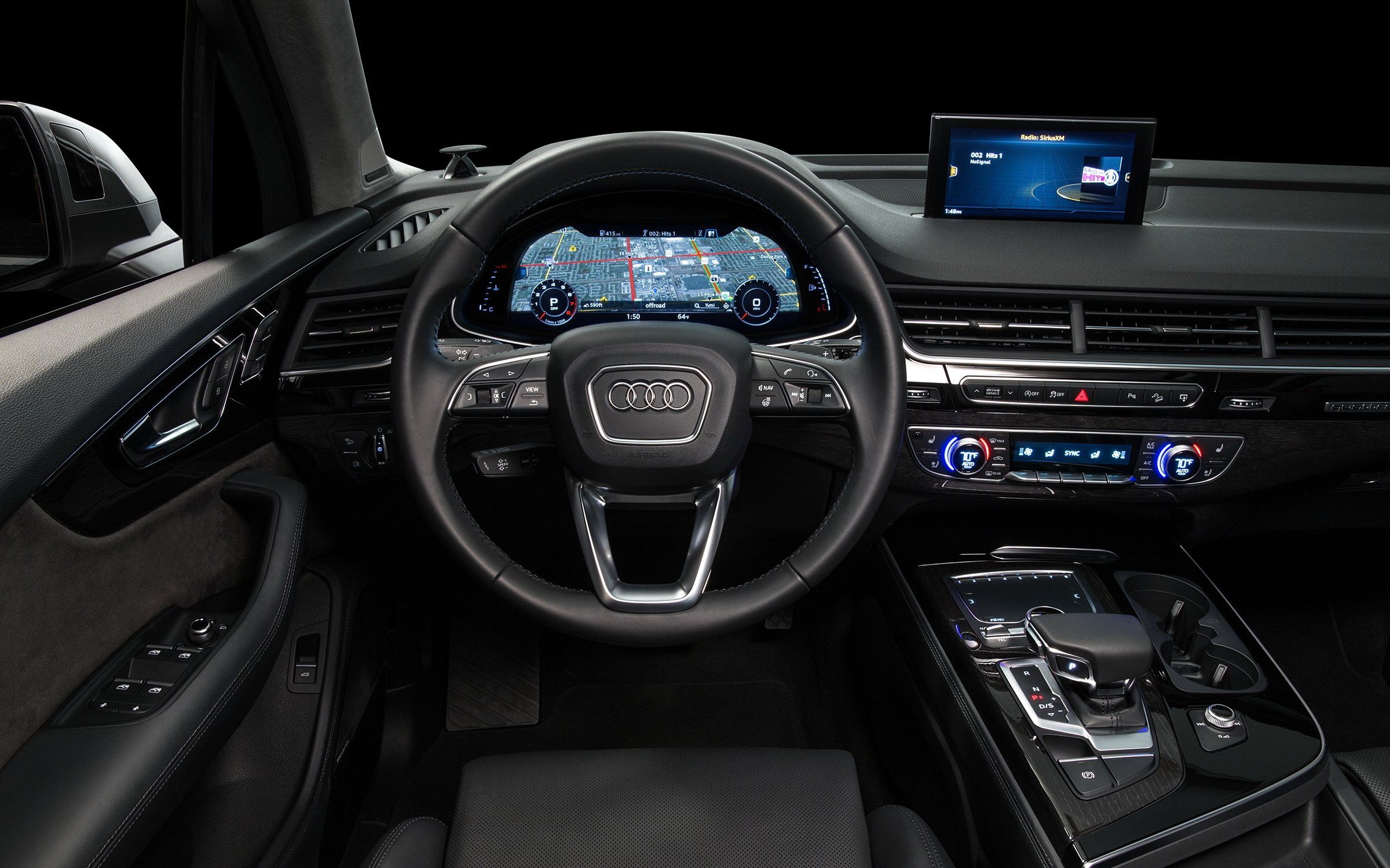
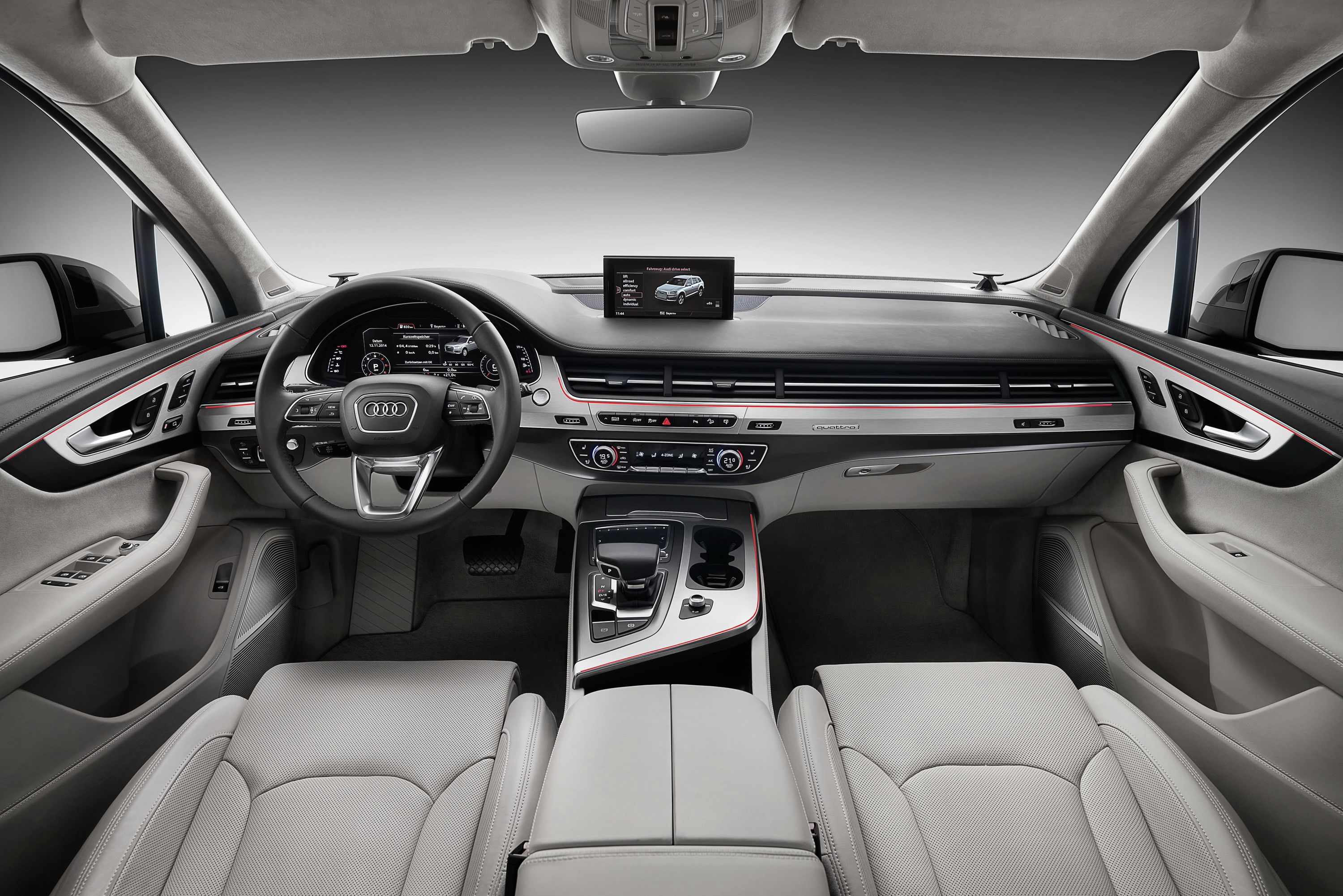


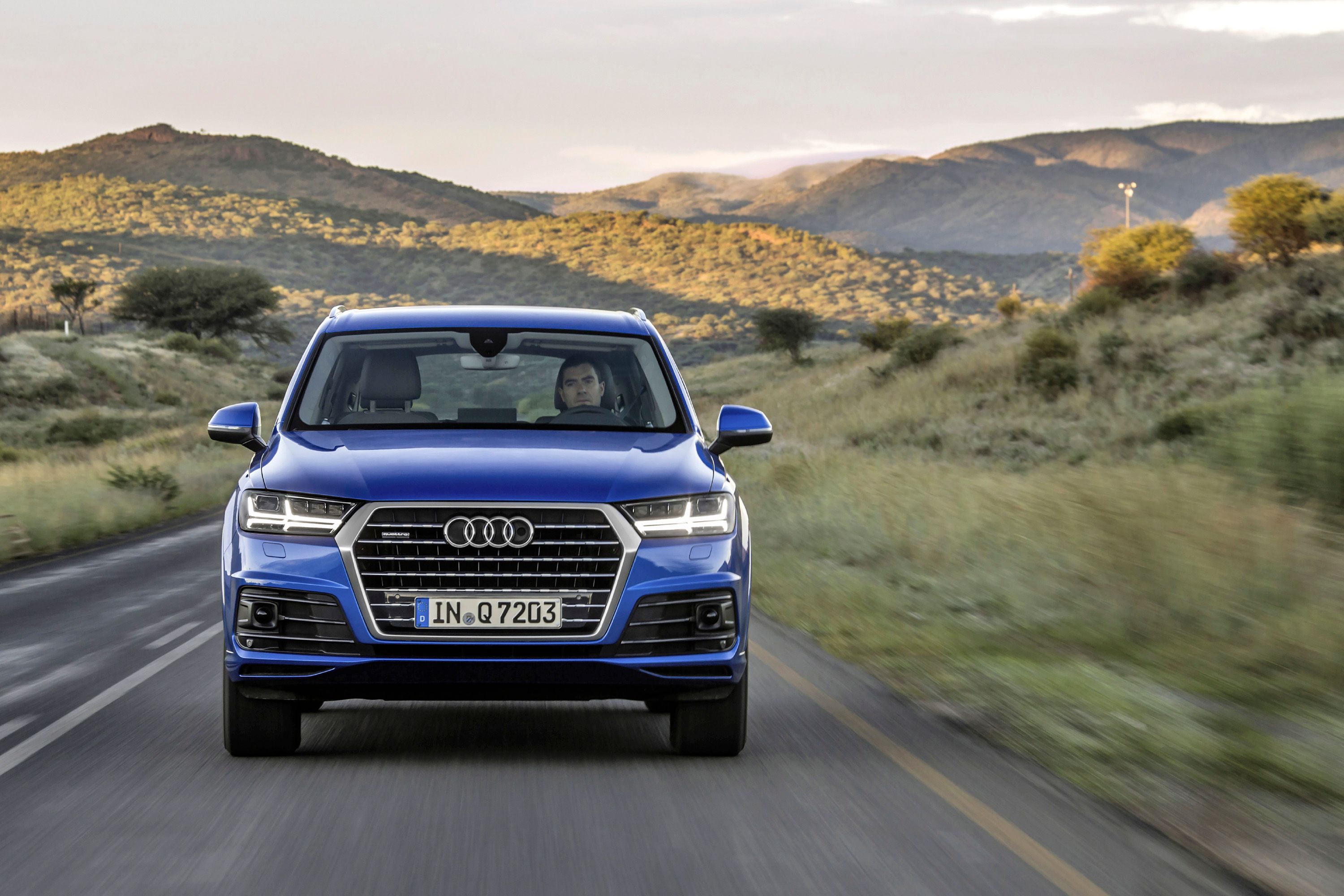
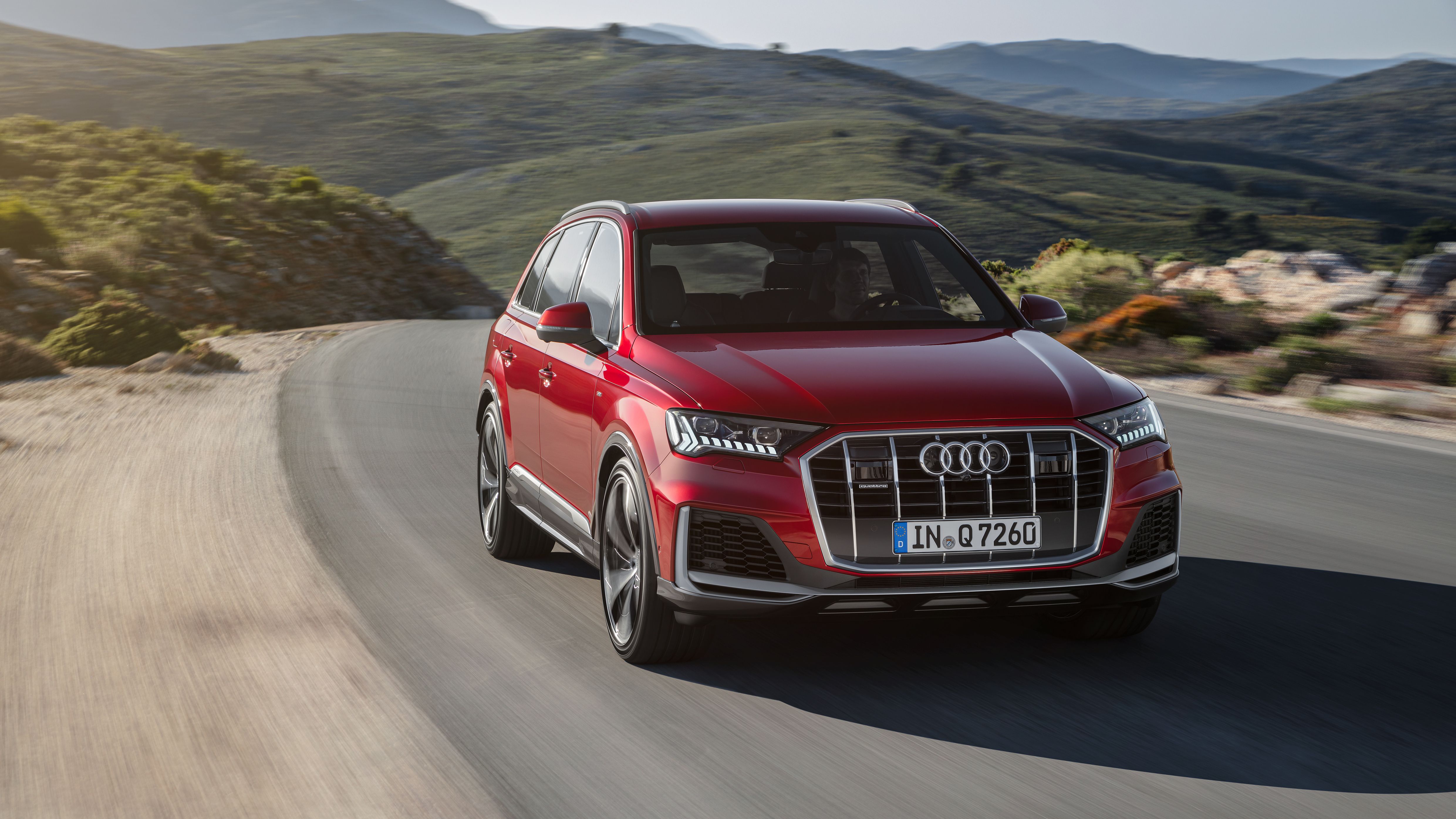
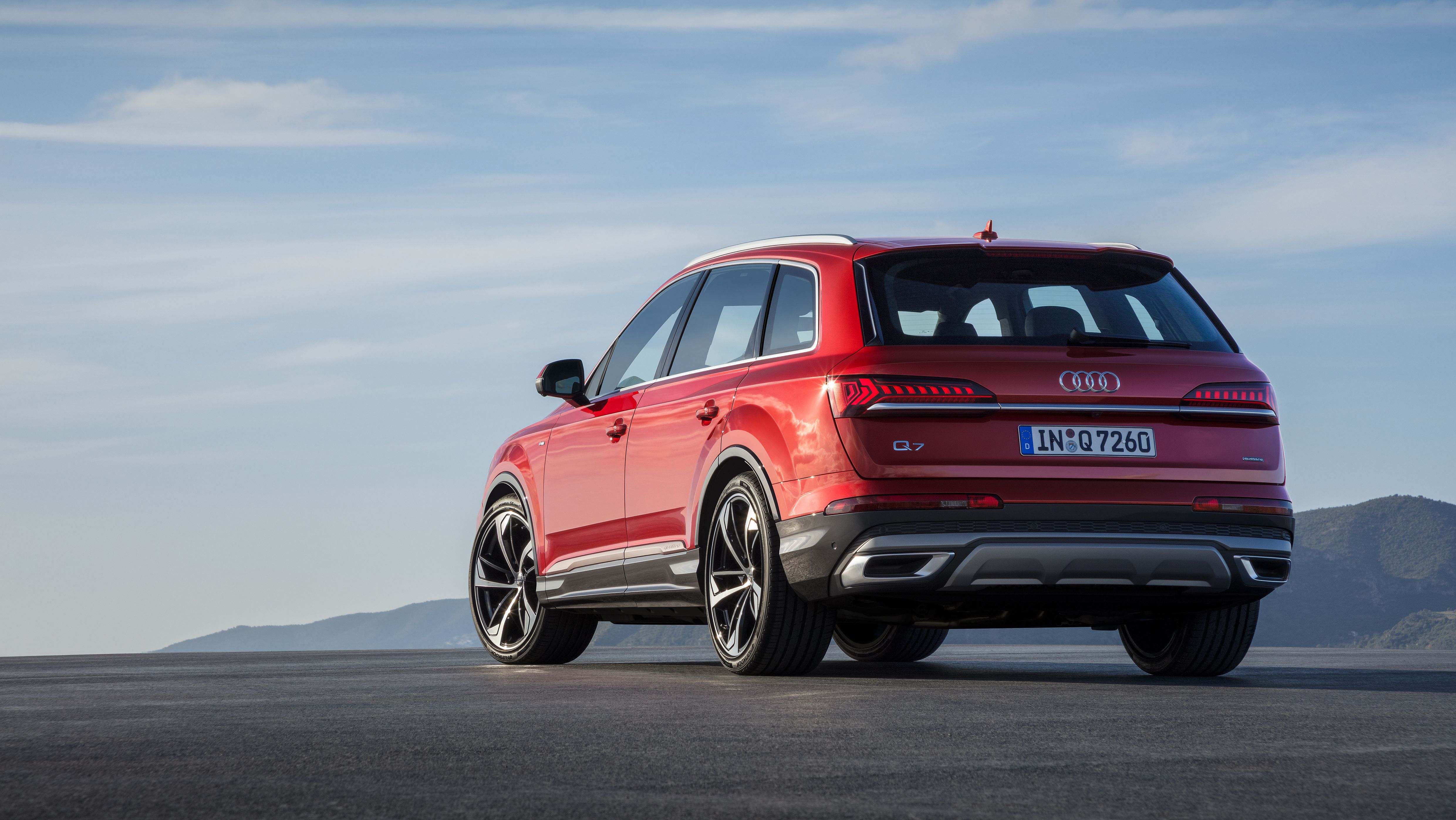
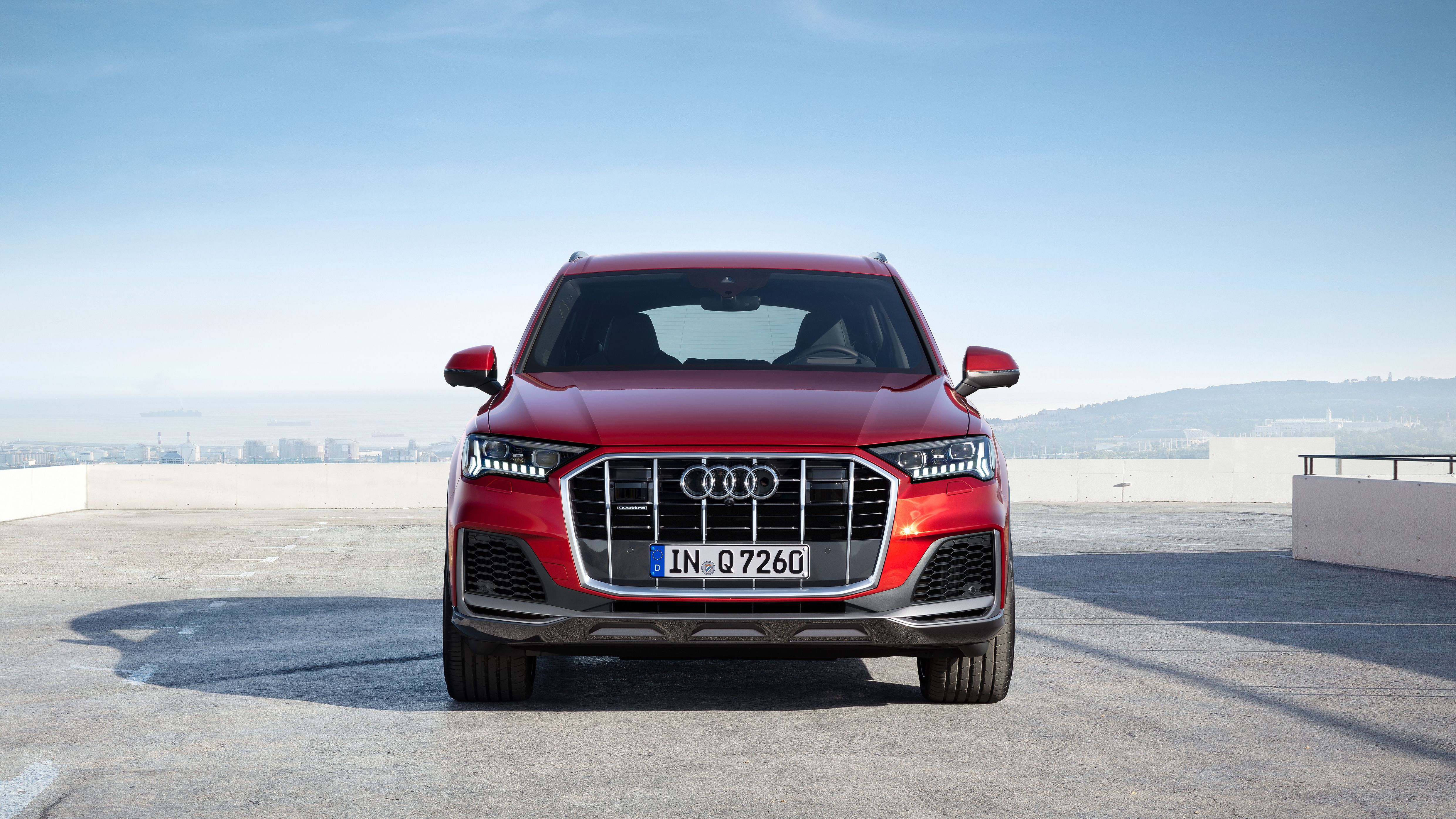
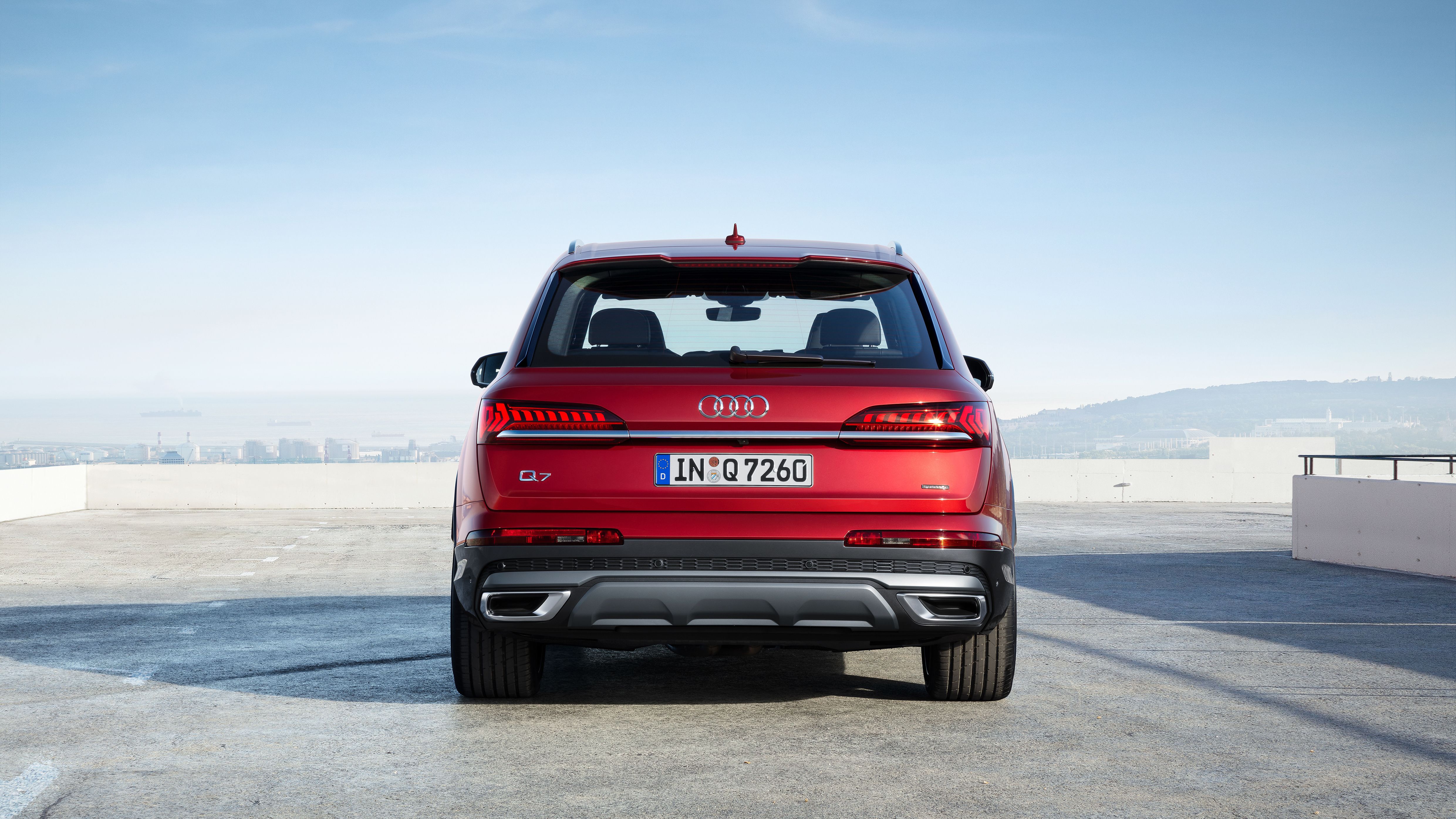
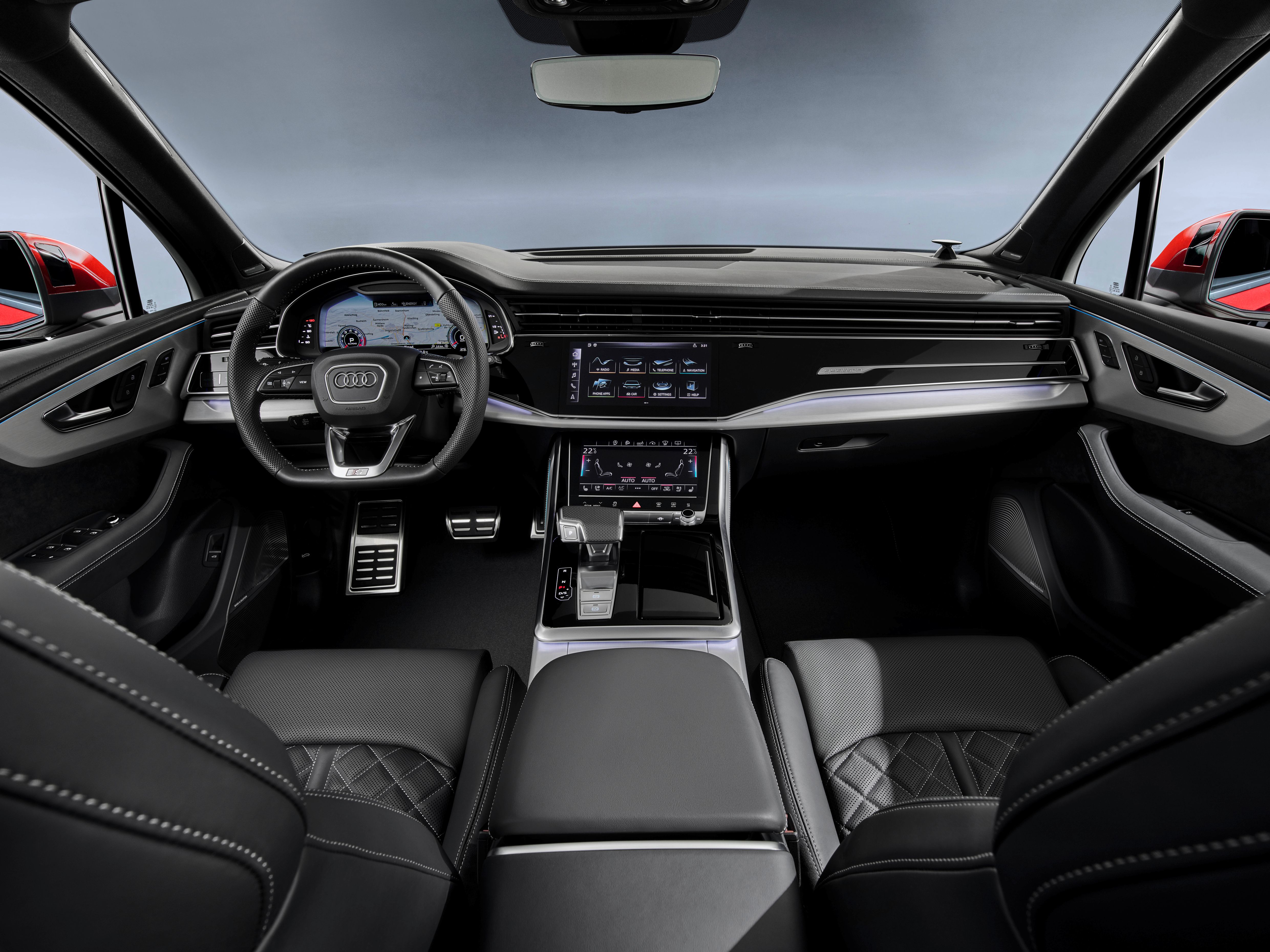
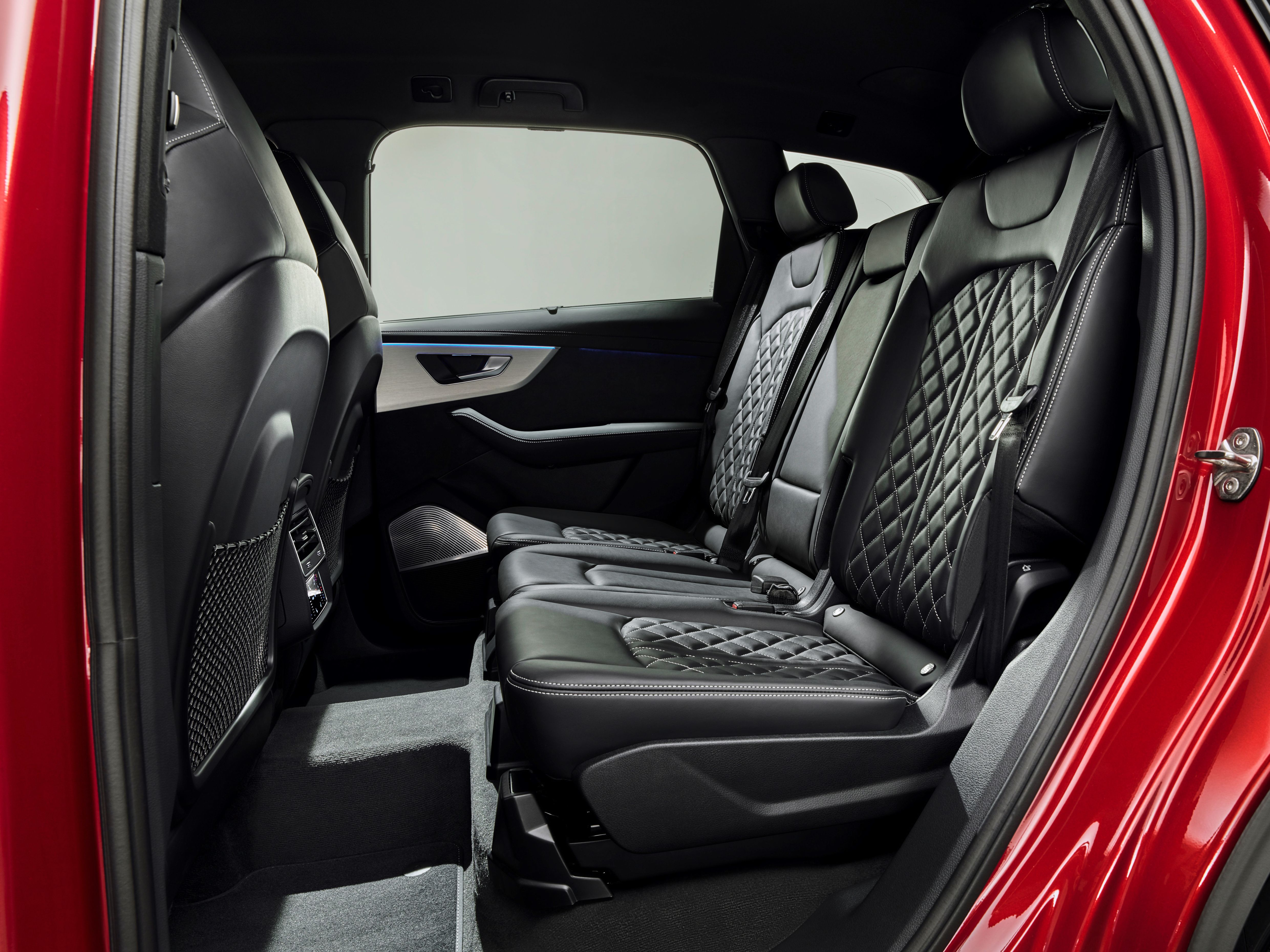
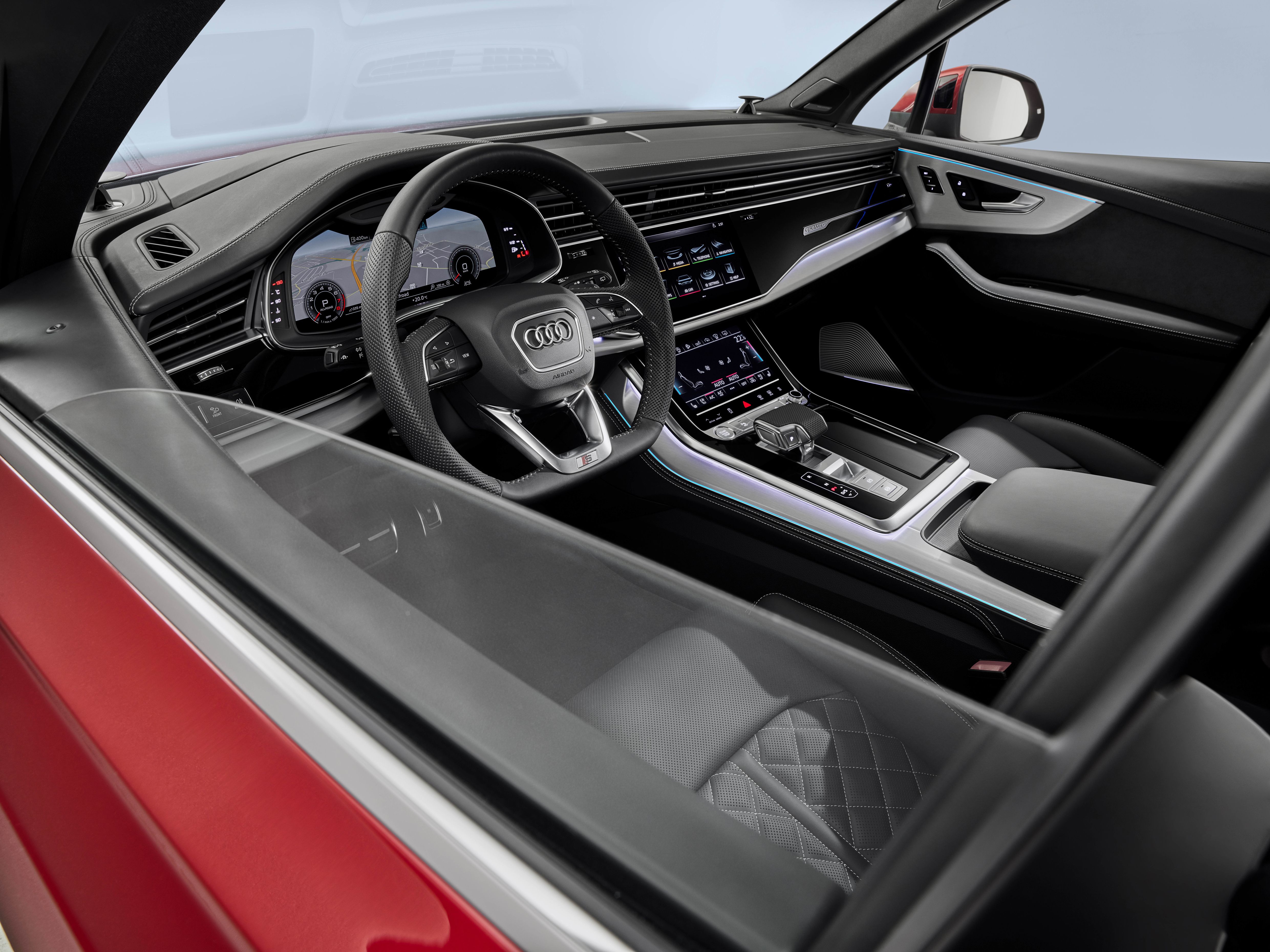
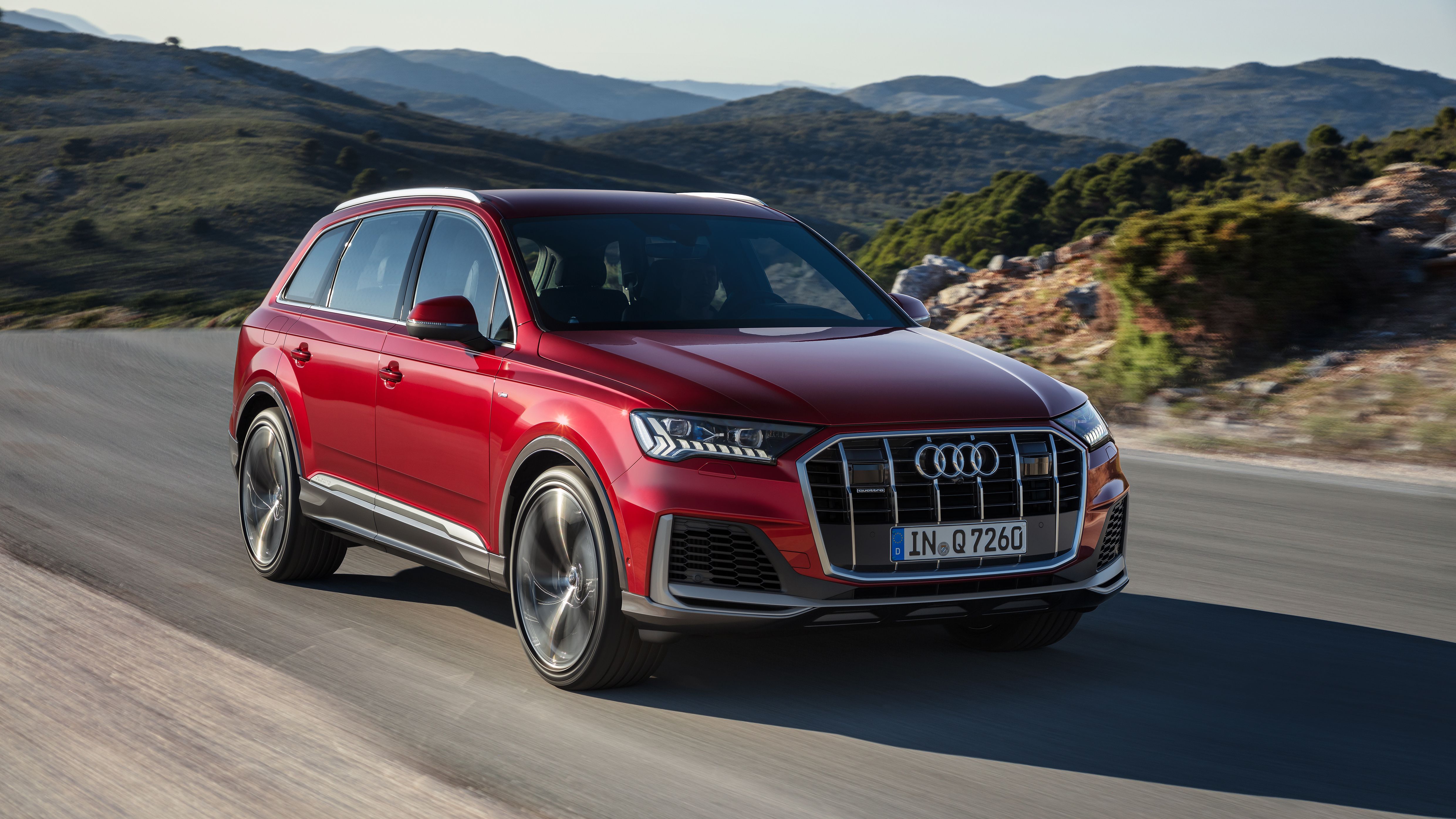
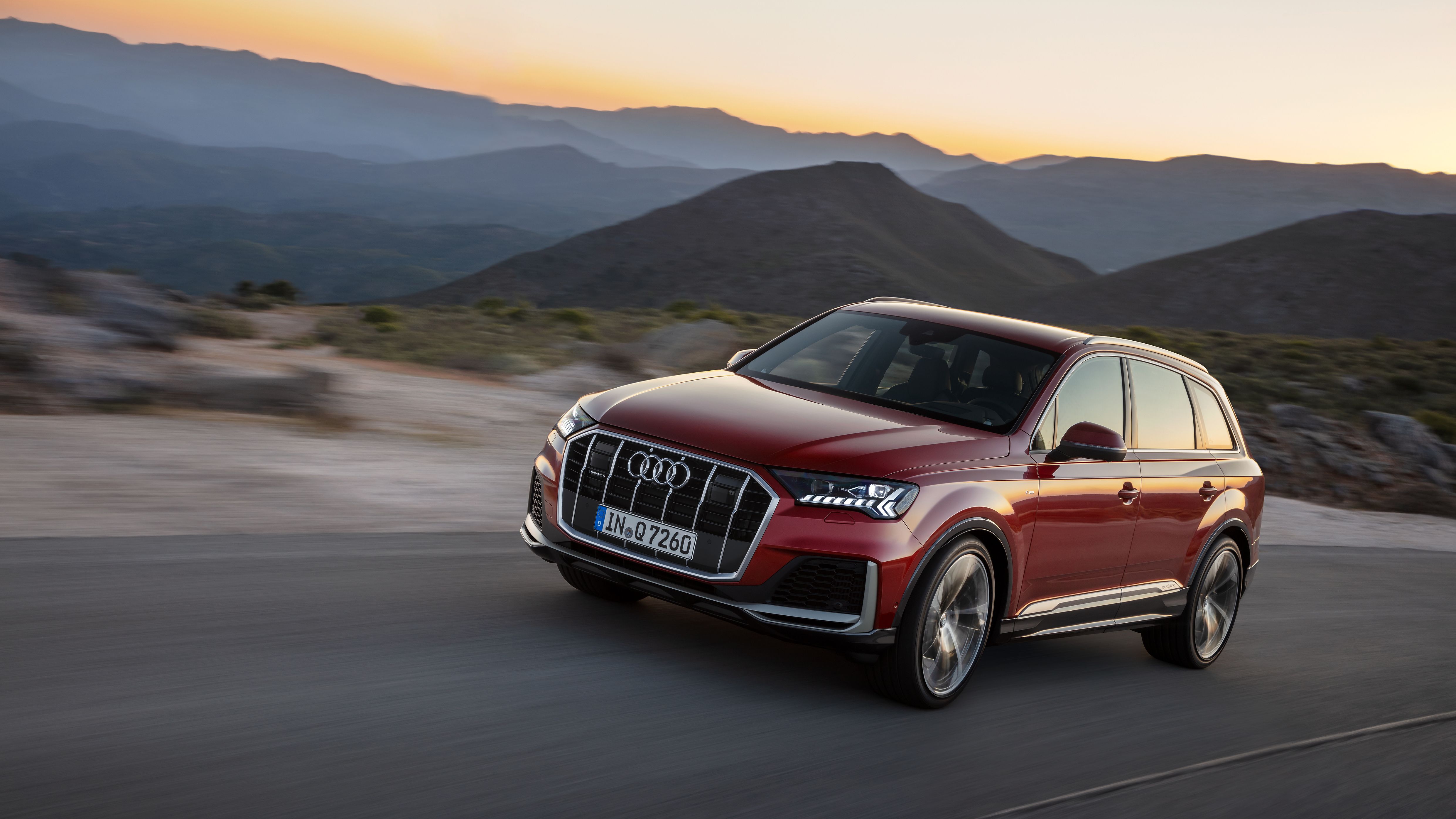
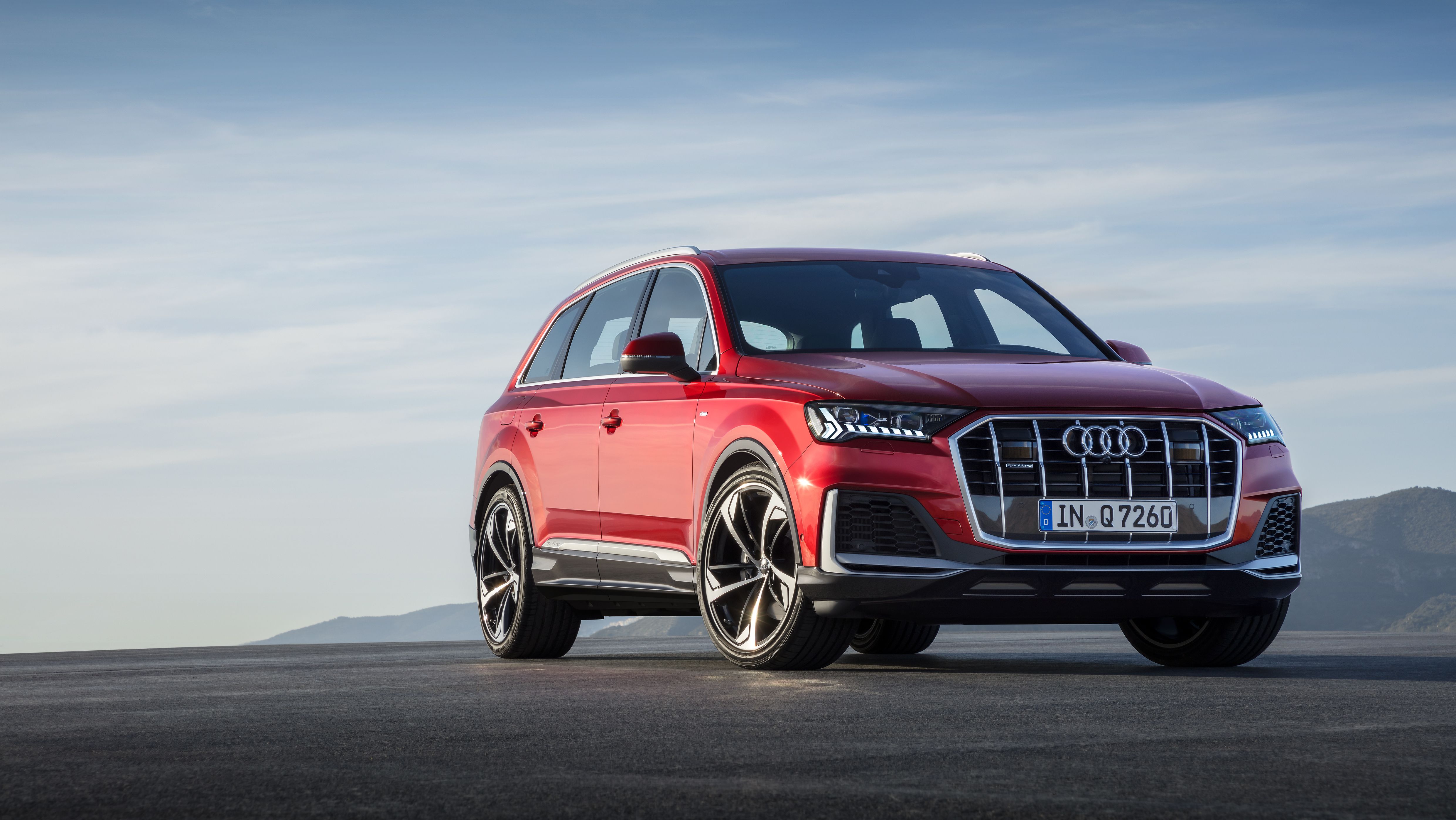
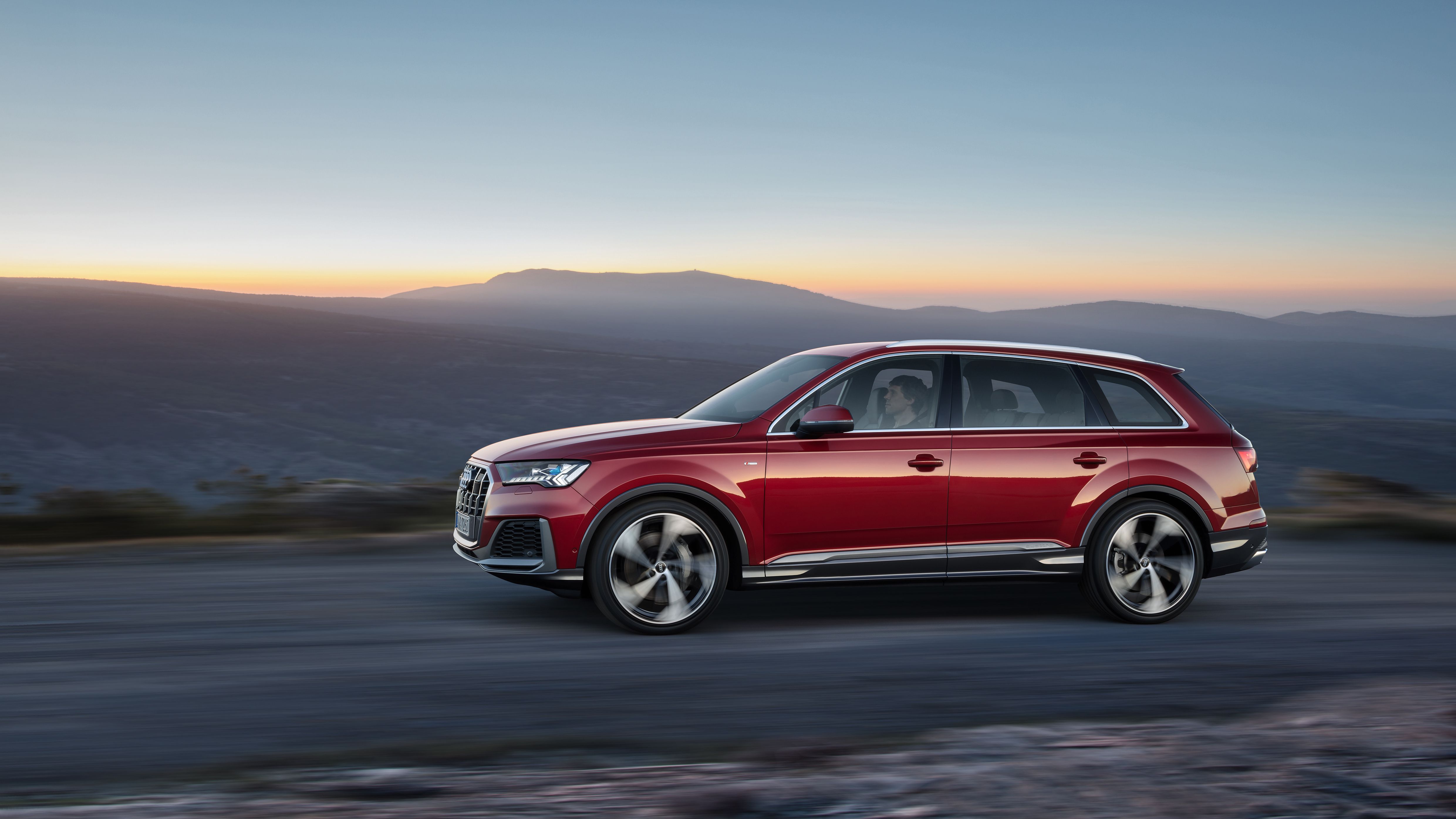
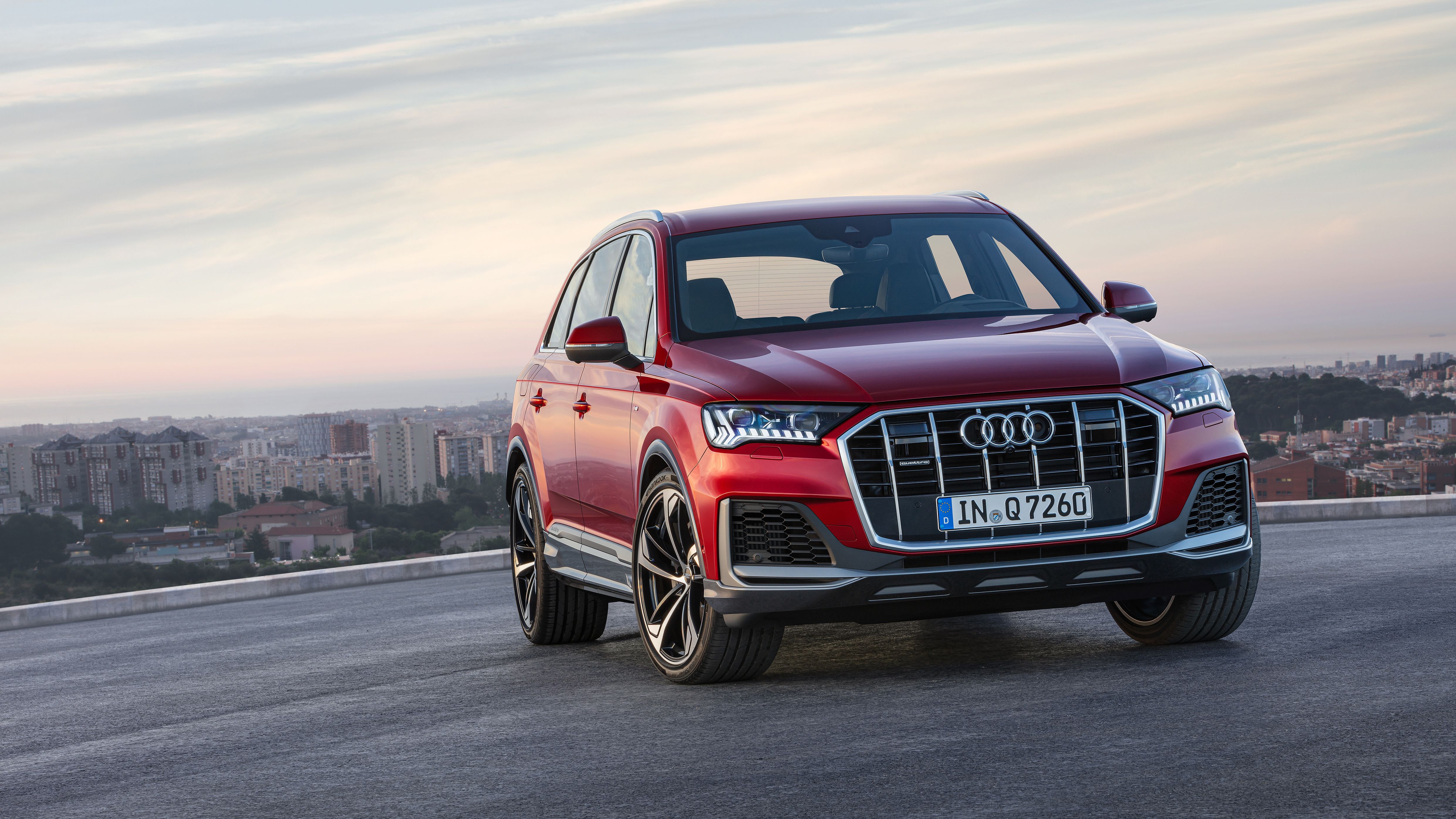
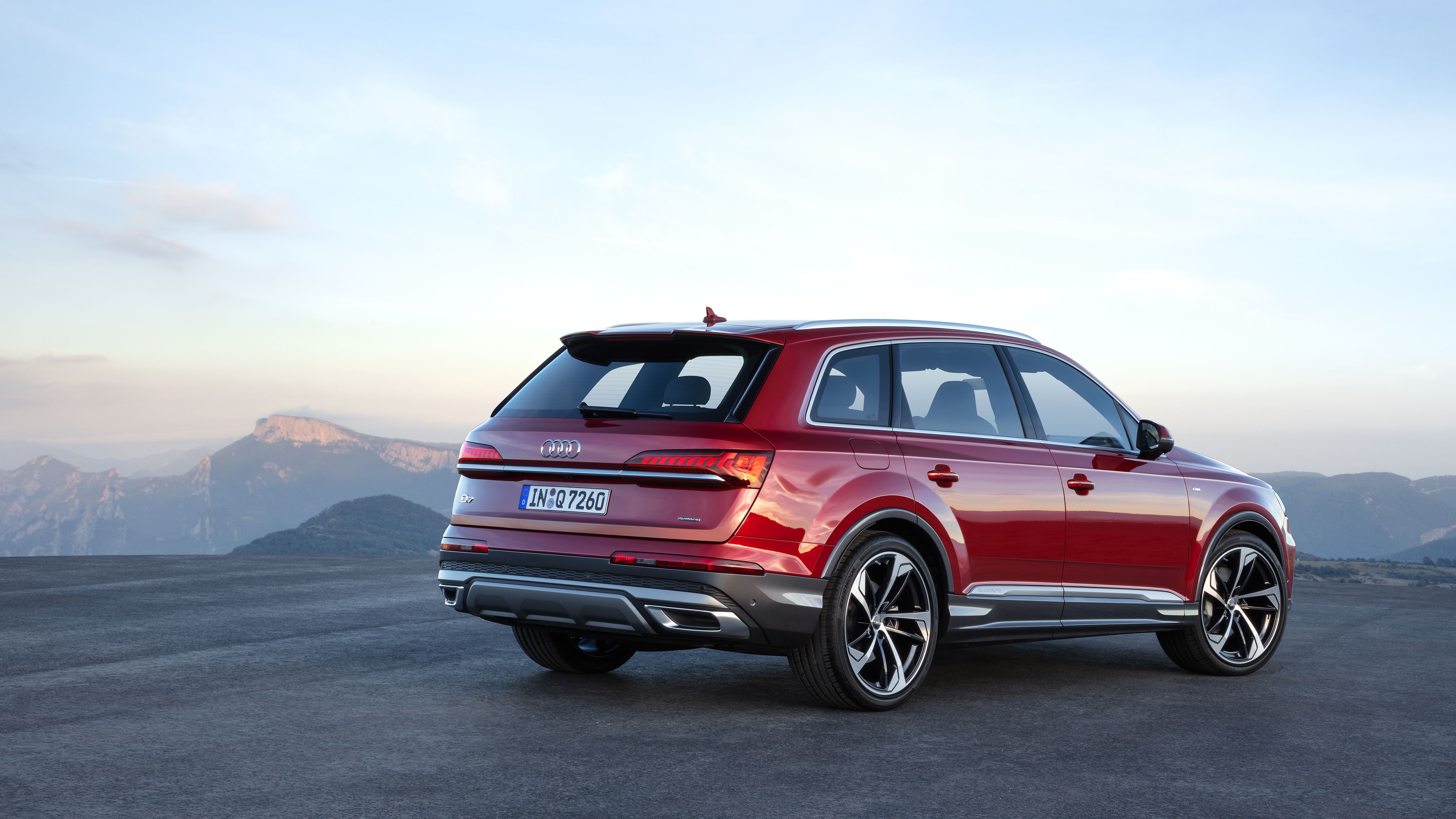
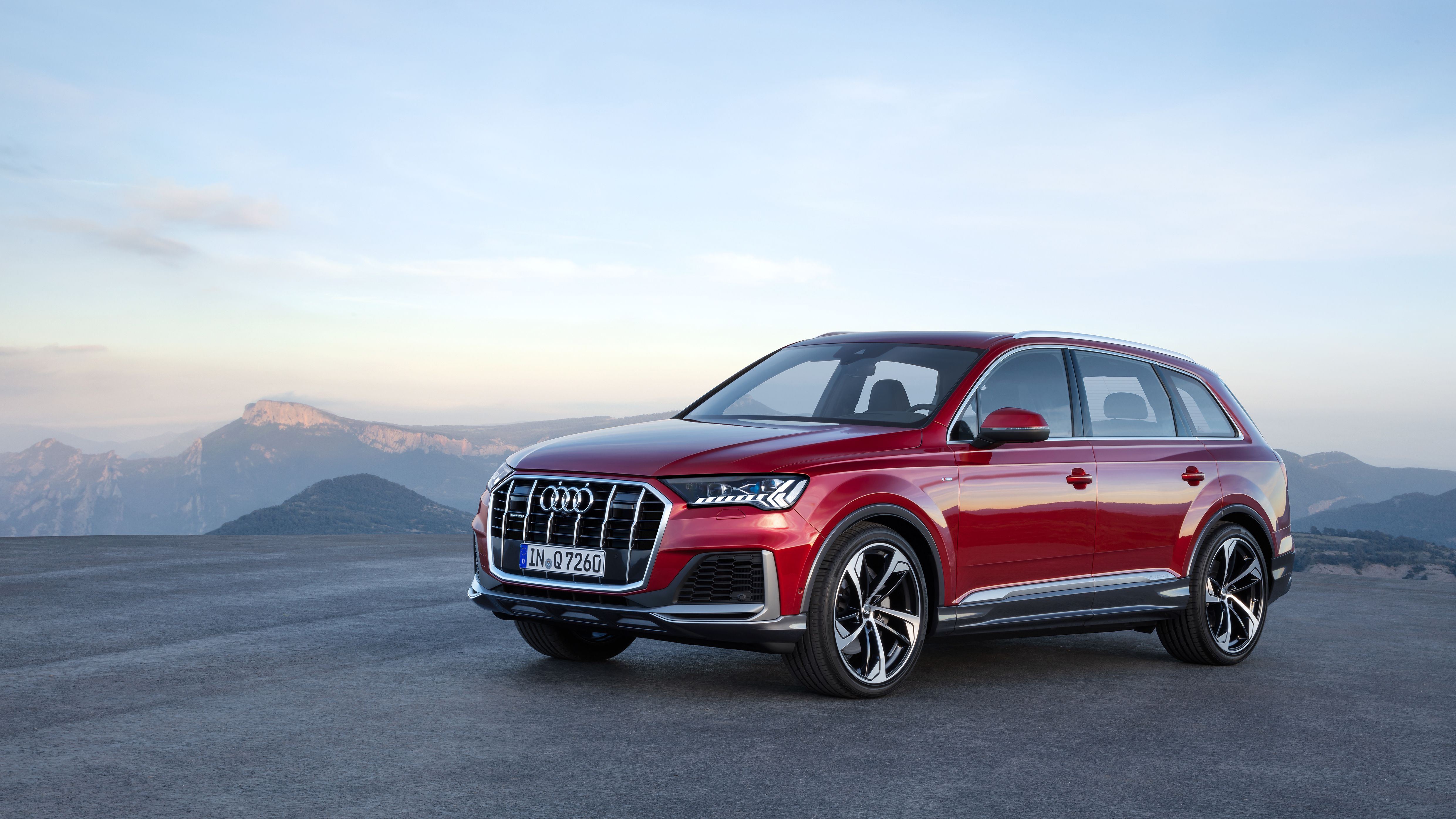
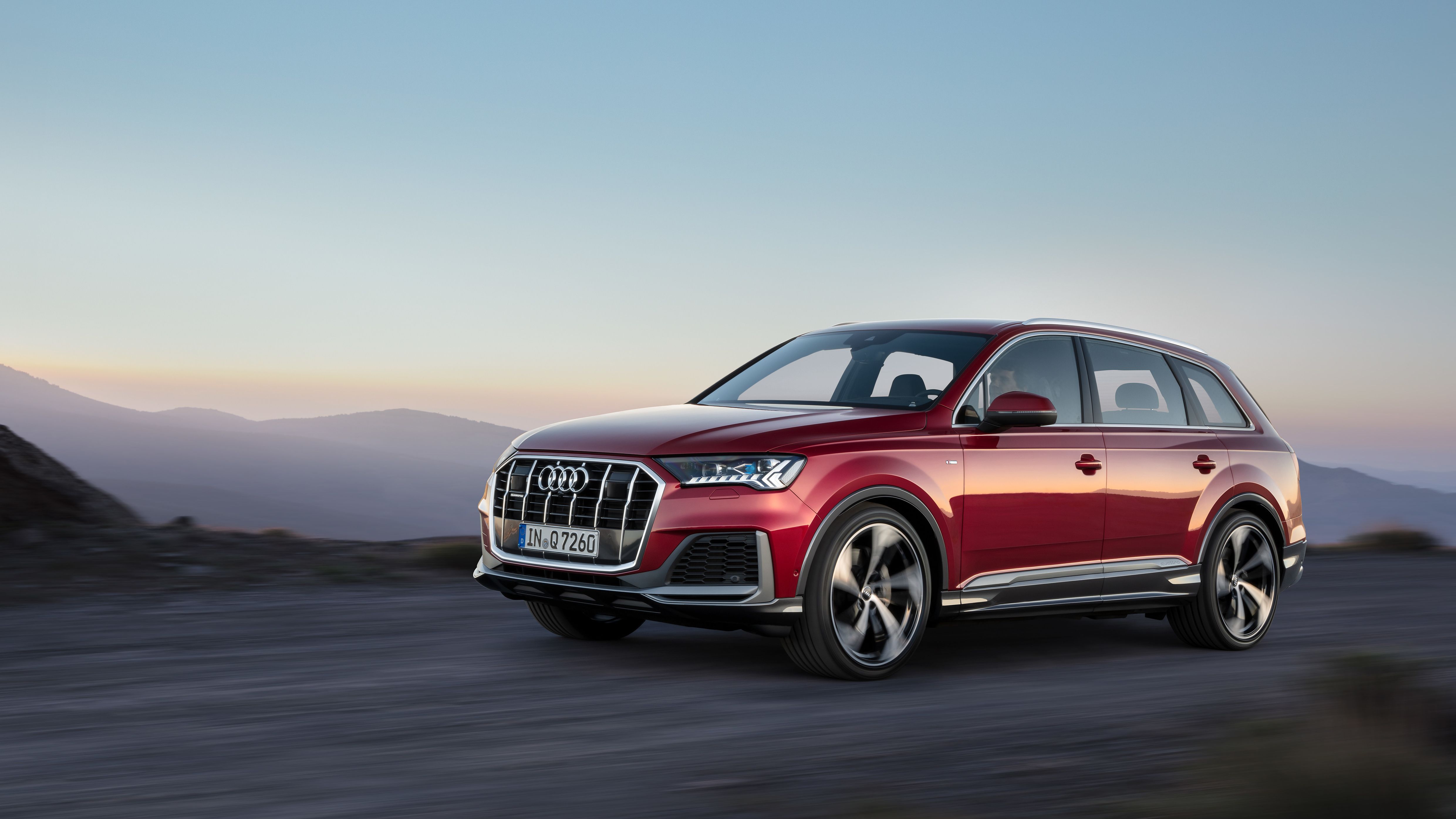
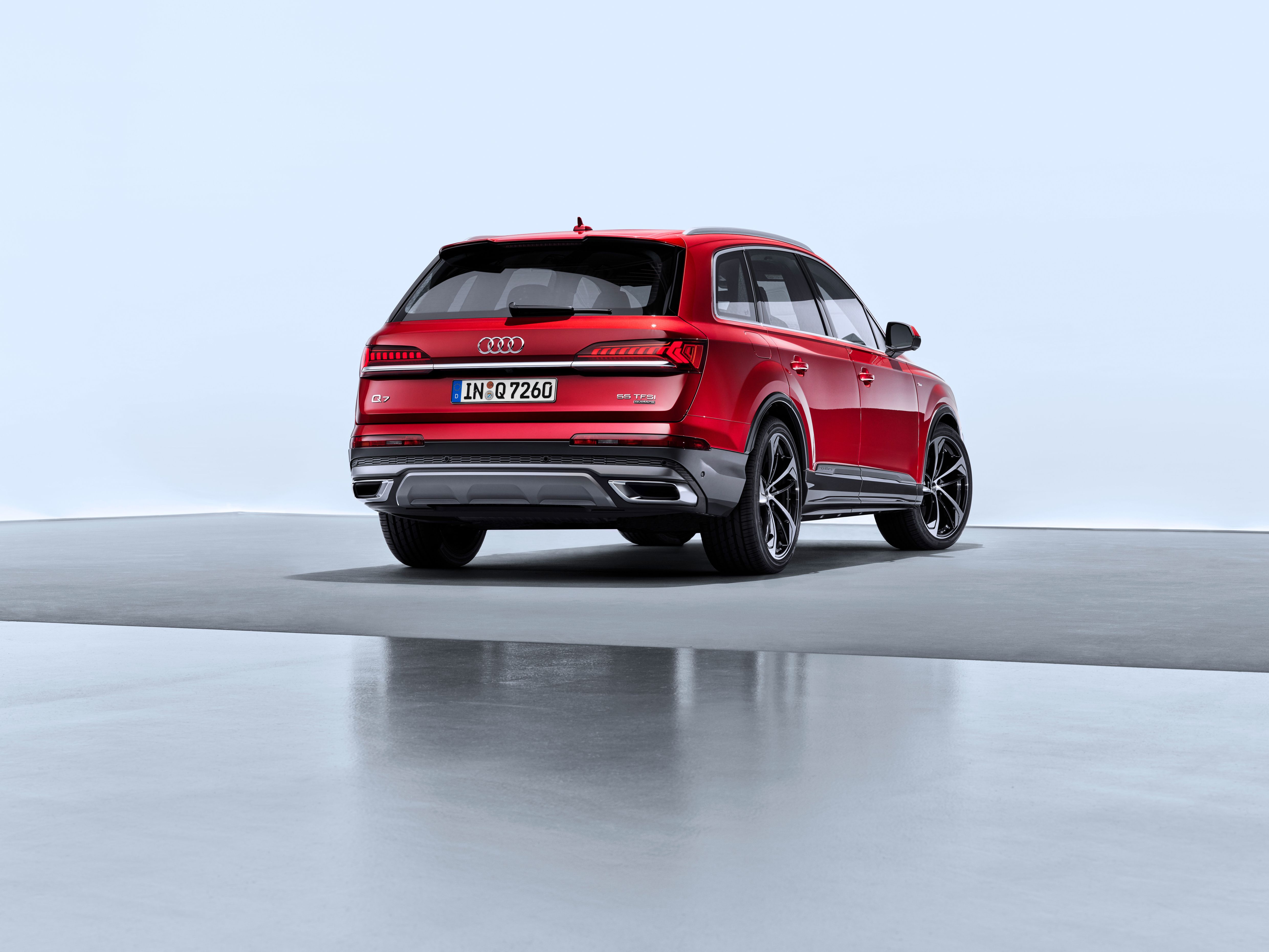
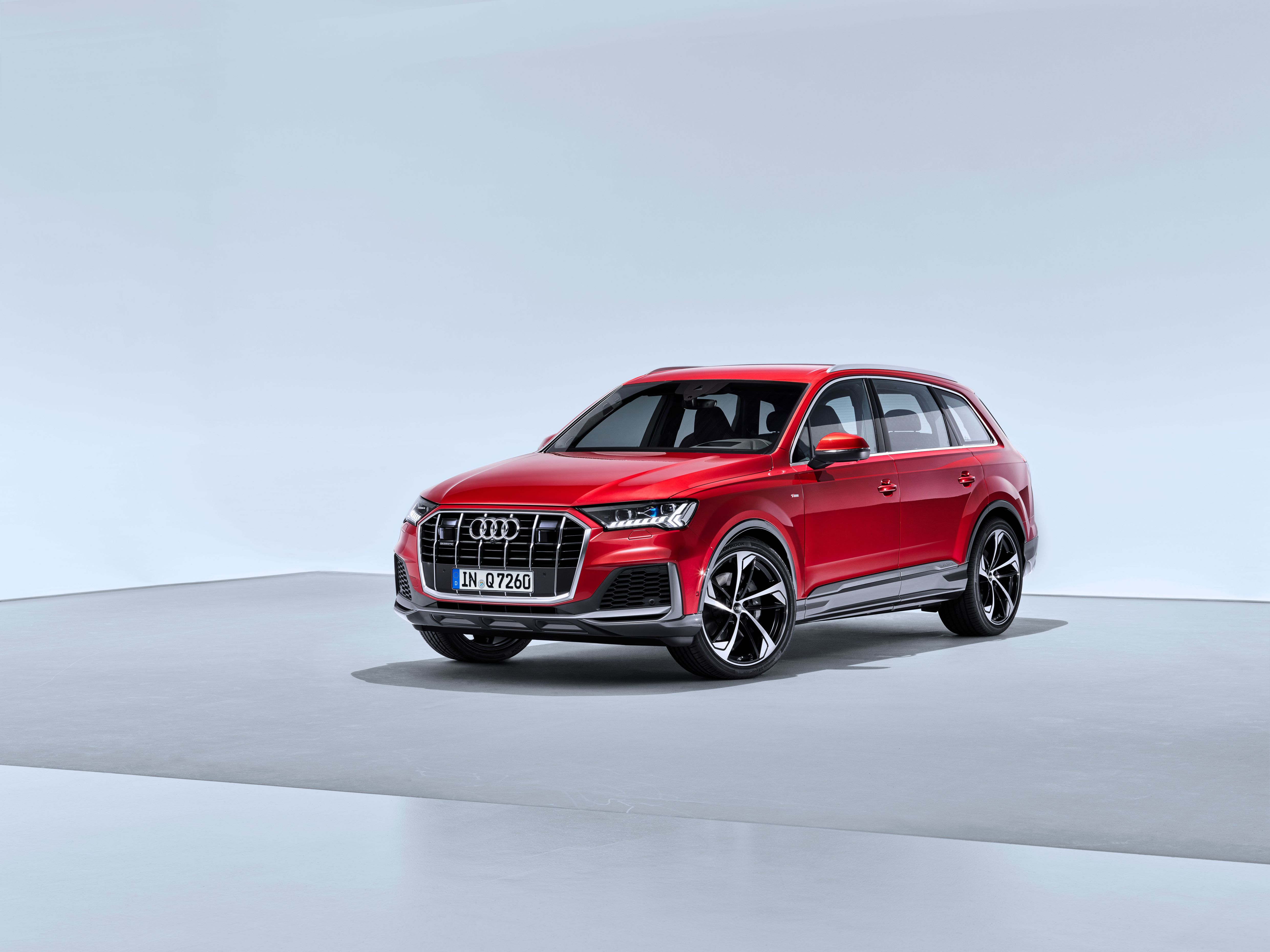
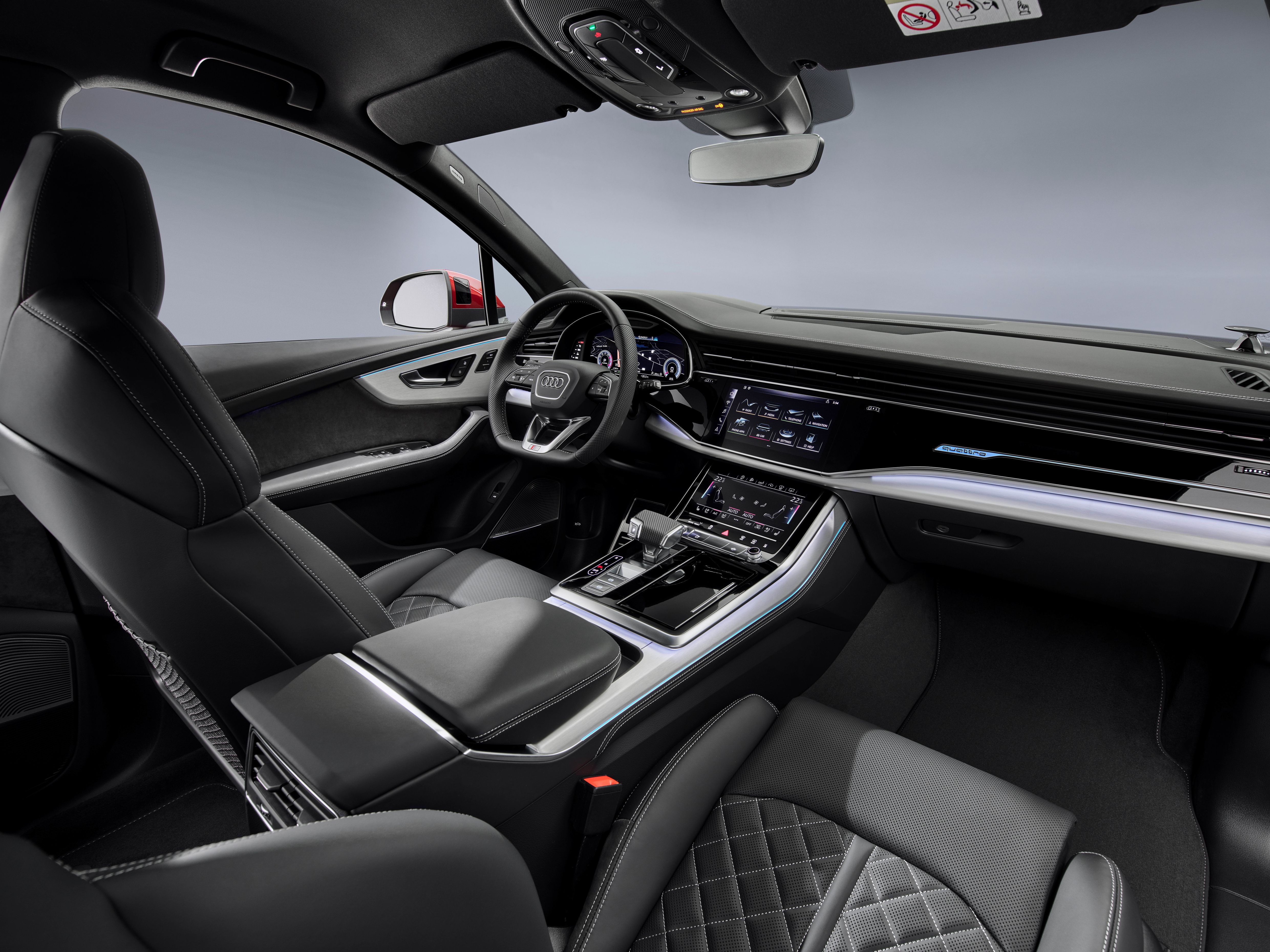
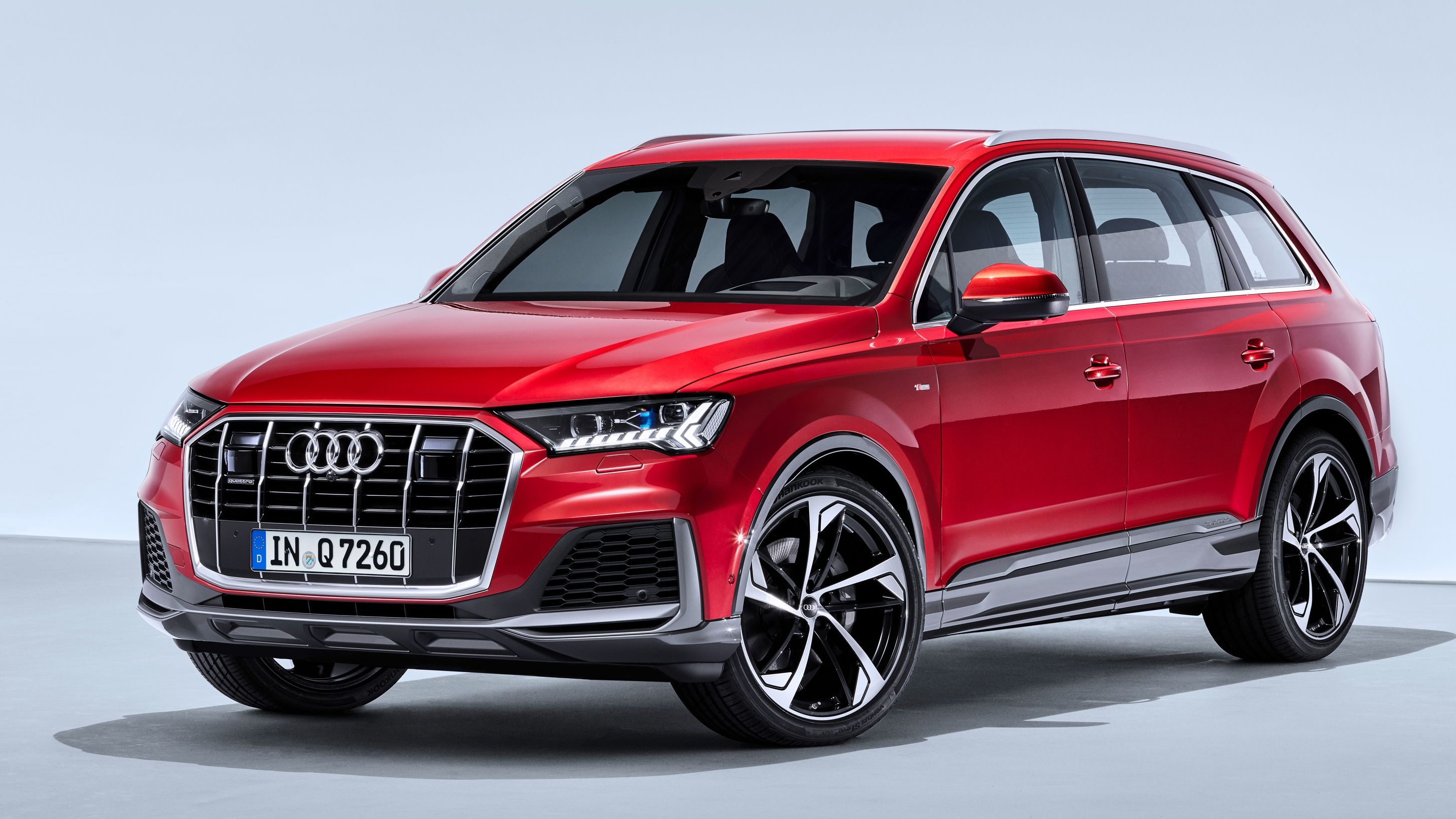
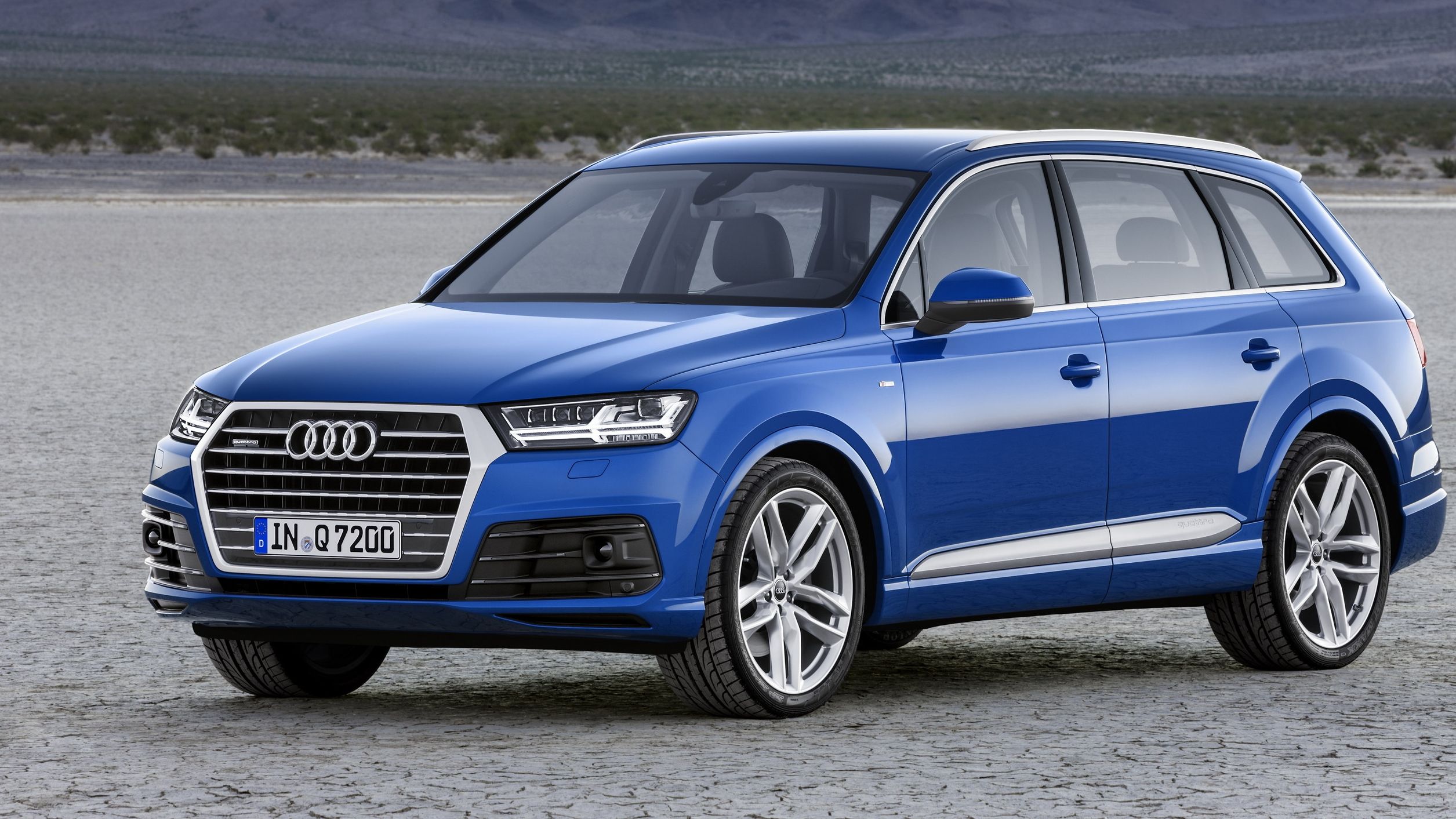
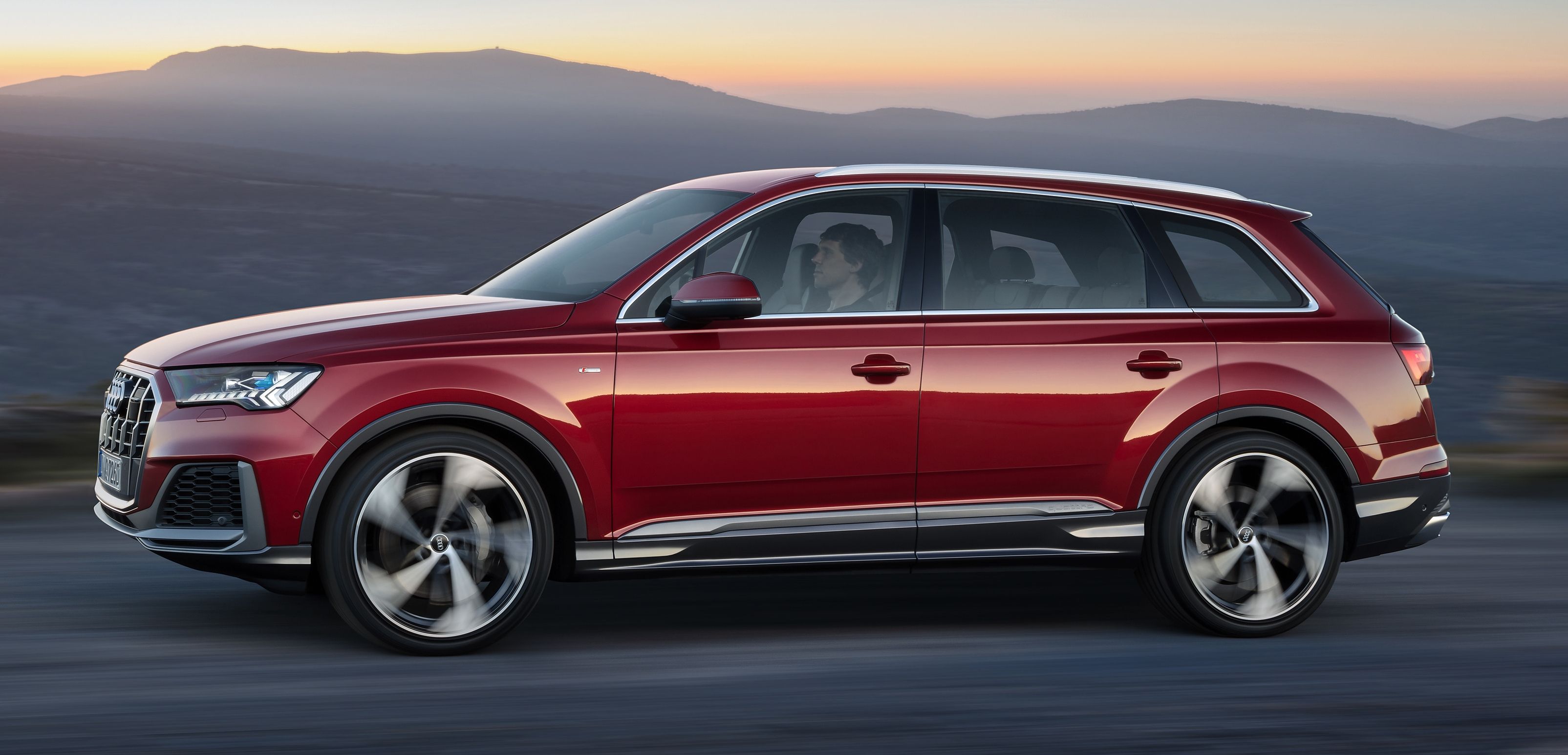
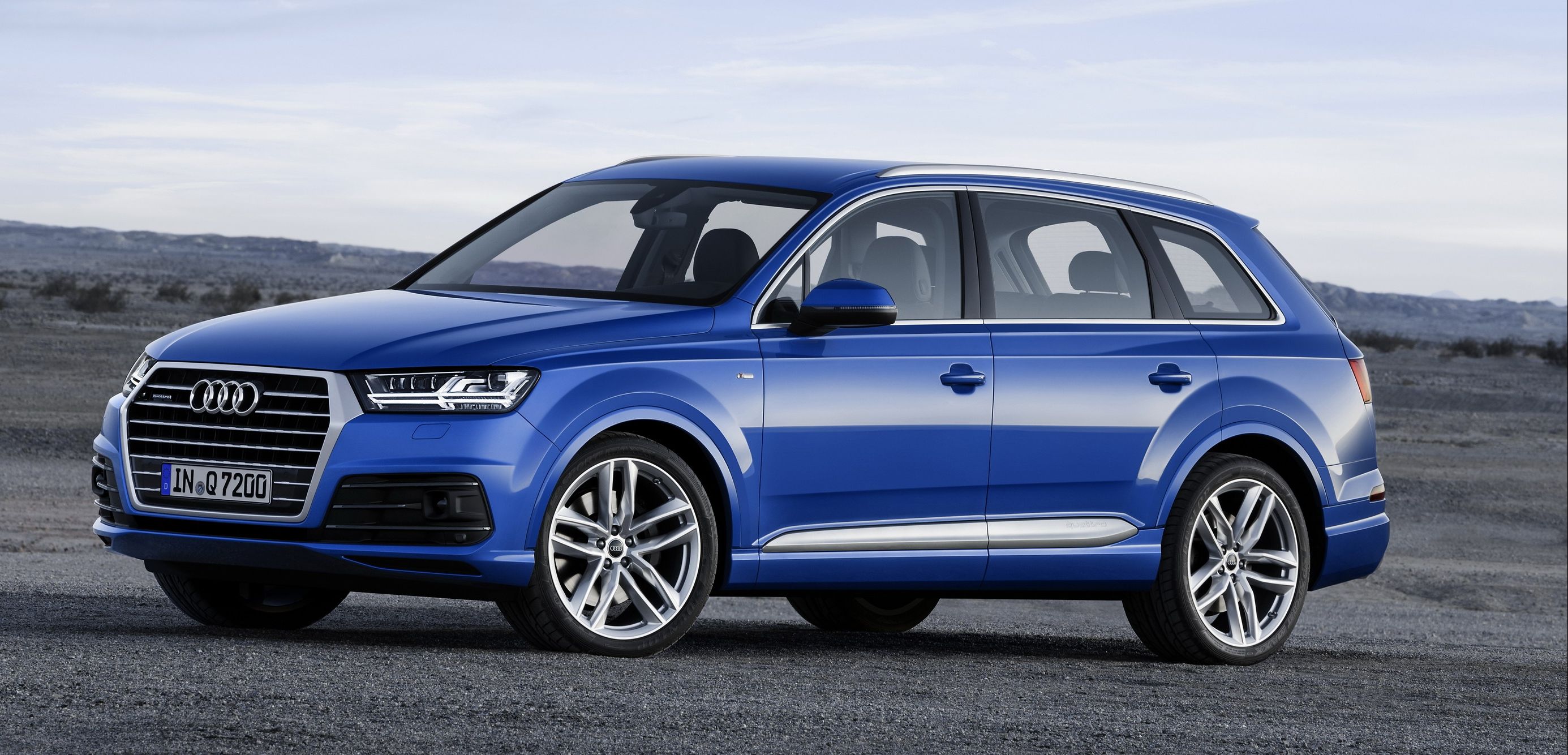
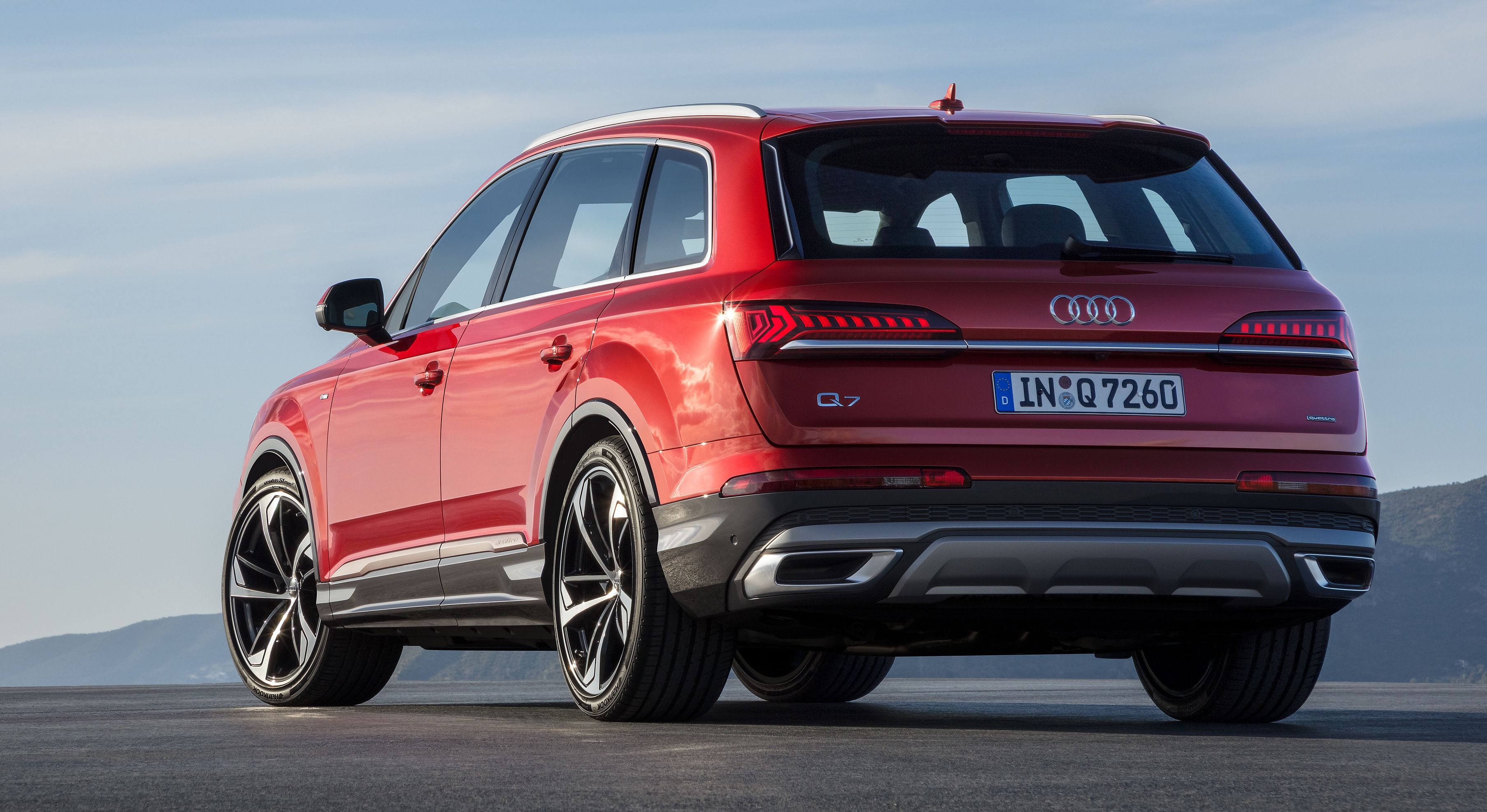
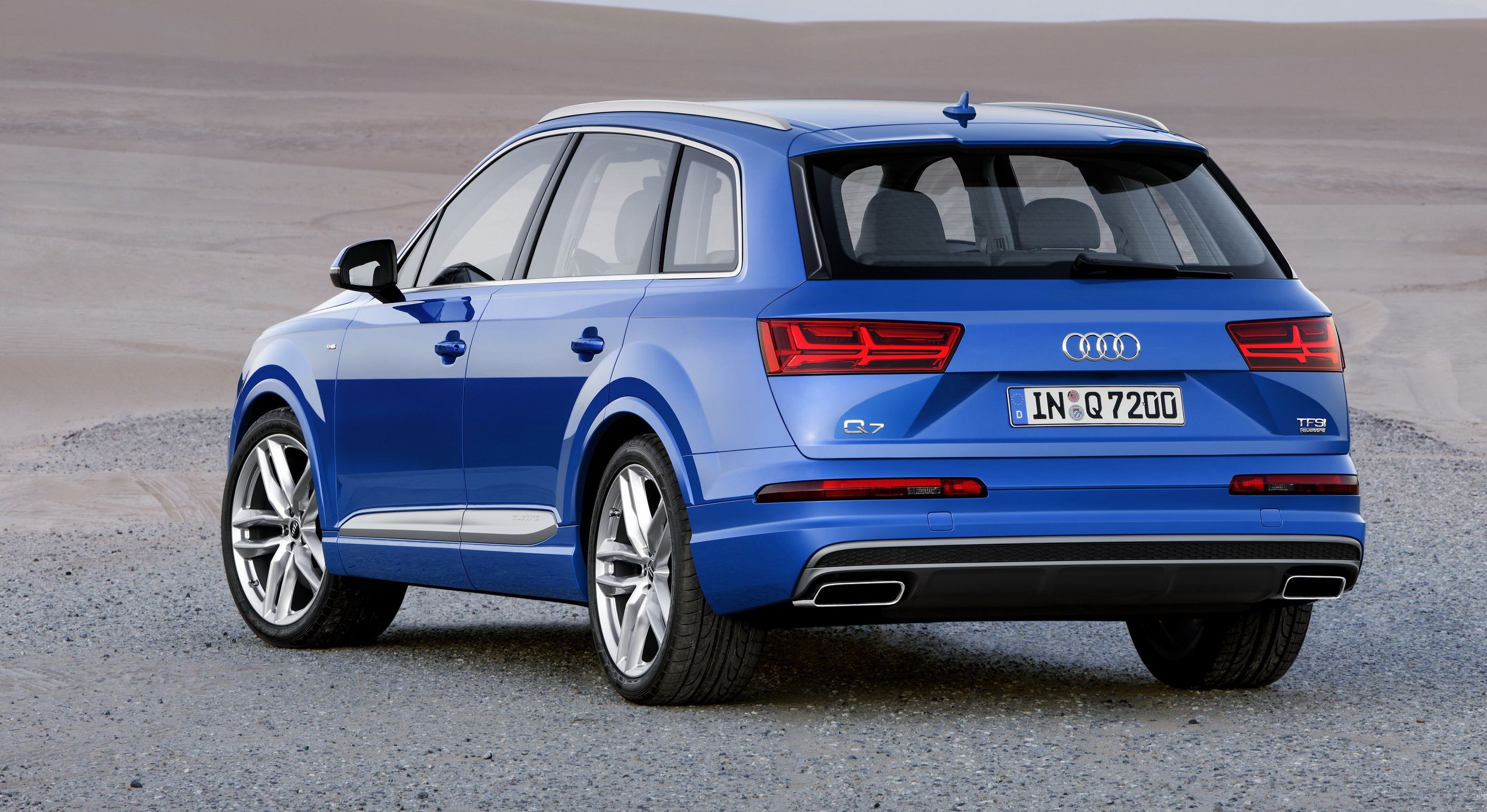
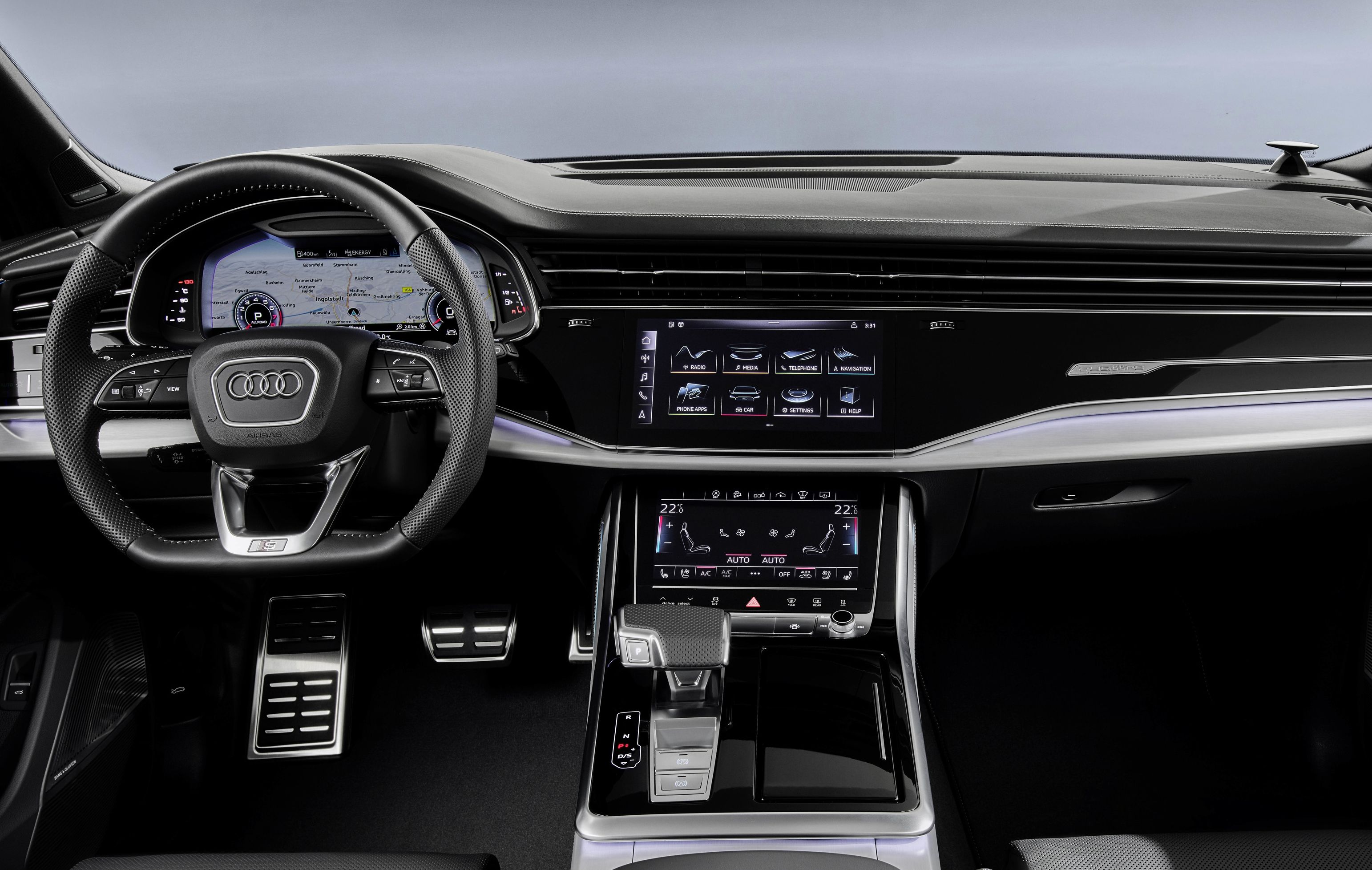
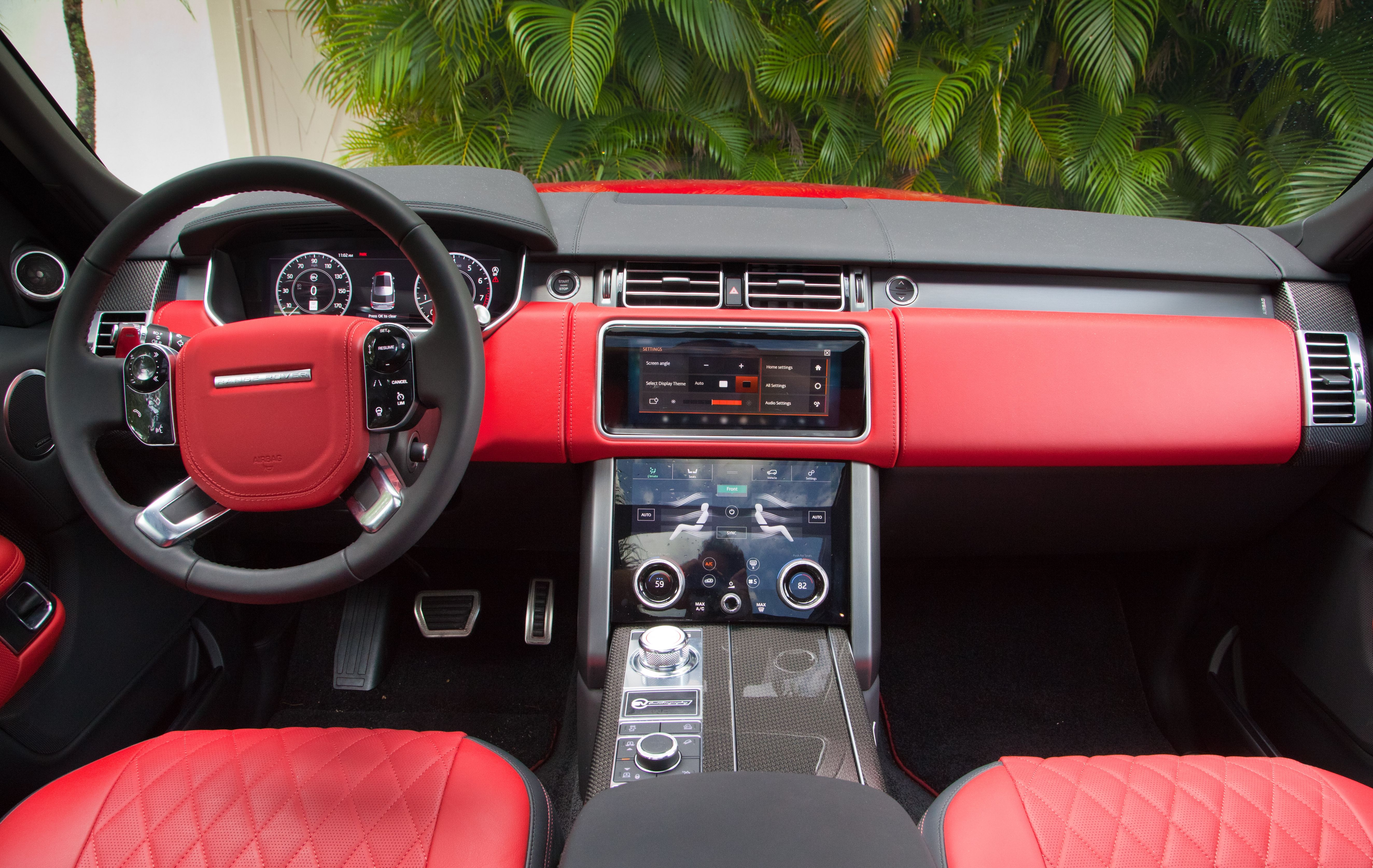
- Make: Array
- Model: 2017 - 2020 Audi Q7
- Engine/Motor: V6
- Horsepower: 333
- Torque: 324
- [do not use] Vehicle Model: Array
What's New for 2020?
|
|
ids=846807,846808 |
no_overlay=false |
before_label=2020 Audi Q7 |
after_label=2019 Audi Q7> |
On the outside, Audi has brought a lot of A8 and Q8 styling, including a larger grille, a fresh headlight design, and - believe it or not – the Q7 is now just a hair longer than the 2019 model. That extra length is attributed solely to the new front fascia which also has a fresh, more aggressive look. The interior now featured Audi’s twin-screen infotainment system – the same one that debuted in the Audi A6 – along with extra connectivity features like Car-to-X service.
The upgrades to the Q7’s powertrain is probably the most important of anything. The updated Q7 is not available as a mild-hybrid only, with that 48-volt electrical system now standard in all models from base to range-topping. There’s no official word on how this will affect performance, but it should, at the very least, improve fuel economy. A PHEV model will make its debut at a later time and is expected to have some 25 miles of all-electric range if not a little more.
If you want to know more about what differentiates the 2020 model from old models, check out our in-depth article on the Audi Q7’s 2020 design update.
Exterior
Design-wise, the all-new Q7 proves that Audi can use more than just a few nips and tucks while redesigning a vehicle. The SUV's body lines are now sharper, blending more squared-off surfaces front to rear. At the same time, the Q7 blends in with the rest of the Audi lineup, featuring headlamps, a singleframe grille and massive bumper intakes similar to those seen on many 2015 model year updates. On the other hand, the Q7's huge grille connects to the headlights for a unique appearance.
Changes are more subdued around back, where the new Q7 boasts a similar tailgate and a nearly identical bumper. Still, there are a lot of new features, including reshaped, narrower taillights and trapezoidal exhaust pipes. On the sides, the Q7's trademark character line has been repositioned closer to the sills, while the waistline has been redesigned for a crisper look.
If you find the all-new Q7 less bulky, then you eyes aren't playing tricks on you. The rebuilt SUV is 1.5 inches shorter and 0.6 inches narrower, while its height remained virtually unchanged. More importantly, the new Q7 is a lot lighter, with certain trims weighing up to 716 pounds less when compared to the previous model. That's a massive 26-percent drop from the first-gen Q7's curb weight. Impressive! Most of the weight was dropped from the chassis, which is 220 pounds lighter, and the body structure, which weights 156 pounds less thanks to a new design.
Customers get to choose between 11 exterior colors, four of which are new. An S line exterior package changes the standard bumpers, air inlets, side sills, roof spoiler the diffuser with sportier units, while the grille gets a dark gray, high-gloss finish instead of the standard high-gloss black.
Exterior Dimensions
|
Length |
5,050 MM (16.6 ft) |
|
Wheelbase |
2,990 MM (9.8 ft) |
|
Width |
1,970 MM (6.5 ft) |
|
Height |
1,740 MM (5.7 ft) |
Side-by-side comparison
Interior
Although the new Q7 is shorter and narrower, the cabin is actually longer and offers more head room and boasts an additional 0.8 inches between the first and second row of seats. Head room has increased by 1.6 inches up front and 0.9 inches in the second row. Cargo capacity has also increased. The seven-seat version offers 10.4 cubic feet of storage room that increases to 27.2 with the third-row seats folded. The five-seat comes with 31.4 cubic feet, which increases to 73.3 cubes with the second row folded flat.
Design-wise, the redesigned interior is a massive departure compared to the first-generation's cabin. Gone is the bulky center stack with its ancient A/C vents, knobs and display, now replaced by a taller center console. As a result, the A/C controls have been repositioned to the same level as the instrument cluster, while the display now resides on the dashboard. The latter also features a unitary design that stretches from the driver's to the passenger's side. A brand-new, three-spoke steering wheel replaces the previous unit, while the instrument cluster is all digital.
Naturally, the new Q7's cabin is packed with the finest materials we can expect from an automaker such as Audi. The seats can be wrapped in either Cricket or Valcona leather combined with Alcantara and there are seven different color combos to choose from. The high-grade leather is complemented by a host of aluminum and wood trims, including Beaufort walnut.
There's also a brand-new air conditioning system that uses fewer buttons and controls, with most options displayed on the TFT screen. The MMI system is also new, featuring intelligent suggestions for different tasks, including searching for specific song titles or navigation destinations. As far as entertainment goes, the Q7 comes with one or optionally two 10.1-inch tablets as rear seat monitors. The tablet is powered by NVIDIA Tegra 4 processors, is temperature-resistant and connected to the MMI navigation. What's more, it provides access to the radio, media, navigation and several car functions via WiFi.
Drivetrain
The redesigned Q7 launches with three different engines, with two additional drivetrains to becoming available at a later date. The gasoline lineup includes two units, a 2.0-liter four-cylinder and a 3.0-liter V-6. The four-banger -- primarily developed for the Asian and the U.S. market, and first-ever four-cylinder in the Q7 -- cranks out 252 horsepower and 272 pound-feet of torque. Performance and fuel consumption data has yet to be released, but I expect the 2.0 TFSI SUV to become the most fuel efficient, gas-powered Q7 yet.
Next in line is the 3.0-liter V-6 making 333 ponies and 325 pound-feet of torque. With this powerplant under the hood, the Q7 sprints from naught to 62 mph in 6.1 seconds and hits a top speed of 155 mph. With Audi having dropped the 4.2-liter V-8 for the new Q7, this is the most powerful conventional unit you can order. The mill is expected to return about 30 mpg.
Moving over to diesels, the familiar 3.0-liter TDI churns 272 horsepower and 442 pound-feet of torque, a 6-pony and 36-pound-feet improvement over the previous model. 62 mph comes in 6.3 seconds, while top speed is limited to 145 mph. Expect fuel economy to sit at around 41 mpg. A second version of the turbo-diesel, 3.0-liter V-6 will arrive at a later date with 218 horses and 369 pound-feet of twist.
Lastly, and arguably the biggest news in the drivetrain department, is the introduction of the Q7 e-tron, the first plug-in hybrid from Audi to include a diesel engine. The same 3.0-liter TDI is used here, but this time tuned to deliver 258 horsepower and it pairs to a 94 kW electric motor built into the eight-speed Tiptronic transmission. The combo generates 373 horses and 516 pound-feet of torque, making the SUV the quickest of the new Q7 lineup with a 0-to-62 sprint of only six seconds. The e-tron can travel up to 34.8 miles on electric power alone. When used as a hybrid, it consumes just 1.7 liters of fuel per 100 km, which converts to around 138 U.S. mpg.
In addition to the updated engines and the new plug-in hybrid drivetrain, the Q7 also gets a newly developed eight-speed, Tiptronic automatic transmission.
Drivetrain Specifications
|
Type |
3.0 TDI |
3.0 TFSI |
3.0 TDI |
2.0 TFSI |
|
Output |
272 HP |
333 HP |
218 HP |
252 HP |
|
Torque |
442 LB-FT |
324.5 LB-FT |
368.8 Lb-FT |
272.9 LB-FT |
|
0 - 100km/h (62 mph) |
6.3 seconds |
6.1 seconds |
TBA |
TBA |
|
Top speed |
234 km/h (145.4 mph |
250 km/h (155.3 mph) |
TBA |
TBA |
|
Fuel consumption |
41.3 US mpg |
30.5 US mpg |
TBA |
TBA |
|
CO2 emission |
239.8 g/mi |
288.1 g/mi |
TBA |
TBA |
Prices
2018 Audi Q7 Prices
|
Audi Q7 2.0T quattro Tiptronic Premium |
$49,900 |
|
Audi Q7 2.0T quattro Tiptronic Premium Plus |
$53,900 |
|
Audi Q7 2.0T quattro Tiptronic Premium |
$56,400 |
|
Audi Q7 2.0T quattro Tiptronic Premium Plus |
$60,400 |
|
Audi Q7 2.0T quattro Tiptronic Prestige |
$65,400 |
|
Model |
Price |
|
Audi Q7 3.0 TFSI quattro® Premium |
$54,800 |
|
Audi Q7 3.0 TFSI quattro® Premium Plus |
$58,800 |
|
Audi Q7 3.0 TFSI quattro® Prestige |
$64,300 |
Competition
BMW X5
Completely redesigned for the 2014 model year, the current X5 boasts the same bold styling, but numerous details upgrade it to BMW ’s refreshed design language. Higher-quality materials, improved comfort level, and updated technology are the main feats highlighting the revised interior.
As far as engines are concerned, U.S. customers now have a choice of three powertrains. The range begins with the sDrive35i and xDrive35i models, which are motivated by a 3.0-liter, inline-six rated at 300 horsepower and 300 pound-feet of torque. The range-topping version, the xDrive50i, gets an impressive 445 horses and 480 pound-feet of torque from its 4.4-liter, V-8 unit. Lastly, there's the xDrive35d, which uses a turbo-diesel 3.0-liter making 255 ponies and 413 pound-feet of twist. The BMW X5 retails from $52,800.
Read our full review on the BMW X5 here.
Porsche Cayenne
The second-gen Cayenne received its mid-cycle refresh for the 2015 model year, which brought revised front and rear fascias, a new steering wheel based on the 918 Spyder's and revised seating for better comfort. Extensive changes occurred under the hood as well. The new S E-Hybrid model received 36 additional horses for a new output of 416 ponies, while Cayenne S had its oomph increased to 420 horsepower despite having its 4.8-liter V-8 replaced with a 3.6-liter V-6.
The Cayenne Turbo now boasts 520 ponies and 553 pound-feet of torque, which accounts for a 20-horsepower gain and 37-pound-feet gain in twist. The Cayenne Diesel's 3.0-liter V-6 cranks out 240 horses and 406 pound-feet of torque. The 2015 Cayenne retails from $61,700, up $5,100 compared to the model it replaces.
Read our full review on the Porsche Cayenne here.
Conclusion
It took Audi quite a few years to roll out a replacement for its full-size, luxury SUV, and looking at this brand-new Q7 I can understand why. The SUV can finally blend among its smaller siblings thanks to its crisper design, while its revamped interior is arguably the most modern of any Audis as of 2015. The big news is, of course, the introduction of the e-tron Quattro version, which makes the Q7 the first production hybrid with a diesel engine. The new Q7 has massive potential against its German competitors, and we might just witness a significant migration from BMW and Porsche to Audi dealerships in a year or so.
Update History
Updated 11/11/2015: Audi announced prices for the 2017 Q7 SUV which will be put on sale at the beginning of 2016. The model will be offered in three trim levels: Premium, Premium Plus and Prestige with prices starting from $54,800.
Updated 12/18/2014: Audi unveiled the first promo video for the new-generation Q7 SUV. Enjoy!
Updated 12/26/2014: Audi unveiled a new video in which it highlights the 3D sound systems inside the all-new Q7. The system includes one, or optionally two Audi tablets with 10.1 inch screens and is connected to the MMI navigation plus via WiFi. Enjoy!
Updated 01/23/2015: We've added a series of new images from the car's official debut at the 2015 Detroit Auto Show. Check the new images in the "Pictures" tab.
Updated 12/12/2014: Audi unveiled the official details on the new generation Q7 which will go on sale in the spring of 2015. The model will be about 716 pounds lighter and feature a completely new face. Details after the jump.
Spy Shots
May 27, 2014 - Next Audi Q7 Goes For Another Testing Session
April 15, 2014 - Next Generation Audi Q7 Continues Testing

